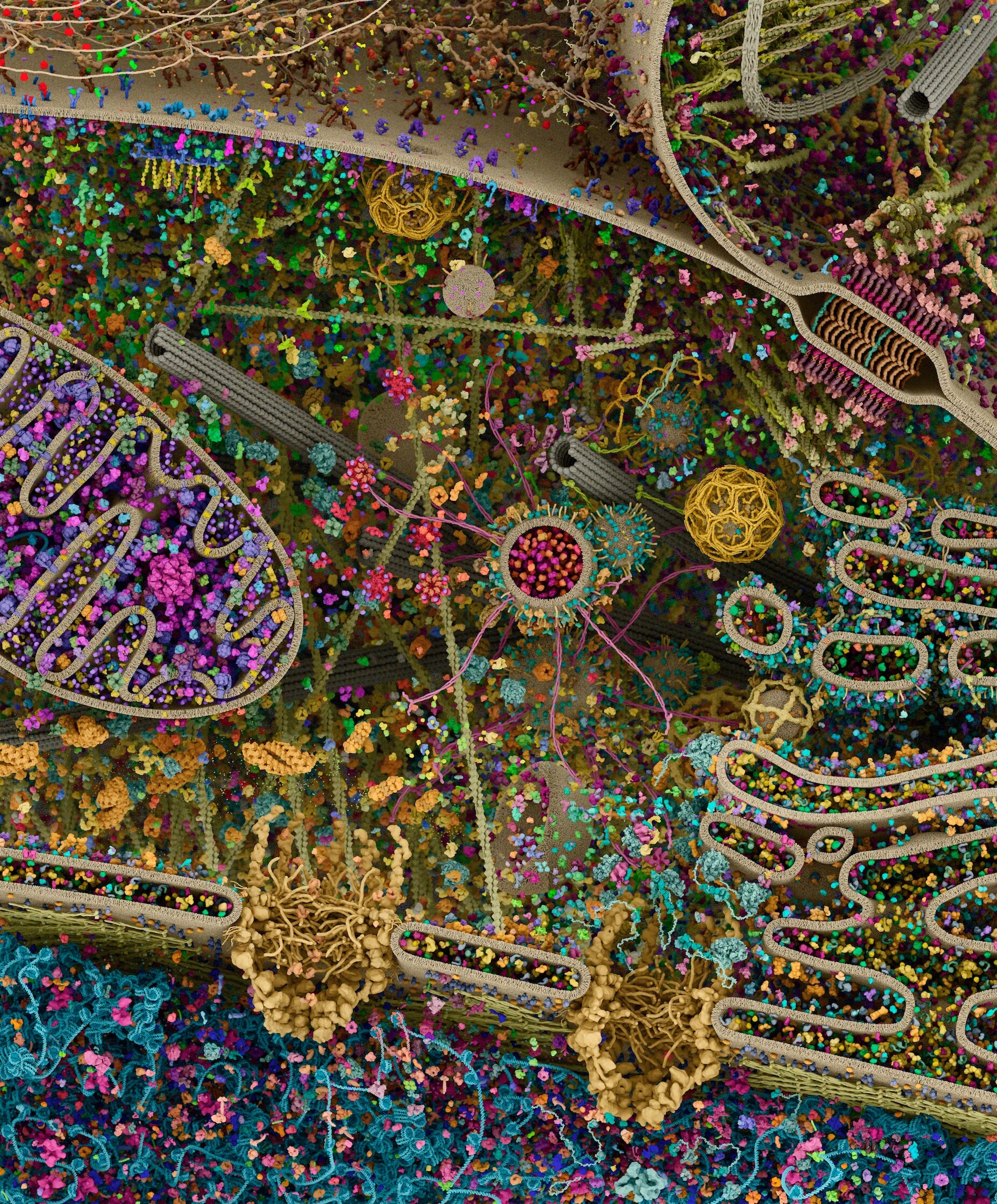 Branched-Chain Amino Acid https://en.m.wikipedia.org/wiki/Branched-chain_amino_acid CHONS Amino Precursor Nixtamalization Neutral pH 7.40 Honey 70% Castor 10% Niacin 5% MSM 5% Citrus 5% Minerals 5% .. Castor DMSO Betaine HCL Glycerol Glycine Magnesium Chloride Vitamin C .. all the Nitrogen & Sulfur combinations seem to require MG2+ "Magnesium" to function correctly. Thiamine Taurine Cysteine Methionine Methylene Blue Fenbendazole NAC SAM-e Glutathione .. Molecular Motors Cellular Rotation F0 F1 Synthase Proton Hydrogen Magnesium Ion NAD ATP DNA .. Sulfur Toxicity Hyperhomocysteinemia Cysteine Phosphorus Toxicity Choline Trimethylaminuria Nitrogen Toxicity [Sulfur Toxicity] Hyperhomocysteinemia Methyl-Hydrogen-Folate MTHFR Methionine Histamine Homocysteine Cysteine Choline Betaine Methylamine Trimethylamine Trimethylaminuria [Nitrogen Toxicity] TMAO TMAU Acetaldehyde Dehydrogenase Fomepizole (Nitrogen) Disulfiram (Sulfur) Acetyl-CoA N-Acyl Amide Acetyl Amine Amino Acid Aldehyde Acetaldehyde Histamine Homocysteine .. pH Alkaline Detox Bath Salts Baking Soda Epsom Salt Sodium Bicarbonate Magnesium Sulfate .. Olive Oil (95%) DMSO (4%) Magnesium Chloride Potassium Citrate Citric Acid Pine Terpinene Vinegar Honey Gluconate Dextran Carbanion Caramelization Decarboxylation .. Fenbendazole Castor Oil Pine Terpinene NAC Niacin TMG MSM/DMSO Quercetin Magnesium Chloride .. Sodium Sulfate Vs Sodium Sulfide https://en.m.wikipedia.org/wiki/Sodium_sulfate https://en.m.wikipedia.org/wiki/Sodium_sulfide https://en.m.wikipedia.org/wiki/Sodium_citrate https://en.m.wikipedia.org/wiki/Chondroitin_sulfate https://en.m.wikipedia.org/wiki/Dodecanol https://en.m.wikipedia.org/wiki/Sodium_dodecyl_sulfate https://en.m.wikipedia.org/wiki/Thrombocytopenia https://en.m.wikipedia.org/wiki/Dextran_sulphate_sodium .. DSS Dextran Sodium Sulfate Colitis Thrombocytopenia Familial Alopecia https://en.m.wikipedia.org/wiki/Thrombocytopenia Coagulation Disorder Low levels of platelets (thrombocytes) in the blood. Bone marrow not making enough platelets, body destroying platelets, spleen holding too many platelets. .. Small Cell Lung Cancer Presenting as Severe Thrombocytopenia and Refractory Hypokalemia https://pmc.ncbi.nlm.nih.gov/articles/PMC4052468/ platelet count had dropped with mild pain in extremities. Serum potassium was low. .. might have figured this DSS puzzle out, all of the negative side effects Sodium causes in the tests, Potassium reverses them. so by doing the exact same thing but swapping buffered 7 pH Potassium Citrate instead of high Alkaline Sodium. this may bind up HIV & also heal the body. .. DSS Dextran Sodium Sulfate Negatively Charged Alkaline Electrophilic Compound Carboxylic Acid Positively Charged Acidic https://pubchem.ncbi.nlm.nih.gov/compound/Dextran-Sulfate-Sodium Dextran Sulfate Sodium Salt: A Game-Changer in Antiviral Research https://www.losanglesnewswire.com/dextran-sulfate-sodium-salt-a-game-changer-in-antiviral-research Unveiling Colitis: A Journey through the Dextran Sodium Sulfate-induced Model https://pmc.ncbi.nlm.nih.gov/articles/PMC11063560/ The Alleviation of Dextran Sulfate Sodium (DSS)-Induced Colitis Correlate with the logP Values of Food-Derived Electrophilic Compounds https://pmc.ncbi.nlm.nih.gov/articles/PMC9774124/ Lithospermic acid alleviates oxidative stress and inflammation in DSS-induced colitis through Nrf2 https://www.sciencedirect.com/science/article/abs/pii/S001429992500144X .. dextran sulphate owes its anti-HIV-1 activity mainly to inhibition of virus binding to its target cells. The anti-HIV-1 activity of dextran sulphate is highly dependent on its sulphate content. .. Gluconate Gluconic Acid C6H12O7 Dextran Alpha Glucan C18H32O16 .. IHN Inositol Hexanicotinate MSM Methylsulfonylmethane NAC N-Acetyl Cysteine Vitamin C (Buffered) Ascorbate Potassium .. The Biomedical Uses of Inositols: A Nutraceutical Approach to Metabolic Dysfunction in Aging and Neurodegenerative Diseases https://pmc.ncbi.nlm.nih.gov/articles/PMC7554709/ .. Redox Rhythms Biorhythm Reset Intercellular Homeostasis Inositol (Sugar) Hexanicotinate Nicotinate (Nitrogen) MSM (Sulfur) Potassium Citrate found the combination that works best for all my random problems. Inositol Hexanicotinate Methylsulfonylmethane its like a wave of cool ocean wind, amazing. Grapefruit Juice Potassium Citrate to break up any Calcification or excess Sodium in mitochondria. it appears to be the combination to unlock Coenzyme-A, that is disrupted by toxins & pesticides. rain water has both Nitrogen & Sulfur drawn up from the ocean, and the right amout of Oxygen to make it perfect. nobody knows about this and the connection to Coenzyme-A, and it looks identical to NAC N-Acetyl Cysteine, except NAC dosnt have the same calming effect. once Coenzyme-A is unlocked, all the poisons fall out almost instantly. Chelation Therapy seem to always drop the toxic load across the entire body, requiring lots of perfectly timed medication? what ive noticed is one capsule each of MSM & IHN, both white powders, and urine comes out dark, totally chelated out toxins. IHN releases Niacin for 12 hours, Methylated Niacin. Inositol Nicotinate, Non-flush Niacin, Inositol is a Methyl Doner. Niacin needs a Methyl Doner as a buffer, and Sulfate to metabolize toxic sludge, pesticides ect.. Methylated Niacin & MSM Methyl Donor Methylation Osmolyte Inositol Betaine i didnt ever make that connection, all of the years learning, it never occurred to me. Methylated Niacin Buffered Niacin thats crazy, all this time fiddling with Betaine, and Inositol is basically a Osmolyte & Methyl. and the only difference between this & Methylene Blue is the blue part is Chloride folding a Polyphenol into a specific spectrum. the non-flush Inositol Niacin is totally under reported, almost no significant documented test results, it normally feels like nothing is happening at all, until the MSM is applied. and it only takes a single capsule of each, for 12 hours of metabolic movements. Niacin needs a Methyl Doner as a buffer, and Sulfate, to metabolize toxic sludge, pesticides ect.. Methylated Niacin Buffered Niacin Betaine and Inositol basically a Osmolyte & Methyl. Niacin is required break down Formaldehyde. Aldehyde Acetaldehyde Formaldehyde Acetaldehyde Dehydrogenase Niacin with MSM (Sulfate) helps make Coenzyme-A (CoA) for Glutathione & Redox. add some good minerals to that breaks up kidney & liver sludge. Potassium Citrate Magnesium Citrate Calcium Citrate Sodium Bicarbonate .. Reversing Chronic Kidney Disease with Niacin and Sodium Bicarbonate https://www.orthomolecular.org/resources/omns/v17n22.shtml Niacin Was, Is, and Always will be Essential to Life and the Prevention of Cardiovascular Disease https://www.orthomolecular.org/resources/omns/v20n03.shtml .. GPR109A Niacin Receptor 1 (NIACR1) Hydroxycarboxylic Acid Receptor 2 https://en.m.wikipedia.org/wiki/Hydroxycarboxylic_acid_receptor_2 Butyric Acid https://en.m.wikipedia.org/wiki/Butyric_acid .. Nicotinic Acid Decarboxylation https://chempedia.info/info/nicotinic_acid_decarboxylation/ .. apparently stomach acids get weak as we get older, Hydrogen Chloride HCL needs to be higher to metabolize Magnesium into MG2+ & split water molecules into free Hydrogen, for the Proton Pumps to pumup out MG2+ at 400 cycles a second, that makes NAD & ATP for cellular energy. all the medications that really get down & kill cancers & parasites use the Nitrogen Sulfur combo, and thats what breaks down carbohydrates into energy via Coenzyme-A. problem is for that to even happen seems to requires Magnesium to do anything for NAD & ATP cellular metabolism. so my take is Magnesium is step one, Nitrogen Sulfur is like step ten. Magnesium blood tests are inaccurate, and is difficult to get into the cells with the correct ion state MG2+, so it needs a binder component like amino acids or Vitamin C. then Magnesium flips Triglycerides & LGL into HDL (good Cholesterol), then converts into Hormones, Steroids & Myelin. .. Methylene Blue Potential side effects include headache, diarrhea, and low potassium and magnesium levels. Warning in patients with G6PD deficiency and those taking medications that affect serotonin levels. Magnesium acts as a cofactor for tryptophan hydroxylase, an enzyme involved in serotonin synthesis. It also plays a role in serotonin receptor binding. Magnesium is involved in regulating other important neurotransmitters like GABA (inhibitory) and glutamate (excitatory). It helps regulate their release and interacts with NMDA receptors. Potassium, Magnesium, and Calcium is associated with a reduced risk of stroke. .. anything to do with Nitrogen & Sulfur requires extra Magnesium & Potassium. oil based vitamins (ADEK) require Magnesium & Potassium to form good cholesterol like Myelin. Molecular Motors, Cellular Rotation & Proton Pumps that form NAD ATP DNA, require Magnesium & Potassium Ions. magnesium naturally fixes Potassium deficiency. .. Myelin Myelitis refers to inflammation of the spinal cord that damages the myelin sheath, a protective covering of nerve fibers. .. Magnesium L-Threonate Magnesium L-threonate is a magnesium salt of L-threonic acid having the formula Mg(C4H7O5)2. Threonic acid is a sugar acid derived from threose. The l-isomer is a metabolite of ascorbic acid (vitamin C). .. Magnesium regulates activity of the renal outer medullary potassium (ROMK) channel. Intracellular magnesium is inversely proportional to the open ROMK channel pore. Therefore low intracellular magnesium causes more ROMK channels to open, allowing more K+ efflux into the urine. Magnesium's Role in Retinol Metabolism: Magnesium is required for the activation of enzymes involved in vitamin A metabolism. This suggests that adequate magnesium levels are necessary for optimal vitamin A function. Magnesium deficiency can lead to an accumulation of nitrogen in the form of nitrates and amides, rather than their incorporation into proteins. .. Magnesium Taurinate Taurinate = NAC Threonate = Ascorbate https://pubchem.ncbi.nlm.nih.gov/compound/Magnesium-taurinate
| author | mikewick77 |
|---|---|
| permlink | intercellular-homeostasis |
| category | intercellular |
| json_metadata | "{"app":"hiveblog/0.1","description":"Intercellular Homeostasis","format":"markdown","image":["https://images.hive.blog/DQmaY28WA4cSD3XPyaeCvgBRM2ABK3FkbXJtdkpwpVtikHx/gael-mcgill-cellularlandscape-digizyme-4180880132.jpg"],"links":["https://en.m.wikipedia.org/wiki/Branched-chain_amino_acid"],"tags":["homeostasis"]}" |
| created | 2025-01-16 16:28:24 |
| last_update | 2025-07-21 04:16:42 |
| depth | 0 |
| children | 62 |
| last_payout | 2025-01-23 16:28:24 |
| cashout_time | 1969-12-31 23:59:59 |
| total_payout_value | 0.197 HBD |
| curator_payout_value | 0.198 HBD |
| pending_payout_value | 0.000 HBD |
| promoted | 0.000 HBD |
| body_length | 10,475 |
| author_reputation | 545,063,717,246 |
| root_title | "Intercellular Homeostasis" |
| beneficiaries | [] |
| max_accepted_payout | 1,000,000.000 HBD |
| percent_hbd | 10,000 |
| post_id | 140,049,530 |
| net_rshares | 773,600,845,680 |
| author_curate_reward | "" |
| voter | weight | wgt% | rshares | pct | time |
|---|---|---|---|---|---|
| mes | 0 | 773,600,845,680 | 100% |
Potassium Citrate pH Between 7 and 9 Importance of Stratum Corneum Acidification to Restore Skin Barrier Function in Eczematous Diseases https://pmc.ncbi.nlm.nih.gov/articles/PMC10861303/ Potassium, Magnesium, and Calcium: Their Role in Both the Cause and Treatment of Hypertension https://pmc.ncbi.nlm.nih.gov/articles/PMC8109864/ .. Gilbert Ling Raymond Damadian https://www.gilbertling.org/theories-and-publications.html Nano-protoplasm: the Ultimate Unit of Life Intercellular Potassium / Sodium Cardiac Glycoside Nano Protoplasm Water Structure Hydrophilicity Hydrophobicity Hormone Progesterone Red blood cell's cytoplasmic protoplasm, which comprises almost entirely of hemoglobin, water, K+ and ATP. .. Potassium Rubidium Selenium Tellurium NAC Selenium Potassium Polyphenol Terpine Castor https://en.m.wikipedia.org/wiki/Anti-structure https://en.m.wikipedia.org/wiki/Potassium_selenide https://en.m.wikipedia.org/wiki/Selenium https://en.m.wikipedia.org/wiki/Tellurium .. Selenium Tellurium Selenoenzyme Selenoprotein Selenocysteine Selenocystine Selenomethionine Selenium is a chemical element; it has the symbol Se and atomic number 34. It has various physical appearances, including a brick-red powder, a vitreous black solid, and a grey metallic-looking form. It seldom occurs in this elemental state or as pure ore compounds in Earth's crust. Selenium is found in metal sulfide ores, where it substitutes for sulfur. Commercially, selenium is produced as a byproduct in the refining of these ores. .. is Selenium doing something with Potassium & Sulfur? Flipping Anion & Cation? Anti-Structure Potassium Sulfate anti-structure, called the antifluorite structure, anions and cations are swapped. .. Selenium belongs to the category of redox nonmetals. Selenium is included in the same class with sulfur metalloids, which implies that selenium should be able to substitute for sulfur in biological complexes. As a congener of sulfur, selenium becomes part of a protein's structure as selenocysteine and selenomethionine, not as a selenium atom ligated directly to the protein as a prosthetic group. The former are the active cofactors in selenium enzymes. The biological significance of Se is predominantly dependent on its incorporation into the selenocysteine (Sec) for synthesis of selenoproteins (SePs), such as thioredoxin reductase family enzymes and glutathione peroxidase family enzymes. .. Methane, arsenic, selenium and the origins of the DMSO reductase family https://www.nature.com/articles/s41598-020-67892-9 N-Acetyl-l-cysteine Enhances the Effect of Selenium Nanoparticles on Cancer Cytotoxicity by Increasing the Production of Selenium-Induced Reactive Oxygen Species https://pmc.ncbi.nlm.nih.gov/articles/PMC7254790/ https://www.sciencedirect.com/topics/medicine-and-dentistry/selenium-ion Rubidium and potassium levels are altered in Alzheimer’s disease brain and blood but not in cerebrospinal fluid https://pmc.ncbi.nlm.nih.gov/articles/PMC5109650/ The increased potassium intake improves cognitive performance and attenuates histopathological markers in a model of Alzheimer's disease https://www.sciencedirect.com/science/article/pii/S0925443915002811 .. Epidermal Barrier NHE1 Sodium-Proton Antiporter Stratum Corneum Corneodesmosome Corneocyte Lamellae Filaggrin (FLG) Ceramide Serine Protease (SP) Acidifying .. Sodium-Calcium Exchanger Potassium-Dependent Sodium-Calcium Exchanger Calcium-Activated Potassium Channel Paroxysmal Depolarizing Shift https://en.m.wikipedia.org/wiki/Sodium-calcium_exchanger https://en.m.wikipedia.org/wiki/Potassium-dependent_sodium-calcium_exchanger https://en.m.wikipedia.org/wiki/Paroxysmal_depolarizing_shift https://en.m.wikipedia.org/wiki/Calcium-activated_potassium_channel
| author | mikewick77 |
|---|---|
| permlink | sq8zi2 |
| category | intercellular |
| json_metadata | {"app":"hiveblog/0.1","links":["https://pmc.ncbi.nlm.nih.gov/articles/PMC10861303/"]} |
| created | 2025-01-17 19:30:00 |
| last_update | 2025-01-21 18:13:54 |
| depth | 1 |
| children | 6 |
| last_payout | 2025-01-24 19:30:00 |
| cashout_time | 1969-12-31 23:59:59 |
| total_payout_value | 0.000 HBD |
| curator_payout_value | 0.000 HBD |
| pending_payout_value | 0.000 HBD |
| promoted | 0.000 HBD |
| body_length | 3,821 |
| author_reputation | 545,063,717,246 |
| root_title | "Intercellular Homeostasis" |
| beneficiaries | [] |
| max_accepted_payout | 1,000,000.000 HBD |
| percent_hbd | 10,000 |
| post_id | 140,079,894 |
| net_rshares | 0 |
Selenium is not necessary a cure for anything, and highly toxic in excess, but whats fascinating is it Sulfur binding & swapping attributes. NAC in my opinion is a fantastic tool to break up toxic acids that bind & lock out Intercellular Potassium. MSM is DMSO2, what i suspect is its help NAC softening biofilms h plaque. Potassium Citrate normally high Alkali 8 Ph, seems to just need a little extra Citric to make more balanced. Magnesium appears to be an enzyme flipper & required for all kind of things. it is fascinating that NAC breaks up both Kidney & Gallbladder, Liver stones, or plaque. thats basically the while idea, break up toxic acids, binding up Potassium deposits, and put it back in cells. it would be nice to know if Intracellular Potassium Homeostasis would actually protect Selenium, Molybdenum, Zinc & Iron from falling out of place, so the need to supplement would be very minimal. i dont like to be required to take trace minerals for a regime, anything toxic at large doses is a red flag. just want them to stay put. Potassium seems to check the boxes for this to happen, but still not sure yet just seems when cellular Homeostasis is knocked out via low Intracellular Potassium, the rest fall out of place. i have e noticed even a regular B Vitamin makes me flush, what that tells me is the NAC, MSM & Potassium is holding the Nitrogen in place, so its no longer needed. seem to have fixed the Magnesium oil with Potassium Citrate Ph problem, added more Citric Acid and did the Ph taste test, if it tastes salty add more Citric until it tasts tangy, learned that trick from a farmer testing soil. seems to be better for the dry skin it was causing.
| author | mikewick77 |
|---|---|
| permlink | sqeq88 |
| category | intercellular |
| json_metadata | {"app":"hiveblog/0.1"} |
| created | 2025-01-20 21:55:18 |
| last_update | 2025-01-20 21:55:18 |
| depth | 2 |
| children | 0 |
| last_payout | 2025-01-27 21:55:18 |
| cashout_time | 1969-12-31 23:59:59 |
| total_payout_value | 0.000 HBD |
| curator_payout_value | 0.000 HBD |
| pending_payout_value | 0.000 HBD |
| promoted | 0.000 HBD |
| body_length | 1,691 |
| author_reputation | 545,063,717,246 |
| root_title | "Intercellular Homeostasis" |
| beneficiaries | [] |
| max_accepted_payout | 1,000,000.000 HBD |
| percent_hbd | 10,000 |
| post_id | 140,164,374 |
| net_rshares | 0 |
Heparan Phosphatidylinositol .. Nerve Growth Factor https://en.m.wikipedia.org/wiki/Nerve_growth_factor cystine https://en.m.wikipedia.org/wiki/Cystinosis Cystinosis is a lysosomal storage disease characterized by the abnormal accumulation of cystine, the oxidized dimer of the amino acid cysteine. A rare autosomal recessive disorder resulting from accumulation of free cystine in lysosomes, eventually leading to intracellular crystal formation throughout the body. Cystinosis is the most common cause of Fanconi syndrome in the pediatric age group. Fanconi syndrome occurs when the function of cells in renal tubules is impaired, leading to abnormal amounts of carbohydrates and amino acids in the urine, excessive urination, and low blood levels of potassium and phosphates. .. Malaria and Cancer: a critical review on the established associations and new perspectives https://infectagentscancer.biomedcentral.com/articles/10.1186/s13027-021- N-acetyl-cysteine is associated to renal function improvement in patients with nephropathic cystinosis https://link.springer.com/article/10.1007/s00467-013-2705-3 A forgotten epidemic that changed medicine: measles in the US Army, 1917–18 https://pmc.ncbi.nlm.nih.gov/articles/PMC6617519/ .. Malaria Polyomaviruses comes up with results, but Malaria HV40 search result is locked. IARC Monographs consider the following agents for the first time: malaria (a disease caused by infection with the Plasmodium parasite) and four polyomaviruses: the simian virus SV40, and the BK, JC, and Merkel cell polyomaviruses. Malaria and Some Polyomaviruses (SV40, BK, JC, and Merkel Cell Viruses) Antibodies against malaria and Epstein-Barr virus in childhood Burkitt lymphoma: a case-control study in Uganda Carcinogenicity of malaria and of some polyomaviruses https://publications.iarc.fr/Book-And-Report-Series/Iarc-Monographs-On-The-Identification-Of-Carcinogenic-Hazards-To-Humans/Malaria-And-Some-Polyomaviruses-SV40-BK-JC-And-Merkel-Cell-Viruses--2013
| author | mikewick77 |
|---|---|
| permlink | sqgnxh |
| category | intercellular |
| json_metadata | {"app":"hiveblog/0.1","links":["https://en.m.wikipedia.org/wiki/Nerve_growth_factor"]} |
| created | 2025-01-21 23:00:54 |
| last_update | 2025-01-22 06:41:00 |
| depth | 2 |
| children | 0 |
| last_payout | 2025-01-28 23:00:54 |
| cashout_time | 1969-12-31 23:59:59 |
| total_payout_value | 0.000 HBD |
| curator_payout_value | 0.000 HBD |
| pending_payout_value | 0.000 HBD |
| promoted | 0.000 HBD |
| body_length | 2,016 |
| author_reputation | 545,063,717,246 |
| root_title | "Intercellular Homeostasis" |
| beneficiaries | [] |
| max_accepted_payout | 1,000,000.000 HBD |
| percent_hbd | 10,000 |
| post_id | 140,193,858 |
| net_rshares | 0 |
Histamine Histidine Histone Histone Octamer Creatinine Histamine Nitrogen Niacin https://pubchem.ncbi.nlm.nih.gov/compound/histidine https://pubchem.ncbi.nlm.nih.gov/compound/histamine https://en.m.wikipedia.org/wiki/Histone https://en.m.wikipedia.org/wiki/Histone_octamer
| author | mikewick77 |
|---|---|
| permlink | sqp2cv |
| category | intercellular |
| json_metadata | {"app":"hiveblog/0.1","links":["https://pubchem.ncbi.nlm.nih.gov/compound/histidine"]} |
| created | 2025-01-26 11:53:18 |
| last_update | 2025-01-28 21:39:51 |
| depth | 2 |
| children | 0 |
| last_payout | 2025-02-02 11:53:18 |
| cashout_time | 1969-12-31 23:59:59 |
| total_payout_value | 0.000 HBD |
| curator_payout_value | 0.000 HBD |
| pending_payout_value | 0.000 HBD |
| promoted | 0.000 HBD |
| body_length | 277 |
| author_reputation | 545,063,717,246 |
| root_title | "Intercellular Homeostasis" |
| beneficiaries | [] |
| max_accepted_payout | 1,000,000.000 HBD |
| percent_hbd | 10,000 |
| post_id | 140,307,807 |
| net_rshares | 0 |
just seems like the very exact ingredients dont require very much to do a lot, so slamming random supliments is not the correct direction. something is blocked, and the remedy is just to unblock something, and a little goes a long way. it also has to do with Melatonin & Serotonin metabolism, it an important part. i did a pretty effective test using NAC, because it so close to the general formula that seems to work best, except for the single Nitrogen, found that excess NAC seems to trigger a Histamine reaction. the best seems to be .. NAC Citric (or Vitamin C) Magnesium Potassium Epsom Salt is so close to the correct formula, Magnesium & Sulfur (MSM). but need Potassium & Citrate bypassing any need for a Nitrogen, is what it appears, just needs a Citric to activate the MSM. MSM & Minerals without Citric Acid makes skin dry from excess Alkali, so apparently skin needs to be at Ph of 5 (acidic), requiring Citric acid. All plants vegetation & all animal protein & blood are loaded with Nitrogen, B-Vitamins are Nitrogen ect.. beginning to suspect B-Vitamin formation & metabolism is completely dependent upon MSM Sulphur & Citric Acid Cycle, along with Magnesium & Potassium for enzyme formation.
| author | mikewick77 |
|---|---|
| permlink | sqrdyo |
| category | intercellular |
| json_metadata | {"app":"hiveblog/0.1"} |
| created | 2025-01-27 17:59:09 |
| last_update | 2025-01-27 17:59:09 |
| depth | 2 |
| children | 0 |
| last_payout | 2025-02-03 17:59:09 |
| cashout_time | 1969-12-31 23:59:59 |
| total_payout_value | 0.000 HBD |
| curator_payout_value | 0.000 HBD |
| pending_payout_value | 0.000 HBD |
| promoted | 0.000 HBD |
| body_length | 1,219 |
| author_reputation | 545,063,717,246 |
| root_title | "Intercellular Homeostasis" |
| beneficiaries | [] |
| max_accepted_payout | 1,000,000.000 HBD |
| percent_hbd | 10,000 |
| post_id | 140,346,370 |
| net_rshares | 0 |
Differentiating Sulfur Compounds Sulfa Drugs, Glucosamine Sulfate, Sulfur, and Sulfiting Agents http://www.itmonline.org/arts/sulfa.htm The Down Side to High Oxalates – Problems with Sulfate, B6, Gut, and Methylation https://www.beyondmthfr.com/side-high-oxalates-problems-sulfate-b6-gut-methylation/ Oxalates could be the reason for your inflammation https://nutritionalhealingworks.com/oxalates/ KIDNEY STONE TYPES https://kidneystones.uchicago.edu/2014/06/20/kidney-stone-types/ Nutritional Management of Kidney Stones (Nephrolithiasis) https://pmc.ncbi.nlm.nih.gov/articles/PMC4525130/ Oxalate Histamine Salicylate Sulfate (MSM) Oxalates and Chronic Disease https://price-pottenger.org/journal_article/oxalates-and-chronic-disease/ Magnesium as a new player in CKD: too little is as bad as too much? https://www.kidney-international.org/article/S0085-2538(17)30460-X/fulltext Oral Magnesium Supplementation in Chronic Kidney Disease Stages 3 and 4 https://pmc.ncbi.nlm.nih.gov/articles/PMC5678662/ Sulfate V: An Introduction To Oxalate Toxicity & Gut Dysbiosis https://www.eonutrition.co.uk/post/sulfate-v-an-introduction-to-oxalate-toxicity-gut-dysbiosis .. just seems like the very exact ingredients dont require very much to do a lot, so slamming random supliments is not the correct direction. something is blocked, and the remedy is just to unblock something, and a little goes a long way. it also has to do with Melatonin & Serotonin metabolism, it an important part. i did a pretty effective test using NAC, because it so close to the general formula that seems to work best, except for the single Nitrogen, found that excess NAC seems to trigger a Histamine reaction. the best seems to be .. MSM (Sulfate) Citric (or Vitamin C) Quercetin (Polyphenol) Magnesium Potassium Calcium Epsom Salt is so close to the correct formula, Magnesium & Sulfur (MSM). but need Potassium & Citrate bypassing any need for a Nitrogen, is what it appears, just needs a Citric to activate the MSM. MSM & Minerals without Citric Acid makes skin dry from excess Alkali, so apparently skin needs to be at Ph of 5 (acidic), requiring Citric acid. All plants vegetation & all animal protein & blood are loaded with Nitrogen, B-Vitamins are Nitrogen ect.. beginning to suspect B-Vitamin formation & metabolism is completely dependent upon MSM Sulphur & Citric Acid Cycle, along with Magnesium & Potassium for enzyme formation. all of these ingredients together, they are from Trees & the Ocean. its like the medicine is all in a tree, after removing the Nitrogen, and Coral Reef Calcium, its got all the elements in it. pathogenic microbes are slowly killing us, but cant be fixed by "fight fire with fire" approach. all meat & vegetables are already loaded with Nitrogen, our blood is basically Nitrogen, so the next conclusion is to convert excess Nitrogen into cellular metabolites by using things like Sulfate & Magnesium. MSM, Citrate, Magnesium, Potassium, Quercetin ect.. appear to make latent Nitrogen already in the body more bio-available for mitochondria, and allowing the body immunity to kill off pathogens naturally? tried a few different ways to make MSM or DMSO combine with oil, some old recipes said to put it in the sun for a few weeks, like sun tea. acupuncturist just cooks it in directly, the Sulfur from onion & garlic, along with the apple Sugars carmalized into an oil based polyphenol. tested DMSO Magnesium/Potassium Oil. made my skin dry at Ph-8, discovered skin Ph-5, needs acidic. Sulfur Citric give the good acid boost. NAC is good for athletes & lung support. what ive found is NAC has that one Nitrogen element, triggers my Histamine with daily dose. NAC replacement is Citric & MSM, replaced without the Nitrogen. for whatever reason the Vinegar Citric activates the Sulfur MSM/DMSO. MSM is responsible for breaking up all of the toxic acid plaques. Oxalate Creatinine Histamine Salicylate Quercetin & Bromelain seem to work well with MSM, break up plaque & Histamine. found a clue that Sulfate deficiency is the very first cause to trigger Amyloid Plaque. MSM activation does seem to require a Citric-like acid, Vinegar or Vitamin C may be capable of filling this role, Magnesium & Potassium help enzyme operate breaking down toxic acids. MSM repairs Gut lining, Gout, Kidney Stones & Gallstones. just a suspension, MSM seems to replace B-Vitamins synthesis by converting excess Nitrogen into intracellular ATP, cell food. .. MSM powder in juice or just the capsules, seems tp work best with Citrus. what caught my attention is how it fixes Cholesterol, Vitamin D & converts excess Nitrogen into Nitric Oxide. Sunlight may be part of the process, possibly even Red Light or Sauna may do the same thing. MSM & Citric is helping a lot of things, but wont blend with oil. So by taking the MSM & Getting sun, red lamp or sauna may be enough. kind of leans into the idea a few months ago, DMSO or MSM in Olive Oil & Citric, in a glass bottle in thw sun, like a sun tea, the idea is that it would somehow convert the Oil into something similar to activated Vitamin D, but never got around to it. one of these days, the reason was because the Sulfur wont blend with Oil, it seperates, so the sunlight would maybe fix that. the original idea for B Vitamins to make Nitric Oxide, but apparently requires sunlight, and we already have plenty of Nitrogen in our blood already, so Sulfur & Sunlight. still testing MSM & DMSO, so apparently Coenzyme-A requires a high pH to function, baking soda is feeling pretty good lately, always worried about the Sodium levels, but it dosnt seem to be a problem.
| author | mikewick77 |
|---|---|
| permlink | sqre0g |
| category | intercellular |
| json_metadata | {"app":"hiveblog/0.1","links":["http://www.itmonline.org/arts/sulfa.htm"]} |
| created | 2025-01-27 18:00:15 |
| last_update | 2025-02-24 14:28:21 |
| depth | 2 |
| children | 0 |
| last_payout | 2025-02-03 18:00:15 |
| cashout_time | 1969-12-31 23:59:59 |
| total_payout_value | 0.000 HBD |
| curator_payout_value | 0.000 HBD |
| pending_payout_value | 0.000 HBD |
| promoted | 0.000 HBD |
| body_length | 5,679 |
| author_reputation | 545,063,717,246 |
| root_title | "Intercellular Homeostasis" |
| beneficiaries | [] |
| max_accepted_payout | 1,000,000.000 HBD |
| percent_hbd | 10,000 |
| post_id | 140,346,422 |
| net_rshares | 0 |
Neutralized by MSM (Sulfate) Oxalate Calcium Oxalate Kidney Stones Creatinine Nitrogen 5-Carbon MTHFR Homocysteine Mythyl Doner SAM-e Cobalt (B-12) Phosphorus (B-6) .. horses given MSM because Alfalfa has too much Nitrogen. cooked & microwaved food making Nitrates because the Sulfur is knocked out. i have tried a few different ways to make MSM or DMSO combine with oil, some old recipes said to put it in the sun for a few weeks, like sun tea. Sulfur from onion & garlic, along with the apple Sugars carmalized into an oil based polyphenol. MSM, Grapefruit & Pomegranate Juice mixed. Quercetin with Bromelain, Potassium & Magnesium. something like that .. seems to make me feel good & calm. i think the conclusion is, we know pathogenic microbes are slowly killing us, but cant be fixed by "fight fire with fire" approach. all meat & vegetables are already loaded with Nitrogen, our blood is basically Nitrogen, so the next conclusion is to convert excess Nitrogen into cellular metabolites by using things like Sulfate & Magnesium. my dad has a genetic autoimmune disease that occasionally flares up, so i mapped all of his doctors diagnostic conditions, everything linked to Histamine. so looked at the only medication that helped him. did some thinking, his medication was a synthetic Polyphenol, similar to Quercetin. gave him MSM & Quercetin, he had a big reverse of his symptoms.my dad has a genetic autoimmune disease that occasionally flares up, so i mapped all of his doctors diagnostic conditions, everything linked to Histamine. found a few reports of people claiming DMSO & Potassium Iodine shrinks cysts & hemorrhoids, problem is too much Iodine may be a problem, so not sure yet. got a little eye dropper to test little bumps & things. its just too hot, so the opposite is Sulfate, so it seems like the best best thing to test, how to cool the immune system, and hopefully it also clears pathogens. MSM, Citrate, Magnesium, Potassium, Quercetin ect.. appear to make latent Nitrogen already in the body more bio-available for mitochondria, and allowing the body immunity to kill off pathogens naturally? its just too hot, so the opposite is Sulfate, so it seems like the best best thing to test, how to cool the immune system, and hopefully it also clears pathogens. found data showing how Bacterial Biofilm & Amyloid are broken up with MSM, so if it breaks up the toxic armor, then it must effect the pathogens directly. without directly fighting with a Nitrogen, because our bodies are already loaded with Nitrogen, dosnt need any extra, just needs to be readjusted with Sulfate. cooking food makes Sulfate evaporate, and depleted soils have no Sulfur, meaning our diets have almost no Sulfate at all, making Nitrogen even more abundant. DMSO & MSM are also a Methyl Doner, its difficult to find the data, but it appears to be true. meaning it helps make SAM-e, and makes enzymes continue breaking up toxic blockages. anything Citric does seem to accelerate the Sulfur metabolize any buildup problems. from what i understand Sulfate breaks down Oxalate, and so therefore MSM can be used as a buffer to keep Vitamin C from converting into Oxalate. so the idea is just a Vitamin C supplement should work like Citric & Citrate. the Sulfur & Citric is making Acetyl-CoA into SAM into ATP, in t process is making synthesis of Vitamin B & C. i think its making B Vitamins from latent Nitrogen in the body & converting Citrate into Ascorbate. the MSM & Citric, think its making the Acetyl-CoA, SAM-e & ATP. Olive oil seems more effective now, like its being used for energy production. Olive Oil MSM Citrate Magnesium Potassium .. im beginning to think this Acetyl-CoA or Citrate Synthase is the fish hook that binds to the Amyloid Peptide, and without it keep breaking off into Cleavage & Amyloid Plaque. its like its trying to weave DNA & keeps losing the hook, breaking from needle to thread.
| author | mikewick77 |
|---|---|
| permlink | sqwty9 |
| category | intercellular |
| json_metadata | {"app":"hiveblog/0.1"} |
| created | 2025-01-30 16:32:33 |
| last_update | 2025-02-12 18:35:12 |
| depth | 2 |
| children | 0 |
| last_payout | 2025-02-06 16:32:33 |
| cashout_time | 1969-12-31 23:59:59 |
| total_payout_value | 0.000 HBD |
| curator_payout_value | 0.000 HBD |
| pending_payout_value | 0.000 HBD |
| promoted | 0.000 HBD |
| body_length | 3,947 |
| author_reputation | 545,063,717,246 |
| root_title | "Intercellular Homeostasis" |
| beneficiaries | [] |
| max_accepted_payout | 1,000,000.000 HBD |
| percent_hbd | 10,000 |
| post_id | 140,426,953 |
| net_rshares | 0 |
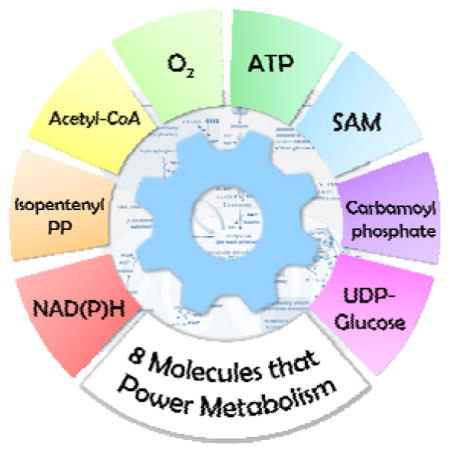 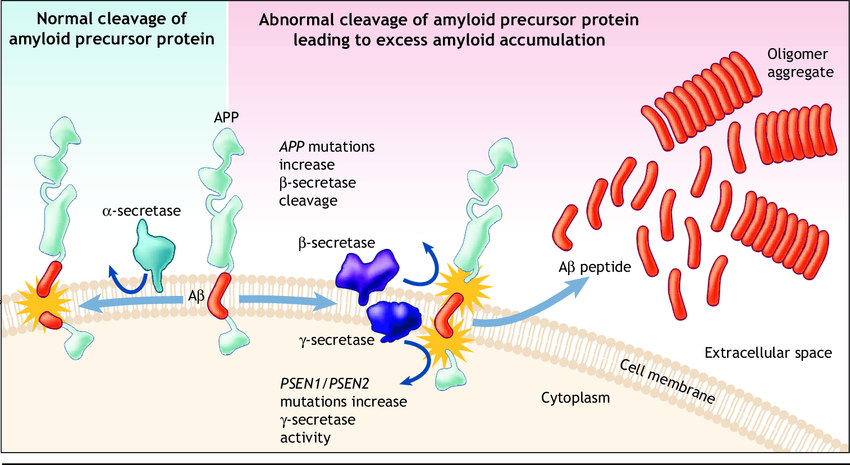 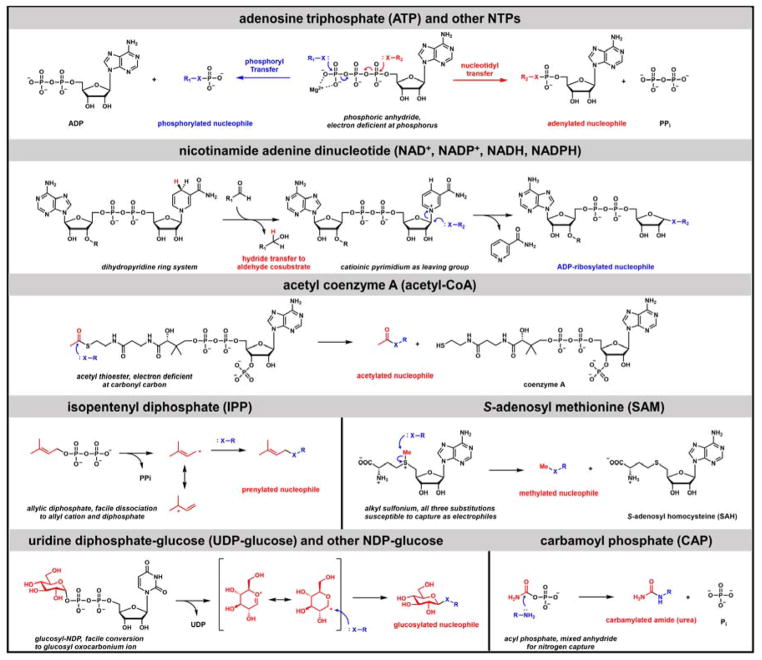 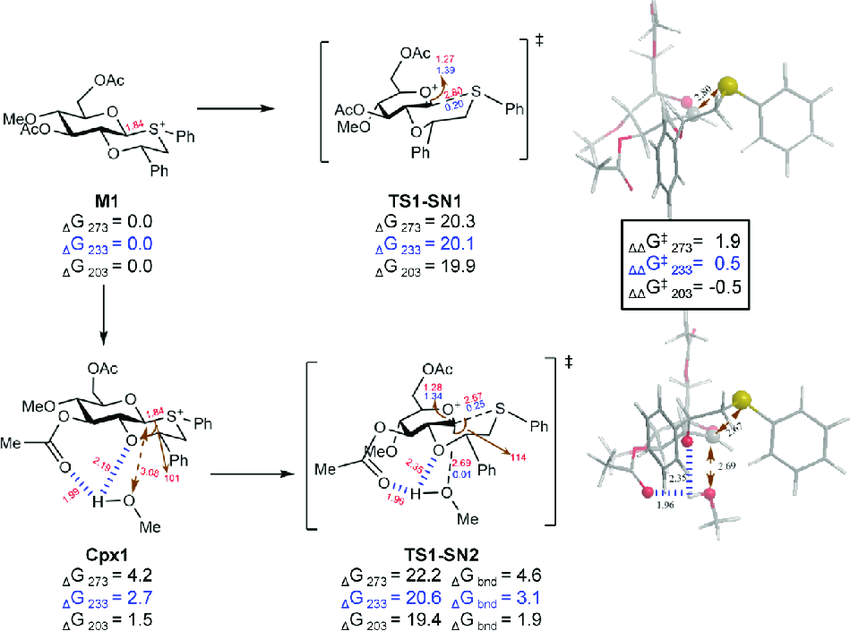 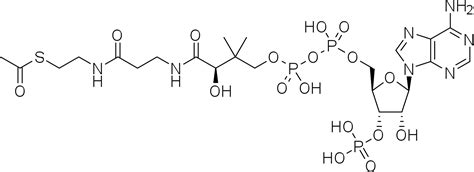 Acetyl-CoA 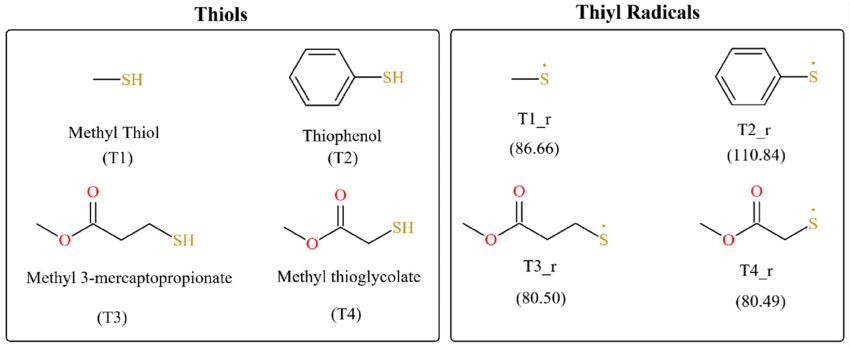 Acetyl-CoA Ascorbic Ascorbate Citric Citrate Sulfur Sulfate Oxalate Oxaloacetate CoA Thioester Palmitoyl Protein Thioesterase (PPT) Lysosomal Thioesterase Pantetheine Pantetheinase HGSNAT Heparan Sulfate Acetyl-CoA (Coenzyme-A) Glucosaminide N-Acetyl Transferase .. https://en.m.wikipedia.org/wiki/Coenzyme_A https://en.m.wikipedia.org/wiki/Acetyl-CoA https://en.m.wikipedia.org/wiki/Citrate_synthase https://en.m.wikipedia.org/wiki/Sulfonium https://en.m.wikipedia.org/wiki/Ylide https://en.m.wikipedia.org/wiki/Oxaloacetic_acid https://en.m.wikipedia.org/wiki/Heparan_sulfate https://en.m.wikipedia.org/wiki/Amyloid-beta_precursor_protein_secretase https://en.m.wikipedia.org/wiki/Lysosomal_storage_disease .. Exploring Heparan Sulfate Proteoglycans as Mediators of Human Mesenchymal Stem Cell Neurogenesis https://link.springer.com/article/10.1007/s10571-024-01463-8 TUBULIN DEACETYLASE NDST3 MODULATES LYSOSOMAL ACIDIFICATION: IMPLICATIONS IN NEUROLOGICAL DISEASES https://pmc.ncbi.nlm.nih.gov/articles/PMC9829454/ SAM ATP Sulfate Cofactor Acetyl-CoA B & C Synthesis Structural similarities between SAM and ATP recognition motifs and detection of ATP binding in a SAM binding DNA methyltransferase https://pmc.ncbi.nlm.nih.gov/articles/PMC10724544/ Trivalent Sulfonium Ion Acetyl Thioester Eight Kinetically Stable but Thermodynamically Activated Molecules that Power Cell Metabolism https://pmc.ncbi.nlm.nih.gov/articles/PMC5831524/ .. http://www.itmonline.org/arts/sulfa.htm .. https://www.beyondmthfr.com/side-high-oxalates-problems-sulfate-b6-gut-methylation/ The Novel Role of Mitochondrial Citrate Synthase and Citrate in the Pathophysiology of Alzheimer’s Disease https://pmc.ncbi.nlm.nih.gov/articles/PMC10473122/ The Basics of Thiols and Cysteines in Redox Biology and Chemistry https://pmc.ncbi.nlm.nih.gov/articles/PMC4355186/ Introduction: What we do and do not know regarding redox processes of thiols in signaling pathways https://pmc.ncbi.nlm.nih.gov/articles/PMC4415879/ Regulation of coenzyme A levels by degradation: the ‘Ins and Outs’ https://pmc.ncbi.nlm.nih.gov/articles/PMC7234920/ .. Redox Biology of Thiols Thiolate Thiyl Radical Lactone Reducing Agent Redox Hydrogen Oxygen Thiol Thiolate Thiyl Radical Acetyl Cysteine Ascorbic C6H8O6 Citric C6H8O7 https://en.m.wikipedia.org/wiki/Thiyl_radical https://en.m.wikipedia.org/wiki/Lactone .. GP41 glycoprotein 41 Disulfide Bond Covalent stabilization of coiled coils of the HIV gp41 N region yields extremely potent and broad inhibitors of viral infection https://pmc.ncbi.nlm.nih.gov/articles/PMC1200264/ Cytosolic sulfotransferase 1A1 regulates HIV-1 minus-strand DNA elongation in primary human monocyte-derived macrophages https://pmc.ncbi.nlm.nih.gov/articles/PMC4765207/ .. Pomegranate Urolithin https://en.m.wikipedia.org/wiki/Urolithin_A Pomegranate derivative urolithin A enhances vitamin D receptor signaling to amplify serotonin-related gene induction by 1,25-dihydroxyvitamin D https://pmc.ncbi.nlm.nih.gov/articles/PMC7566096/ .. Cholesterol Sulfate Calcitriol Vitamin D Acetyl-CoA Acetate Cholesterol Sulfate Alters Astrocyte Metabolism and Provides Protection Against Oxidative Stress https://pmc.ncbi.nlm.nih.gov/articles/PMC6766416/ Acyl-coenzyme A: cholesterol acyltransferases https://pmc.ncbi.nlm.nih.gov/articles/PMC2711667/ A novel hypothesis for atherosclerosis as a cholesterol sulfate deficiency syndrome https://pmc.ncbi.nlm.nih.gov/articles/PMC4456713/ eNOS Endothelial NOS https://en.m.wikipedia.org/wiki/Endothelial_NOS https://en.m.wikipedia.org/wiki/%CE%91-Ketoglutaric_acid .. Exclusion Zone Phenomena in Water—A Critical Review of Experimental Findings and Theories https://pmc.ncbi.nlm.nih.gov/articles/PMC7404113/
| author | mikewick77 |
|---|---|
| permlink | sqyjvb |
| category | intercellular |
| json_metadata | {"app":"hiveblog/0.1","image":["https://images.hive.blog/DQmaiW2BkzMiDZrqZqnftQwtH7rAVyMLNXpk645hZrQAZR8/The-amyloid-precursor-protein-APP-is-a-transmembrane-protein-that-can-undergo-a-series-2617990351.png","https://images.hive.blog/DQmXx26isBakQFgpmopFWrbonAc3z1urqZjqnSWwTn9N3MF/nihms923308u1.jpg","https://images.hive.blog/DQmetzhxTxiHsRTZFzAbAcJaeNyTcR6PvgfTogut6muCRA5/nihms923308f1.jpg","https://images.hive.blog/DQmUBeBANsLvB6H7e1KGjKRat7YJC79p3DHLD19AFqCjsXR/Scheme-3-Optimized-Structures-of-S-N-1-and-S-N-2-Transition-States-Associated-with.png","https://images.hive.blog/DQmYZtodQ8uA2LbhatEETXGwvaveGkxUgNuLMhGzFiwnhBe/th-2007894358.jpg","https://images.hive.blog/DQmNyKrM5YZNQwTinjzy5b9APqAgPBUyWUEt65ZW9ZKj7Br/Figure-S2-Chemical-strucutres-of-thiols-formed-thiyl-radicals-form-the-considered-3180162774.png"],"links":["https://en.m.wikipedia.org/wiki/Coenzyme_A"]} |
| created | 2025-01-31 14:50:00 |
| last_update | 2025-02-13 05:34:27 |
| depth | 1 |
| children | 0 |
| last_payout | 2025-02-07 14:50:00 |
| cashout_time | 1969-12-31 23:59:59 |
| total_payout_value | 0.000 HBD |
| curator_payout_value | 0.000 HBD |
| pending_payout_value | 0.000 HBD |
| promoted | 0.000 HBD |
| body_length | 4,968 |
| author_reputation | 545,063,717,246 |
| root_title | "Intercellular Homeostasis" |
| beneficiaries | [] |
| max_accepted_payout | 1,000,000.000 HBD |
| percent_hbd | 10,000 |
| post_id | 140,452,113 |
| net_rshares | 0 |
https://www.vernoncoleman.com/main.htm
| author | mikewick77 |
|---|---|
| permlink | sr1uq2 |
| category | intercellular |
| json_metadata | {"app":"hiveblog/0.1","links":["https://www.vernoncoleman.com/main.htm"]} |
| created | 2025-02-02 09:37:15 |
| last_update | 2025-02-02 17:39:24 |
| depth | 1 |
| children | 1 |
| last_payout | 2025-02-09 09:37:15 |
| cashout_time | 1969-12-31 23:59:59 |
| total_payout_value | 0.000 HBD |
| curator_payout_value | 0.000 HBD |
| pending_payout_value | 0.000 HBD |
| promoted | 0.000 HBD |
| body_length | 38 |
| author_reputation | 545,063,717,246 |
| root_title | "Intercellular Homeostasis" |
| beneficiaries | [] |
| max_accepted_payout | 1,000,000.000 HBD |
| percent_hbd | 10,000 |
| post_id | 140,494,012 |
| net_rshares | 0 |
https://vedicinalsusa.com/products/vedicinals9-advanced Baicalin, Quercetin, Luteolin, Rutin, Hesperidin, Curcumin, EGCG, Piperine, and Glycyrrhizin, as well as Vitamin C, D3, Zinc, and Selenium Baicalin (Skullcap, Mint) Quercetin (Oak, Caper) Luteolin (Dandelion, Rosemary) Rutin (Caper, Buckwheat) Hesperidin (Citrus, Peppermint) Curcumin (Turmeric Cinnamon) EGCG (Catechin, Tea) Piperine (Black Pepper) Glycyrrhizin (Liquorice Root) Vitamin C, D3, Zinc, and Selenium
| author | mikewick77 |
|---|---|
| permlink | srg31c |
| category | intercellular |
| json_metadata | {"app":"hiveblog/0.1","links":["https://vedicinalsusa.com/products/vedicinals9-advanced"]} |
| created | 2025-02-10 02:03:12 |
| last_update | 2025-02-10 02:25:45 |
| depth | 2 |
| children | 0 |
| last_payout | 2025-02-17 02:03:12 |
| cashout_time | 1969-12-31 23:59:59 |
| total_payout_value | 0.000 HBD |
| curator_payout_value | 0.000 HBD |
| pending_payout_value | 0.000 HBD |
| promoted | 0.000 HBD |
| body_length | 472 |
| author_reputation | 545,063,717,246 |
| root_title | "Intercellular Homeostasis" |
| beneficiaries | [] |
| max_accepted_payout | 1,000,000.000 HBD |
| percent_hbd | 10,000 |
| post_id | 140,681,088 |
| net_rshares | 0 |
Sulfhydryl Redox of Thiols NAD/NADH Ratio Redox Potential Proton Tunneling NAD(P)H Enzyme Dehydrogenase Ubiquitin Quinone Coenzyme-A Coenzyme‐Q CoQ10 PQQ Protoplasm Cytosol Liquid Inside Cells Gilbert Ling Quinone: A Scientific Overview https://www.healthydirections.com/articles/general-health/quinone-overview Sulfhydryl Groups in Biology: Chemistry, Functions, and Applications https://biologyinsights.com/sulfhydryl-groups-in-biology-chemistry-functions-and-applications/ .. https://en.m.wikipedia.org/wiki/Ubiquitin https://en.m.wikipedia.org/wiki/Protoplasm https://en.m.wikipedia.org/wiki/Cytosol .. Sodium Sulfate https://en.m.wikipedia.org/wiki/Sodium_sulfate .. Steroid Cholesterol Sulfate Potassium Extracellular Efflux Potassium Cholesteryl Sulfate https://www.cosmacon.de/en/glossary/potassium-cholesteryl-sulfate/ The proportion of cholesterol in the extracellular matrix is about 30 per cent; in addition, there are 25 per cent fatty acids, 40 per cent ceramides and 5 per cent cholesteryl sulfate. Skin Barrier Sphingolipid Ceramide VS Sphingomyelin https://en.m.wikipedia.org/wiki/Ceramide https://en.m.wikipedia.org/wiki/Sphingomyelin Substances known to induce ceramide generation: Gamma Interferon Ionizing Radiation Vitamin D Cannabinoids Anandamide Niacinamide Homocysteine Reactive Oxygen Species .. Sphingolipids in metabolic disease: The good, the bad, and the unknown https://www.cell.com/cell-metabolism/fulltext/S1550-4131(21)00276-X
| author | mikewick77 |
|---|---|
| permlink | srsuii |
| category | intercellular |
| json_metadata | {"app":"hiveblog/0.1","links":["https://www.healthydirections.com/articles/general-health/quinone-overview"]} |
| created | 2025-02-16 23:27:54 |
| last_update | 2025-02-28 17:32:36 |
| depth | 1 |
| children | 1 |
| last_payout | 2025-02-23 23:27:54 |
| cashout_time | 1969-12-31 23:59:59 |
| total_payout_value | 0.000 HBD |
| curator_payout_value | 0.000 HBD |
| pending_payout_value | 0.000 HBD |
| promoted | 0.000 HBD |
| body_length | 1,499 |
| author_reputation | 545,063,717,246 |
| root_title | "Intercellular Homeostasis" |
| beneficiaries | [] |
| max_accepted_payout | 1,000,000.000 HBD |
| percent_hbd | 10,000 |
| post_id | 140,839,080 |
| net_rshares | 0 |
Bicarbonate Buffer System Carbonic Anhydrase .. Zinc-Binding Cysteines: Diverse Functions and Structural Motifs https://pmc.ncbi.nlm.nih.gov/articles/PMC4101490/ .. https://youtu.be/udgEofYO4F4?feature=shared
| author | mikewick77 |
|---|---|
| permlink | ss3zd8 |
| category | intercellular |
| json_metadata | {"image":["https://img.youtube.com/vi/udgEofYO4F4/0.jpg"],"links":["https://youtu.be/udgEofYO4F4?feature=shared"],"app":"hiveblog/0.1"} |
| created | 2025-02-22 23:46:21 |
| last_update | 2025-02-22 23:46:21 |
| depth | 2 |
| children | 0 |
| last_payout | 2025-03-01 23:46:21 |
| cashout_time | 1969-12-31 23:59:59 |
| total_payout_value | 0.000 HBD |
| curator_payout_value | 0.000 HBD |
| pending_payout_value | 0.000 HBD |
| promoted | 0.000 HBD |
| body_length | 213 |
| author_reputation | 545,063,717,246 |
| root_title | "Intercellular Homeostasis" |
| beneficiaries | [] |
| max_accepted_payout | 1,000,000.000 HBD |
| percent_hbd | 10,000 |
| post_id | 140,983,154 |
| net_rshares | 0 |
ENOS Endothelial NOS DHT Dihydrotestosterone Endothelial Endothelin https://en.m.wikipedia.org/wiki/Endothelial_NOS https://en.m.wikipedia.org/wiki/Endothelin https://en.m.wikipedia.org/wiki/Dihydrotestosterone https://en.m.wikipedia.org/wiki/Endothelial_NOS https://en.m.wikipedia.org/wiki/Chondroitin_sulfate https://en.m.wikipedia.org/wiki/Proteoglycan https://en.m.wikipedia.org/wiki/Glycosaminoglycan https://en.m.wikipedia.org/wiki/Nitazoxanide https://en.m.wikipedia.org/wiki/D-amino_acid_oxidase https://en.m.wikipedia.org/wiki/D-Amino_acid
| author | mikewick77 |
|---|---|
| permlink | srwzv2 |
| category | intercellular |
| json_metadata | {"app":"hiveblog/0.1","links":["https://en.m.wikipedia.org/wiki/Endothelial_NOS"]} |
| created | 2025-02-19 05:13:48 |
| last_update | 2025-02-21 21:41:18 |
| depth | 1 |
| children | 0 |
| last_payout | 2025-02-26 05:13:48 |
| cashout_time | 1969-12-31 23:59:59 |
| total_payout_value | 0.000 HBD |
| curator_payout_value | 0.000 HBD |
| pending_payout_value | 0.000 HBD |
| promoted | 0.000 HBD |
| body_length | 563 |
| author_reputation | 545,063,717,246 |
| root_title | "Intercellular Homeostasis" |
| beneficiaries | [] |
| max_accepted_payout | 1,000,000.000 HBD |
| percent_hbd | 10,000 |
| post_id | 140,893,333 |
| net_rshares | 0 |
DMSO Represses Inflammatory Cytokine Production from Human Blood Cells and Reduces Autoimmune Arthritis https://pmc.ncbi.nlm.nih.gov/articles/PMC4816398/ Regulation of coenzyme A levels by degradation: the ‘Ins and Outs’ https://pmc.ncbi.nlm.nih.gov/articles/PMC7234920/ Coenzyme A, protein CoAlation and redox regulation in mammalian cells https://www.sciencedirect.com/org/science/article/pii/S1470875218000946 .. ATP Adenosine Triphosphate NAD Nicotinamide Adenine Dinucleotide PANK Pantothenate Kinase Brain NAD Is Associated With ATP Energy Production and Membrane Phospholipid Turnover in Humans https://pmc.ncbi.nlm.nih.gov/articles/PMC7772416/ PANK https://en.m.wikipedia.org/wiki/Pantothenate_kinase
| author | mikewick77 |
|---|---|
| permlink | ss4354 |
| category | intercellular |
| json_metadata | {"app":"hiveblog/0.1","links":["https://pmc.ncbi.nlm.nih.gov/articles/PMC4816398/"]} |
| created | 2025-02-23 01:07:51 |
| last_update | 2025-02-24 16:21:06 |
| depth | 1 |
| children | 0 |
| last_payout | 2025-03-02 01:07:51 |
| cashout_time | 1969-12-31 23:59:59 |
| total_payout_value | 0.000 HBD |
| curator_payout_value | 0.000 HBD |
| pending_payout_value | 0.000 HBD |
| promoted | 0.000 HBD |
| body_length | 722 |
| author_reputation | 545,063,717,246 |
| root_title | "Intercellular Homeostasis" |
| beneficiaries | [] |
| max_accepted_payout | 1,000,000.000 HBD |
| percent_hbd | 10,000 |
| post_id | 140,984,660 |
| net_rshares | 0 |
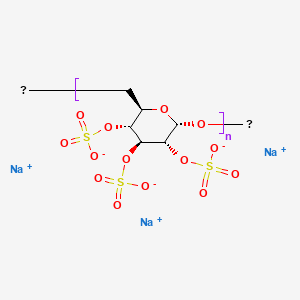 DSS  DSS https://pubchem.ncbi.nlm.nih.gov/substance/135030727 https://pubchem.ncbi.nlm.nih.gov/substance/135030727#section=2D-Structure Dextran Sulfate Sodium Salt, MW 40,000 is a polyanionic derivative of Dextran Polymer, produced by the esterification of Dextran with Chlorosulphonic Acid One of the primary mechanisms by which DSS exhibits antiviral activity is by blocking the attachment of viruses to host cells. DSS binds to viral surface proteins or cellular receptors, preventing the initial interaction required for viral entry. This has been particularly effective against viruses such as HIV, herpes simplex virus (HSV), and human papillomavirus (HPV). .. tried a new test today, and its definitely doing things very quickly. Honey, MSM & Potassium Citrate (with a neutral pH). kind of trying to duplicate DSS Dextran Sulfate Sodium, without the Sodium. the idea is ATP & everything Mitochondria is from Glucose into Amino Acid. wondering if Vinegar & Citric Acid are (post) carbohydrate, makes it not a viable Mitochondria food, because its already been flipped over? meaning, how Diabetes & Kidneys seem to go together, and are problems with Sugars & Potassium, but if a Sulfate is introduced, will it make ATP & Coenzyme-A? the idea that pH needs to always be neutral, and Sulfate makes Sugar & Potassium more digestible? honey & msm are almost instantly metabolized, and thats exactly what it felt like, and it took the Potassium for a quick ride. it was directly affecting my injuries, took a rest to feel the effects. looking at the onle similar compound is Glucosamine Sulfate Potassium Chloride is used for osteoarthritis. directly connected to Ligaments, Tendons, Bone Marrow. the idea is to feed Mitochondria instead of fight it? .. couple interesting things about Sulfur has a powerful Oxygen attraction, is why it an antioxidant is because it gathers up all the free radical Oxygen ROS. Sulfur without an Oxygen molecule are always toxic chemicals. Alkaline Salt allow Sulfur to be heated up without evaporating. .. saponification chemical reaction fatty acids salts glycerol palmitate Palmitic Acid Triglyceride Hydrocarbon Chain Length Phospholipid Cell Membranes Acetylcholine Anticholinesterase Acetylcholinesterase Coenzyme-A (acetyl-CoA) Choline (Bitartrate Chloride) DMSO induced histamine release from mast cells. .. Methylsulfonylmethane: Applications and Safety of a Novel Dietary Supplement https://pmc.ncbi.nlm.nih.gov/articles/PMC5372953/ .. Chondroitin Sulfate Chondroitin Sulfate is a sulfated glycosaminoglycan (GAG) A chondroitin chain can have over 100 individual sugars, each of which can be sulfated in variable positions and quantities. Chondroitin sulfate is an important structural component of cartilage. .. Chondroitin sulphate inhibits connective tissue mast cells https://pmc.ncbi.nlm.nih.gov/articles/PMC1572430/ The Potential use of Honey as a Remedy for Allergic Diseases https://pmc.ncbi.nlm.nih.gov/articles/PMC7870997/ The endothelial glycocalyx: composition, functions, and visualization https://pmc.ncbi.nlm.nih.gov/articles/PMC1915585/ The effect of N-acetylcysteine supplementation on endothelial function https://www.sciencedirect.com/science/article/pii/S2667268523000578 N-acetylcysteine attenuates the decline in muscle Na+,K+-pump activity and delays fatigue during prolonged exercise in humans https://pmc.ncbi.nlm.nih.gov/articles/PMC1995650/ N-acetylcysteine-induced vasodilation involves voltage-gated potassium channels in rat aorta The Biomedical Uses of Inositols: A Nutraceutical Approach to Metabolic Dysfunction in Aging and Neurodegenerative Diseases https://pmc.ncbi.nlm.nih.gov/articles/PMC7554709/ https://www.sciencedirect.com/science/article/abs/pii/S0024320509000988?via%3Dihub High-level expression of an acetaldehyde dehydrogenase https://www.sciencedirect.com/science/article/pii/S0717345823000040 Coenzyme A, Acyl Carrier Protein and Functionally Related Molecules https://lipidmaps.org/resources/lipidweb/lipidweb_html/lipids/simple/coA/index.htm .. Optimal K+ concentration of recombinant enzyme It has been reported that the catalytic activity of acetaldehyde dehydrogenase is influenced by K+ (Potassium) concentration. Acetaldehyde dehydrogenases are dehydrogenase enzymes which catalyze the conversion of acetaldehyde into acetyl-CoA (Sulfate). .. Inositol Hexanicotinate Nicotinate IHN (Hexopal) Hexopal, which is therapeutically indicated for the symptomatic relief of severe intermittent claudication and Raynaud’s phenomenon. Cilostazol .. Acetaldehyde Dehydrogenase Fomepizole (Nitrogen) Disulfiram (Sulfur) .. Methionine Nitrogen/Sulfur Methyl Doner Royal Honey Queen Bee https://en.m.wikipedia.org/wiki/Methionine .. Methionine Sulfoximine (MSX) Short-term inhibition of glutamine synthetase leads to reprogramming of amino acid and lipid metabolism in roots and leaves of tea plant https://pmc.ncbi.nlm.nih.gov/articles/PMC6794879/ https://en.m.wikipedia.org/wiki/Methionine_sulfoximine https://en.m.wikipedia.org/wiki/Sulfilimine
| author | mikewick77 |
|---|---|
| permlink | ssbmda |
| category | intercellular |
| json_metadata | {"app":"hiveblog/0.1","image":["https://images.hive.blog/DQmUbiBmmUp9zhzAspgHDKNz4UPCevw7x3ZkqdXQ8P8yojR/imgsrv-42.png","https://images.hive.blog/DQmZivcp35JjVw1faZZeDTsqyiqSRbJDAzeMij3gAHRnMDo/dextran-sulfate-mol-wh.png"],"links":["https://pubchem.ncbi.nlm.nih.gov/substance/135030727"]} |
| created | 2025-02-27 02:46:21 |
| last_update | 2025-03-13 15:38:15 |
| depth | 1 |
| children | 0 |
| last_payout | 2025-03-06 02:46:21 |
| cashout_time | 1969-12-31 23:59:59 |
| total_payout_value | 0.000 HBD |
| curator_payout_value | 0.000 HBD |
| pending_payout_value | 0.000 HBD |
| promoted | 0.000 HBD |
| body_length | 5,345 |
| author_reputation | 545,063,717,246 |
| root_title | "Intercellular Homeostasis" |
| beneficiaries | [] |
| max_accepted_payout | 1,000,000.000 HBD |
| percent_hbd | 10,000 |
| post_id | 141,082,950 |
| net_rshares | 0 |
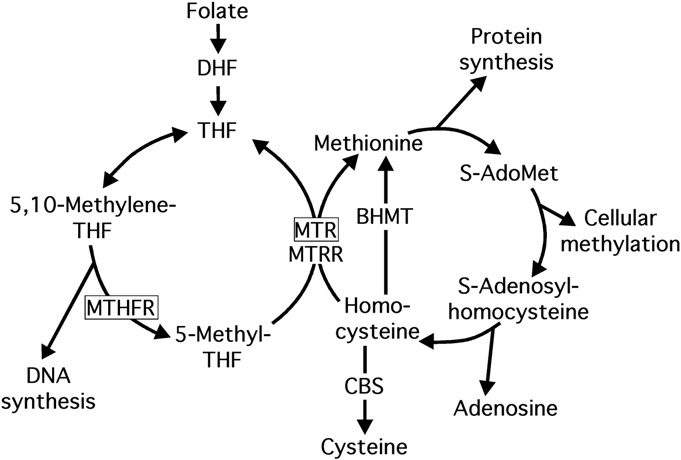 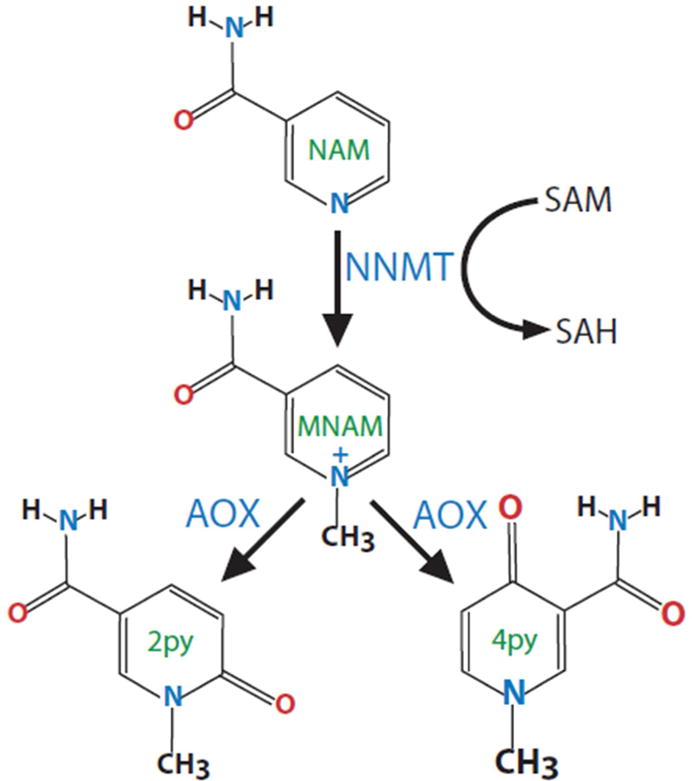 Redox Chelation Enzyme Metabolism Detoxify OCM One-Carbon Metabolism Coenzyme-A Nitrogen Redox Enzyme Folate Serine Folate Cycle Methionine Cycle Regulatory mechanisms of one-carbon metabolism enzymes https://www.sciencedirect.com/science/article/pii/S0021925823024857 .. Folate C19H19N7O6 NAC C5H9NO3S Niacin C6H5NO2 Niacinamide C6H6N2O Inositol Niacinate C42H30N6O12 Nicotinate C6H4NO2 Inositol C6H12O6 Dimethyl Sulfone C2H6O2S .. Melanins (good) C18H10N2O4 Melatonin (good) C13H16N2O2 Tryptophan C11H12N2O2 Serotonin C10H12N2O Indoxyl Sulfate (Indican) C8H7NO4S Indoxyl Glucuronide C14H15NO7 Indoxyl-Beta-D-Glucoside C14H17NO6 .. A Mathematical Model of the Folate Cycle NEW INSIGHTS INTO FOLATE HOMEOSTASIS https://www.jbc.org/article/S0021-9258(18)66253-2/fulltext 5-methyltetrahydrofolate (the “methyl trap”), high homocysteine concentrations. Toxic Medications Methotrexate https://en.m.wikipedia.org/wiki/Methotrexate .. Overmethylation and Undermethylation: Case Study https://mthfr.net/overmethylation-and-undermethylation-case-study/2012/06/27/ Methyl-Free vs. Methylated: Do you Need a Non-Methylated Supplement? https://support.seekinghealth.com/en-US/methyl-free-vs-methylated-do-you-need-a-non-methylated-supplement-996460 Creatine and Creatinine Metabolism https://journals.physiology.org/doi/full/10.1152/physrev.2000.80.3.1107 Creatine Creatinine Indoxyl Sulfate How the use of creatine supplements can elevate serum creatinine in the absence of underlying kidney pathology https://pmc.ncbi.nlm.nih.gov/articles/PMC4170516/ .. Methyl Doner Methylation Methylfolate Methylcobalamin The Biomedical Uses of Inositols: A Nutraceutical Approach to Metabolic Dysfunction in Aging and Neurodegenerative Diseases https://pmc.ncbi.nlm.nih.gov/articles/PMC7554709/ .. Uremic Toxins Uremic Salts Indoxyl Sulfate https://en.m.wikipedia.org/wiki/Indoxyl_sulfate Redefining Roles: A Paradigm Shift in Tryptophan–Kynurenine Metabolism for Innovative Clinical Applications https://www.mdpi.com/1422-0067/25/23/12767 .. Stem Cell Regeneration Aloe Macroclada Blue Green Algae Kidney .. Stem Cell Coenzyme-A Histone Crotonylation N-acetylcysteine regulates dental follicle stem cell osteogenesis and alveolar bone repair via ROS scavenging https://stemcellres.biomedcentral.com/articles/10.1186/s13287-022-03161-y Vitamin C and B3 as New Biomaterials to Alter Intestinal Stem Cells https://pmc.ncbi.nlm.nih.gov/articles/PMC6626554/ .. Stem Cells Telomere Telomerase Telosome Shelterin MSC Mesenchymal Stem Cells HGH Human Growth Hormone The contribution of growth hormone to mammary neoplasia https://pmc.ncbi.nlm.nih.gov/articles/PMC2665193/ Niacin in the Central Nervous System: An Update of Biological Aspects and Clinical Applications https://pmc.ncbi.nlm.nih.gov/articles/PMC6412771/ Niacin Cures Systemic NAD+ Deficiency and Improves Muscle Performance in Adult-Onset Mitochondrial Myopathy https://www.sciencedirect.com/science/article/pii/S155041312030190X .. CH3 Methyl Doner Single/One-Carbon Osmolyte .. NAM Methylation Nicotinamide Methylnicotinamide MNA 2PY 4PY Pyridone Indoxyl Sulfate Inositol Hexanicotinate Niacinate The Biochemical Pathways of Nicotinamide-Derived Pyridones https://pmc.ncbi.nlm.nih.gov/articles/PMC7866226/ The significance of NAD + metabolites and nicotinamide N-methyltransferase in chronic kidney disease https://www.sciencedirect.com/science/article/abs/pii/S0168365922008732 Delivery of nitric oxide with a pH-responsive nanocarrier for the treatment of renal fibrosis https://www.nature.com/articles/s41598-022-10476-6 Nicotinamide N-methyltransferase: more than a vitamin B3 clearance enzyme https://pmc.ncbi.nlm.nih.gov/articles/PMC5446048/ An unusual nicotinamide derivative, 4-pyridone-3-carboxamide ribonucleoside (4PYR), is a novel endothelial toxin and oncometabolite https://www.nature.com/articles/s12276-021-00669-w Synthesis, Detection, and Metabolism of Pyridone Ribosides, Products of NAD Overoxidation https://pubs.acs.org/doi/10.1021/acs.chemrestox.3c00264 .. GPR109A Niacin Receptor 1 (NIACR1) Hydroxycarboxylic Acid Receptor 2 https://en.m.wikipedia.org/wiki/Hydroxycarboxylic_acid_receptor_2 Butyric Acid https://en.m.wikipedia.org/wiki/Butyric_acid Trigonelline Methylated Niacin https://en.m.wikipedia.org/wiki/Trigonelline .. Niacin Nicotinic NAD ATP pH Alkaline 7 Enzyme Reactions Cell Life Versus Cell Longevity: The Mysteries Surrounding the NAD+ Precursor Nicotinamide https://pmc.ncbi.nlm.nih.gov/articles/PMC2248696/ .. Nitrogen into Nitric Oxide requires a Ph 7 to activate enzymes. Nician triggering enzyme reactions at more alkaline ph 7, makes mitochondria ATP & NAD, breaks up toxic acid buildup. Inositol Niacin buffered with a Methyl Carbon & pinch of Electrolyte Citrate-Buffered Minerals & Bicarbonate. DMSO/MSM helps with the coenzyme & metabolism, but needs much less then Niacin. trying to see if niacin contributions to many different things, and why. because Niacin Inositol is buffered with a Methyl, making it have both Methyl Doner & Nitrogen Doner. making it very similar to the Nitrogen that comes in rain water, exactly like DMSO/MSM as a Sulfur Doner, in the most natrual form. the Nitrogen in the simplest form is doing is a Heterocycle scaffolding linking Methyl Carbon lattice assembly into DNA & muscles. apparently its the Nitrogen with Carbon that builds the framework of the body tissues. Trigonelline is Methylated Niacin, found in Fenugreek & Coffee bean. it appears almost identical to the Niacin Inositol, excess Niacin is converted into Trigonelline. Trigonelline reverses Sarcopenia (muscle loss). Niacin is the smallest vitamin & most effective Nitrogen N-Donor, and just needs a CH3 Methyl attached & its basically Trigonelline. .. Honey 70% Castor 10% Niacin 5% MSM 5% Citrus 5% Minerals 5% apparently health all to do with Amino Acids, instead of supplementing 20 different amino acid powders, hotrod honey to duplicate them. its very complex biology & chemistry, but apparently its all about Amino, and not in the way science explains it, they totally missed something & its very difficult to explain. the reason Niacin both helps & makes worse, is because its not buffered correctly, and eventually just make more inflammation. it literally needs to be buffered onto exactly what the healthy cell wants. the Ph significantly changes how the Nitrogen of Niacin reacts, acidic is hot flushing, alkaline is cooling calming. but this does not apply to raw supliments in pill or powder, it seems needs this foaming reaction with the honey & MSM. last night & this morning, what is usually a kind of slow flushing feeling threw out the day, is now a cooling & calm effect. this was a success in transforming the flush into something that feels like its actually doing something good. i really hate Niacin fluch, always have, but keep pushing along regardless, because something kept nagging me to power on. Niacin is documented to be drastically altered with high Ph, and its true. the honey was giving me a few unusual feeling symptoms, then it occured to me to match up with the target .. nicotinamide riboside nad overdose symptoms its identical, the side effects are a positive confirmation, on the correct path. .. the idea that Niacin can act as a Nitrogen Donor, in the same way Betaine acts a Methyl & Glycine Donor for proto-Amino Acids, along with DMSO for Coenzyme-A & Glutathione, plus the addition of Glucose from Honey to build all the levels of Amino Acids into Protein. the idea is to use something like Niacin just as a Nitrogen source, Betaine CH3 Methyl source replaced by Honey (C) & Oil (H). making a complete Amino Acid repository for all biological functions. testing Niacin with Honey, Alkaline & Castor Oil. i want to see if the Glucose is absolutely required with Nitrogen to manufacture Amino Acids into muscle & energy metabolism. how i figured it out was just Niacin alone knocked out my Methyl, so then tried using MSM/DMSO to Dimethyl Sulfate to replace the missing Methyl, but then that knocked out the Nitrogen from the Niacin, ultimately both are needed but a Glucose or Sugar is required to maintain the Aminos & Protein, with an Oil to make Methyl.
| author | mikewick77 |
|---|---|
| permlink | ssrp69 |
| category | intercellular |
| json_metadata | {"app":"hiveblog/0.1","image":["https://images.hive.blog/DQmXyes12kLSL97Y4kyjenxNCkENUAJ5dYpCG4fdUSZm6DA/The-folate-and-methionine-cycles-are-interconnected-and-are-required-for-many-cellular-73012275.ppm.png","https://images.hive.blog/DQmQEeaXWrrzpgWWh3xxAUWj5EoJvA6D4a1xPwHeDZNRqcD/nihms851187f1.jpg"],"links":["https://www.sciencedirect.com/science/article/pii/S0021925823024857"]} |
| created | 2025-03-07 19:08:30 |
| last_update | 2025-04-21 21:14:42 |
| depth | 1 |
| children | 1 |
| last_payout | 2025-03-14 19:08:30 |
| cashout_time | 1969-12-31 23:59:59 |
| total_payout_value | 0.000 HBD |
| curator_payout_value | 0.000 HBD |
| pending_payout_value | 0.000 HBD |
| promoted | 0.000 HBD |
| body_length | 8,749 |
| author_reputation | 545,063,717,246 |
| root_title | "Intercellular Homeostasis" |
| beneficiaries | [] |
| max_accepted_payout | 1,000,000.000 HBD |
| percent_hbd | 10,000 |
| post_id | 141,274,362 |
| net_rshares | 0 |
Niacin Sugar Banking Soda Methyl (Me) -CH3 Bicarbonate Ion CHO3- .. Osmolyte Methyl Donor Methylated One-Carbon Buffered Niacin Niacin Inositol Trigonelline Preiss-Handler Pathway (NaPRT) Nicotinic Acid Phosphoribosyltransferase Ocean Marine Nitrogen Dinitrogen A New NAD+ Precursor More Stable than NMN and NR: Trigonelline https://www.nad.com/news/a-new-nad-precursor-more-stable-than-nmn-and-nr-trigonelline How is NAD+ Made? Preiss-Handler Pathway https://www.qualialife.com/how-is-nad-made-preiss-handler-pathway .. Vitamin B3: Metabolism and Functions https://themedicalbiochemistrypage.org/vitamin-b3-metabolism-and-functions/ Methylation Donor: Roles in One-Carbon Metabolism and Health https://biologyinsights.com/methylation-donor-roles-in-one-carbon-metabolism-and-health/ .. Trigonelline most basic Nitrogen compound found in plants. Dinitrogen most basic Nitrogen compound found in Ocean Marine & Atmosphere .. Methyl Methyl Radical Methenium (Cation) .. Glutamine vs Glutamate Melatonin vs Serotonin .. Nitrotyrosine Peroxynitrite vs NAC https://en.m.wikipedia.org/wiki/Nitrotyrosine https://en.m.wikipedia.org/wiki/Sodium_benzoate .. Phosphorus-Nitrogen Heterocycles Derived from Chelating N-Donor Ligands https://chemistry-europe.onlinelibrary.wiley.com/doi/10.1002/chem.202404420 .. Niacin DMSO Nitrogen Heterocycles Hexanicotinate Quinazoline Keratinocyte Nuclear Factor Erythroid 2-Related Factor 2 (NRF2) Phosphorus-Nitrogen Heterocycles Derived from Chelating N-Donor Ligands: https://chemistry-europe.onlinelibrary.wiley.com/doi/10.1002/chem.202404420 Seeing red: flushing out instigators of niacin-associated skin toxicity https://pmc.ncbi.nlm.nih.gov/articles/PMC2912206/ NRF2 Activation by Nitrogen Heterocycles https://pmc.ncbi.nlm.nih.gov/articles/PMC10058096/ Quinazolinones, the Winning Horse in Drug Discovery https://pmc.ncbi.nlm.nih.gov/articles/PMC9919317/ Organocatalyzed Synthesis of Quinazolines https://www.chemistryviews.org/details/ezine/11218877/Organocatalyzed_Synthesis_of_Quinazolines/ organocatalytic protocol for the synthesis of diversely substituted quinazolines promoted by vitamin B3 (niacin), using nitriles as a CN source. The team used various 2-aminobenzylamines and nitriles as substrates, niacin as the catalyst, and dimethylsulfoxide (DMSO) as the solvent. The reaction was performed at 110 °C under air.
| author | mikewick77 |
|---|---|
| permlink | sssy4m |
| category | intercellular |
| json_metadata | {"app":"hiveblog/0.1","links":["https://www.nad.com/news/a-new-nad-precursor-more-stable-than-nmn-and-nr-trigonelline"]} |
| created | 2025-03-08 11:19:33 |
| last_update | 2025-03-15 21:23:45 |
| depth | 2 |
| children | 0 |
| last_payout | 2025-03-15 11:19:33 |
| cashout_time | 1969-12-31 23:59:59 |
| total_payout_value | 0.000 HBD |
| curator_payout_value | 0.000 HBD |
| pending_payout_value | 0.000 HBD |
| promoted | 0.000 HBD |
| body_length | 2,416 |
| author_reputation | 545,063,717,246 |
| root_title | "Intercellular Homeostasis" |
| beneficiaries | [] |
| max_accepted_payout | 1,000,000.000 HBD |
| percent_hbd | 10,000 |
| post_id | 141,286,278 |
| net_rshares | 0 |
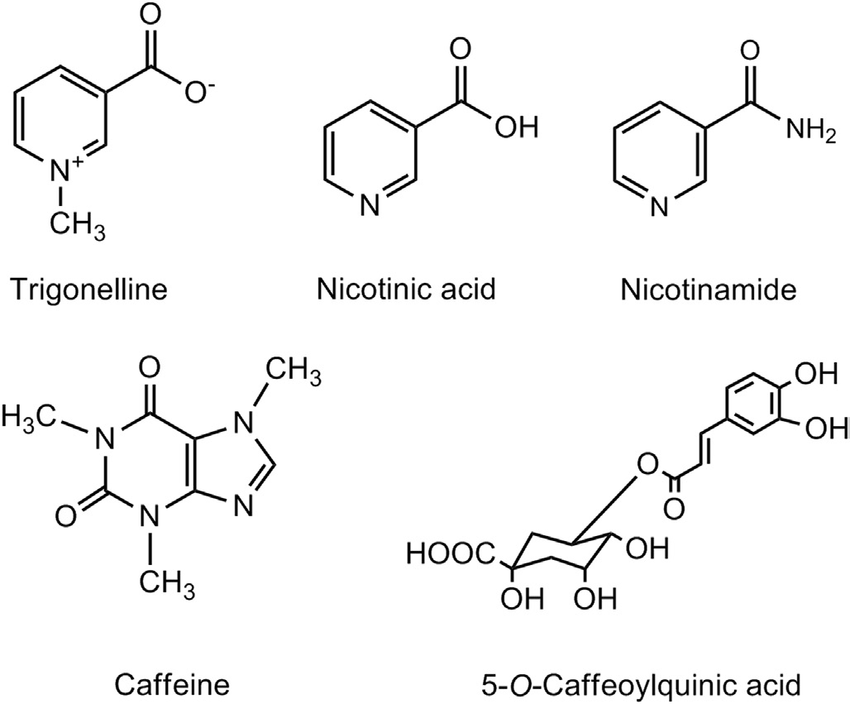 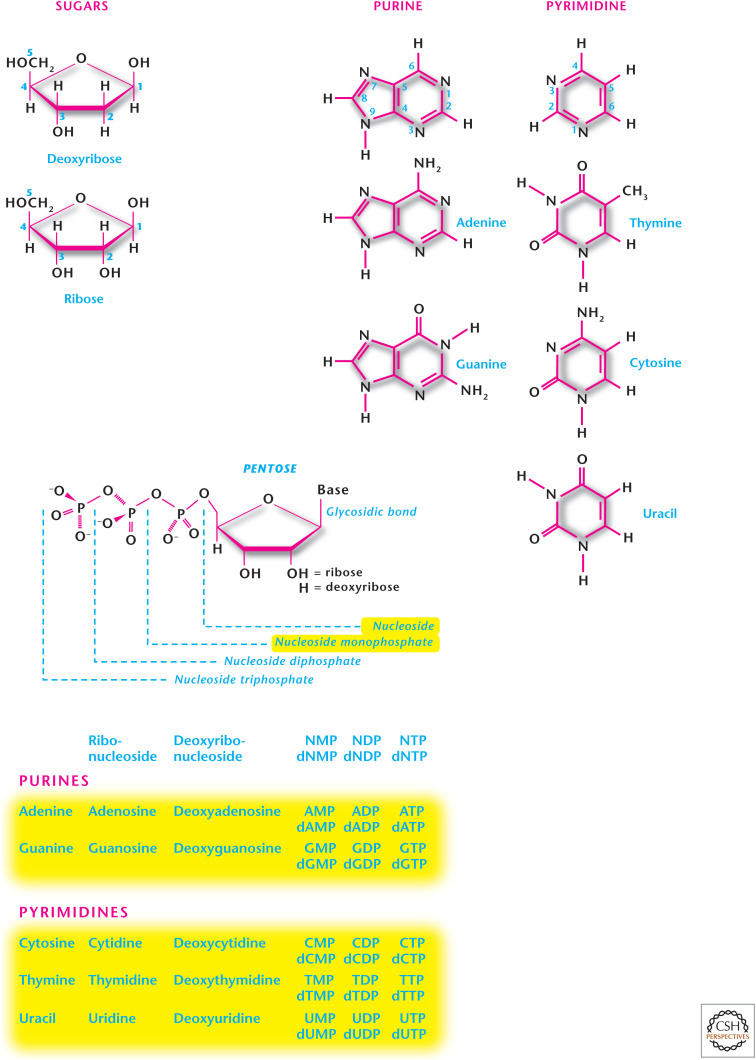 Trigonelline Nicotinate Methylnicotinate (NM) Methyltransferase One-Carbon Group Transferase Nicotinate (N) Sulfate (S) Methyltransferase Adenosyl (Adenosine) S-Adenosyl Methionine N-Methyl Nicotinate (NM) Eicosanoid Prostaglandin Nicotinamidase Nicotinate Phosphoribosyltransferase Magnesium Dependent Pyridine Alkaloid Fenugreek Coffee Bean Pumpkin Seed Nikomet Prostaglandin Pathway Prostaglandin D2 Prostaglandin DP2 Receptor https://pubchem.ncbi.nlm.nih.gov/compound/Methyl-nicotinate NRF2, a Transcription Factor for Stress Response and Beyond https://pmc.ncbi.nlm.nih.gov/articles/PMC7369905/ Niacin modulates depressive-like behavior in experimental colitis through GPR109A-dependent mechanisms https://www.sciencedirect.com/science/article/abs/pii/S0024320523006392 Recent Developments and Challenges in the Enzymatic Formation of Nitrogen–Nitrogen Bonds https://pubs.acs.org/doi/10.1021/acscatal.4c05268 compounds containing N–N bonds, mainly aromatic or nonaromatic heterocycles, because of their diverse range of antiviral, antibacterial, antimalarial and anticancer activities. Nucleotide Metabolism https://pmc.ncbi.nlm.nih.gov/articles/PMC8247561/ There are two kinds of nitrogen-containing bases: purines and pyrimidines. The chemistry of the vitamin B3 metabolome https://pmc.ncbi.nlm.nih.gov/articles/PMC6411094/ Upon high NA intake, excess NA is converted to nicotinuric acid, in phase 2 metabolic process conjugated to glycine. Trigonelline is N-methyl nicotinic acid, a catabolite found in tissues but less often measured and for which the physiological properties remain unexplored. Trigonelline reverses high glucose-induced proliferation, fibrosis of mesangial cells via modulation of Wnt signaling pathway https://pmc.ncbi.nlm.nih.gov/articles/PMC8827266/ Defining NAD(P)(H) Catabolism https://www.mdpi.com/2072-6643/15/13/3064 Trigonelline is an NAD+ precursor that improves muscle function during ageing and is reduced in human sarcopenia https://www.nature.com/articles/s42255-024-00997-x Niacin Cures Systemic NAD+ Deficiency and Improves Muscle Performance in Adult-Onset Mitochondrial Myopathy https://www.cell.com/cell-metabolism/fulltext/S1550-4131(20)30190-X Trigonelline https://pubchem.ncbi.nlm.nih.gov/compound/Trigonelline Nicotine https://pubchem.ncbi.nlm.nih.gov/compound/3-%281-methylpyrrolidin-2-yl%29pyridine Trigonelline and related nicotinic acid metabolites https://link.springer.com/article/10.1007/s11101-014-9375-z Trigonelline prevents kidney stone formation processes by inhibiting calcium oxalate crystallization, growth and crystal-cell adhesion, and downregulating crystal receptors https://pubmed.ncbi.nlm.nih.gov/35367760/ Overview to Pyridine Nucleotides https://pmc.ncbi.nlm.nih.gov/articles/PMC3523884/ The power to reduce: pyridine nucleotides – small molecules with a multitude of functions https://pmc.ncbi.nlm.nih.gov/articles/PMC1798440/ Pyridinecarboxylic Acid https://en.m.wikipedia.org/wiki/Pyridinecarboxylic_acid Methyltransferase https://en.m.wikipedia.org/wiki/Methyltransferase Nicotinate N Methyltransferase https://en.m.wikipedia.org/wiki/Nicotinate_N-methyltransferase Acetylserotonin Methyltransferase (ASMT) https://en.m.wikipedia.org/wiki/Acetylserotonin_O-methyltransferase Xanthine https://en.m.wikipedia.org/wiki/Xanthine .. When NAD+ picks up 2 hydrogen electrons it makes NADH. NADH has a special role generating ATP (energy) through the oxidation of food molecules. NADH is a coenzyme involved in the manufacture of energy in the Krebs or citric acid cycle. NADH is an important electron carrier. Niacin (nicotinic acid) is converted to nicotinamide (niacinamide), which is converted in the body to NAD. When NAD+ picks up 2 hydrogen electrons it makes NADH. .. Elucidation of the trigonelline degradation pathway reveals previously undescribed enzymes and metabolites https://www.pnas.org/doi/10.1073/pnas.1722368115 Enhanced accumulation of trigonelline by elicitation and osmotic stresses in fenugreek callus culture https://link.springer.com/article/10.1007/s11240-021-02055-w Risk Assessment of Trigonelline in Coffee and Coffee By-Products https://pmc.ncbi.nlm.nih.gov/articles/PMC10146819/ Inhibition of Key Digestive Enzymes Related to Diabetes and Hyperlipidemia and Protection of Liver-Kidney Functions by Trigonelline in Diabetic Rats https://pmc.ncbi.nlm.nih.gov/articles/PMC3617660/ Trigonelline, a naturally occurring alkaloidal agent protects ultraviolet-B (UV-B) irradiation induced apoptotic cell death in human skin fibroblasts via attenuation of oxidative stress, restoration of cellular calcium homeostasis and prevention of endoplasmic reticulum (ER) stress https://www.sciencedirect.com/science/article/abs/pii/S1011134419304476 Immunomodulatory effects and potential clinical applications of dimethyl sulfoxide https://www.sciencedirect.com/science/article/pii/S0171298519303729 Amyloidosis has been treated with DMSO as it breaks down amyloid fibres into small subunits which are then excreted in the urine A Novel N-Methyltransferase in Arabidopsis Appears to Feed a Conserved Pathway for Nicotinate Detoxification https://academic.oup.com/plphys/article/174/3/1492/6117425?login=false .. nicotinate N-methyltransferase (EC 2.1.1.7) is an enzyme that catalyzes the chemical reaction two substrates of this enzyme are S-adenosyl methionine and nicotinate, whereas its two products are S-adenosylhomocysteine and N-methylnicotinate. This enzyme belongs to the family of transferases, specifically those transferring one-carbon group methyltransferases. Stimulants Toxicity xanthine: caffeine, theophylline, and theobromine. Methylxanthines (methylated xanthines), which include caffeine, aminophylline, IBMX, paraxanthine, pentoxifylline, theobromine, theophylline, and 7-methylxanthine (heteroxanthine). .. Prostaglandin D2 https://en.m.wikipedia.org/wiki/Prostaglandin_D2 Potential inhibitors of PGD2 synthase: Acteoside Amentoflavone Ricinoleic acid Rutin Hinokiflavone Vitamin K Vitamin D3 .. methyl-nicotinate and Prostaglandin-D2 methyl-nicotinate has been researched along with Prostaglandin-D2, and Schizophrenia https://www.chemdatabank.com/lists/compounds/compound-by-topic/methyl-nicotinate-and-Prostaglandin-D2.html Eicosanoid Arachidonic Acid https://en.m.wikipedia.org/wiki/Eicosanoid
| author | mikewick77 |
|---|---|
| permlink | st6xs7 |
| category | intercellular |
| json_metadata | {"app":"hiveblog/0.1","image":["https://images.hive.blog/DQmUELrsDKgeLqqGM3g8c1e1vPyAtvmCsvPdVMEbgAscsAf/Structure-of-major-secondary-metabolites-and-related-compounds-in-coffee-seeds.png","https://images.hive.blog/DQmU4Vg3Sj5toZwZUjp3MDDYuAZoC7K6qEAfnSqCBKvKmVT/cshperspect-MBM-040592_F2.jpg"],"links":["https://pubchem.ncbi.nlm.nih.gov/compound/Methyl-nicotinate"]} |
| created | 2025-03-16 00:38:30 |
| last_update | 2025-03-19 22:27:33 |
| depth | 1 |
| children | 5 |
| last_payout | 2025-03-23 00:38:30 |
| cashout_time | 1969-12-31 23:59:59 |
| total_payout_value | 0.000 HBD |
| curator_payout_value | 0.000 HBD |
| pending_payout_value | 0.000 HBD |
| promoted | 0.000 HBD |
| body_length | 6,787 |
| author_reputation | 545,063,717,246 |
| root_title | "Intercellular Homeostasis" |
| beneficiaries | [] |
| max_accepted_payout | 1,000,000.000 HBD |
| percent_hbd | 10,000 |
| post_id | 141,459,432 |
| net_rshares | 0 |
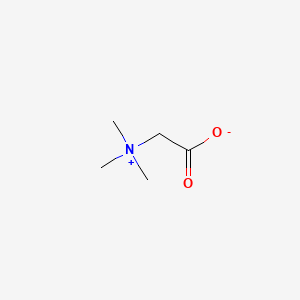 Trimethylglycine C5H11NO2 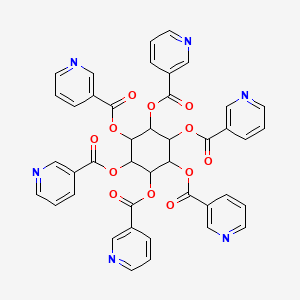 Inositol Niacinate C42H30N6O12 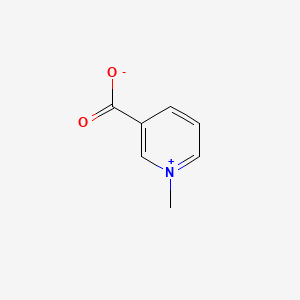 Trigonelline C7H7NO2 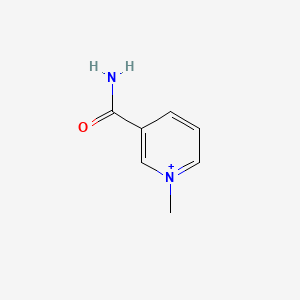 Trigonellinamide C7H9N2O+  Nicotinamide C6H6N2O 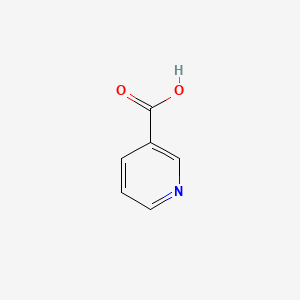 Niacin C6H5NO2 .. Trigonelline (TRL) Trimethylglycine (TMG) Trigonellinamide (MNA) Trimethylamine (TMAO) Dimethylsulfoxide (DMSO) +1 Nitrogen Charge: Trimethylglycine Trigonellinamide Trigonelline Nucleotide Salvage Pathway MNA Methylnicotinamide Trigonellamide Niacin Betaine DMSO/MSM .. N1-methylnicotinamide (Trigonellinamide) can be found abbreviated as MNA, meNAM, MNAM, or even NMN, creating inconsistency and confusion in the literature. .. SAMe DAO CoA luteolin content. Scientists studying the effects of this polyphenol founds that it entirely abolished skin flushing (and entirely abolished the rise in serum Prostaglandin D2) in humans taking Niacin. DAO, an enzyme that depends on Vitamin C, copper and magnesium, and via HNMT, which requires methylation). nicotinic acid, inositol hexaniacinate and niacinamide. .. Trigonelline is an NAD+ precursor that improves muscle function during ageing and is reduced in human sarcopenia https://www.nature.com/articles/s42255-024-00997-x Niacin Cures Systemic NAD+ Deficiency and Improves Muscle Performance in Adult-Onset Mitochondrial Myopathy https://www.cell.com/cell-metabolism/fulltext/S1550-4131(20)30190-X .. 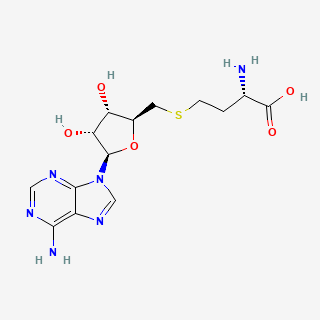 S-adenosyl-l-homocysteine (SAH) 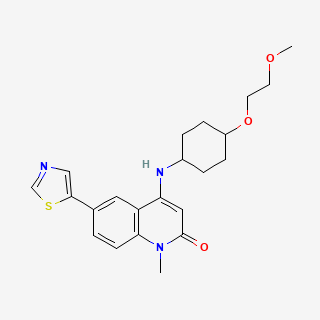 CD38 Inhibitor 1 NNMT CD38 PARP Sirtuin MTHFR Trimethylamine Trimethylamine N-Oxide https://en.m.wikipedia.org/wiki/NNMT https://en.m.wikipedia.org/wiki/CD38 https://en.m.wikipedia.org/wiki/CD38-IN-78c https://en.m.wikipedia.org/wiki/Nucleotide_salvage .. Complex roles of nicotinamide N-methyltransferase in cancer progression https://www.nature.com/articles/s41419-022-04713-z Nicotinamide N-methyltransferase (NNMT) is an S-adenosyl-l-methionine (SAM)-dependent cytosolic enzyme. Taking SAM as the methyl donor, NNMT catalyzes N-methylation of nicotinamide (NAM) to generate 1-methylnicotinamide (1-MNAM) and S-adenosyl-l-homocysteine (SAH). .. https://en.m.wikipedia.org/wiki/Trimethylamine https://en.m.wikipedia.org/wiki/Trimethylamine_N-oxide .. DMSO and TMAO Differences in Interactions in Aqueous Solutions of the K-Peptide https://pmc.ncbi.nlm.nih.gov/articles/PMC8836737/
| author | mikewick77 |
|---|---|
| permlink | ste03p |
| category | intercellular |
| json_metadata | {"app":"hiveblog/0.1","image":["https://images.hive.blog/DQmVQW7pErFNBLg8VmpFD26Sgo62oRVsrJsvHTXJPXwJ5TC/imgsrv-43.png","https://images.hive.blog/DQmbBHEx3CpcHePhfCEpiQekqZm2itKnhfP3S8xEe3QYZNw/imgsrv-49.png","https://images.hive.blog/DQmb5RcsYY9G15Zga9wbuMRtWPnWxVr84Vc2x87HsrenRz5/imgsrv-47.png","https://images.hive.blog/DQmVsmg8rX9K13q3ofSrZVpgL4fu2dpXKkq37XHAiSWe6Jq/imgsrv-46.png","https://images.hive.blog/DQmXmDJCeXhmqJUk1biW9roZmrFwVdgEoEttwqBtrrKzgWf/imgsrv-44.png","https://images.hive.blog/DQmQFMfszgNeDUa3HnrGSDeSDrjjTxce98UABM9VYFfhjCJ/imgsrv-48.png","https://images.hive.blog/DQmYP8HRw5J7BZQwY1i5VbR9ro2k6updSx9ZwPuJLmLJA5P/imagefly-7.png","https://images.hive.blog/DQmYoEjjppX9Wer1gz5CGS3ZhuoL5ZvJpHHana8DjxXgxDJ/imagefly-6.png"],"links":["https://www.nature.com/articles/s42255-024-00997-x"]} |
| created | 2025-03-19 20:11:48 |
| last_update | 2025-03-26 20:01:24 |
| depth | 2 |
| children | 1 |
| last_payout | 2025-03-26 20:11:48 |
| cashout_time | 1969-12-31 23:59:59 |
| total_payout_value | 0.000 HBD |
| curator_payout_value | 0.000 HBD |
| pending_payout_value | 0.000 HBD |
| promoted | 0.000 HBD |
| body_length | 3,108 |
| author_reputation | 545,063,717,246 |
| root_title | "Intercellular Homeostasis" |
| beneficiaries | [] |
| max_accepted_payout | 1,000,000.000 HBD |
| percent_hbd | 10,000 |
| post_id | 141,542,848 |
| net_rshares | 0 |
NAD+ vs. NADH https://www.nad.com/nad-vs-nadh NADH carries the electrons gained from the breakdown of glucose and donates them to the chain of enzymes in mitochondria that are involved in producing ATP (electron transport chain). This oxidizes NADH back to NAD+. Ultimately, the energy from the electrons donated by NADH is exploited by mitochondria to produce ATP (oxidative phosphorylation). .. figured it out, the + on the Nitrogen just means it already Methylated and capable of transporting Hydrogen & manufacturing NAD+ NADH Hydrogen transport into ATP. the + is a little hand that grabs Hydrogen & drops it off. .. Nicotinamide N-methyltransferase: At the crossroads between cellular metabolism and epigenetic regulation https://pmc.ncbi.nlm.nih.gov/articles/PMC7868988/ Source of nicotinamide governs its metabolic fate in cultured cells, mice, and humans https://www.cell.com/cell-reports/fulltext/S2211-1247(23)00229-2
| author | mikewick77 |
|---|---|
| permlink | stfsz3 |
| category | intercellular |
| json_metadata | {"app":"hiveblog/0.1","links":["https://www.nad.com/nad-vs-nadh"]} |
| created | 2025-03-20 19:33:00 |
| last_update | 2025-03-21 04:43:48 |
| depth | 3 |
| children | 0 |
| last_payout | 2025-03-27 19:33:00 |
| cashout_time | 1969-12-31 23:59:59 |
| total_payout_value | 0.000 HBD |
| curator_payout_value | 0.000 HBD |
| pending_payout_value | 0.000 HBD |
| promoted | 0.000 HBD |
| body_length | 938 |
| author_reputation | 545,063,717,246 |
| root_title | "Intercellular Homeostasis" |
| beneficiaries | [] |
| max_accepted_payout | 1,000,000.000 HBD |
| percent_hbd | 10,000 |
| post_id | 141,564,141 |
| net_rshares | 0 |
ER Stress Pathway Endoplasmic Reticulum Hyperhomocysteinemia (HHcy) Unfolded Protein Response (UPR) Proteotoxic Stress Mammalian Target of Rapamycin (mTOR) Lysyl Oxidase Lysine Aminoadipate Pathway Homocysteine Thiolactone Atherosclerosis Thrombocytopenia Hageman factor Factor XII MTHFR Methyl Niacin TMG MSM https://en.m.wikipedia.org/wiki/Endoplasmic_reticulum_stress_in_beta_cells https://en.m.wikipedia.org/wiki/MTOR https://en.m.wikipedia.org/wiki/Lysyl_oxidase https://en.m.wikipedia.org/wiki/Homocysteine_thiolactone https://en.m.wikipedia.org/wiki/Factor_XII https://en.m.wikipedia.org/wiki/Thrombocytopenia https://en.m.wikipedia.org/wiki/%CE%91-Aminoadipate_pathway .. Lysine Catabolism Through the Saccharopine Pathway: https://pmc.ncbi.nlm.nih.gov/articles/PMC7253579/ Lysine contains an α-amino group (which is in the protonated −NH+3. saccharopine pathway (SACPATH) involves the conversion of lysine into α-aminoadipate. lysine-ketoglutarate reductase/saccharopine dehydrogenase (LKR/SDH) and the enzyme α-aminoadipate semialdehyde dehydrogenase (AASADH). .. Proteinogenic Amino Acid Lysine Lysyl Oxidase Aminoadipate Pathway Homocitric acid Ketoglutaric Acid Methylene Bridge Diaminopimelic Acid Pimelic Acid https://en.m.wikipedia.org/wiki/%CE%91-Aminoadipate_pathway https://en.m.wikipedia.org/wiki/Homocitric_acid https://en.m.wikipedia.org/wiki/Methylene_bridge https://en.m.wikipedia.org/wiki/%CE%91-Ketoglutaric_acid https://en.m.wikipedia.org/wiki/Diaminopimelic_acid https://en.m.wikipedia.org/wiki/Pimelic_acid https://en.m.wikipedia.org/wiki/Proteinogenic_amino_acid .. Trimethylamine N-Oxide (TMAO) https://en.m.wikipedia.org/wiki/Trimethylamine_N-oxide
| author | mikewick77 |
|---|---|
| permlink | stlptd |
| category | intercellular |
| json_metadata | {"app":"hiveblog/0.1","links":["https://en.m.wikipedia.org/wiki/Endoplasmic_reticulum_stress_in_beta_cells"]} |
| created | 2025-03-24 00:10:24 |
| last_update | 2025-03-24 06:52:24 |
| depth | 2 |
| children | 0 |
| last_payout | 2025-03-31 00:10:24 |
| cashout_time | 1969-12-31 23:59:59 |
| total_payout_value | 0.000 HBD |
| curator_payout_value | 0.000 HBD |
| pending_payout_value | 0.000 HBD |
| promoted | 0.000 HBD |
| body_length | 1,727 |
| author_reputation | 545,063,717,246 |
| root_title | "Intercellular Homeostasis" |
| beneficiaries | [] |
| max_accepted_payout | 1,000,000.000 HBD |
| percent_hbd | 10,000 |
| post_id | 141,636,553 |
| net_rshares | 0 |
https://en.m.wikipedia.org/wiki/Flavin_group https://en.m.wikipedia.org/wiki/Flavin-containing_monooxygenase https://en.m.wikipedia.org/wiki/Flavin-containing_monooxygenase_3 https://www.researchgate.net/publication/301668128_A_mechanism_for_bacterial_transformations_of_DMS_to_DMSO_A_missing_link_in_the_marine_organic_sulfur_cycle Roasting and Cacao Origin Affect the Formation of Volatile Organic Sulfur Compounds in 100% Chocolate https://totalstemcell.com/news_posts/cacao-stem-cells/ Metenkephalin https://en.m.wikipedia.org/wiki/Met-enkephalin https://en.m.wikipedia.org/wiki/Endorphins https://totalstemcell.com/news_posts/cacao-stem-cells/ https://pmc.ncbi.nlm.nih.gov/articles/PMC10095636/ https://my.clevelandclinic.org/health/treatments/25117-tommy-john-surgery https://www.drbenlynch.com/methyl-group-methylation-methyl-trapping-what/ Implications of trimethylamine N-oxide (TMAO) and Betaine in Human Health: Beyond Being Osmoprotective Compounds https://www.frontiersin.org/journals/molecular-biosciences/articles/10.3389/fmolb.2022.964624/full Narcan Naltrexone Naloxone Serotonin Receptor Serotonergic 5-HT2A https://www.inverse.com/science/psychedelics-treat-depression .. Honey (Glucose) Fatty Oil (Hydrogen) Nitrogen (Amino) MSM (Sulfate) Minerals (Electrolyte) Citric or NAC https://www.lifehack.org/articles/lifestyle/25-ways-use-honey-home-remedies.html .. Honey and Diabetes: The Importance of Natural Simple Sugars in Diet for Preventing and Treating Different Type of Diabetes https://pmc.ncbi.nlm.nih.gov/articles/PMC5817209/ A Review on the Protective Effects of Honey against Metabolic Syndrome https://pmc.ncbi.nlm.nih.gov/articles/PMC6115915/ Phenolic Compounds in Honey and Their Associated Health Benefits https://pmc.ncbi.nlm.nih.gov/articles/PMC6225430/ Identification of Polyphenol and Reductone Antioxidants in the Caramelization Product of N-Acetylglucosamine https://pubs.acs.org/doi/10.1021/acsfoodscitech.2c00133 .. Niacin Nitrogen Methyl Metabolism Amino Protein Glycogen Niacin Cures Systemic NAD+ Deficiency and Improves Muscle Performance in Adult-Onset Mitochondrial Myopathy https://www.cell.com/cell-metabolism/fulltext/S1550-4131(20)30190-X Niacin improves adiponectin secretion, glucose tolerance and insulin sensitivity in diet-induced obese rats https://www.sciencedirect.com/science/article/pii/S2314808X15000615 .. Glycine Glycogen Glycogenolysis Gluconeogenesis Glucogenic Amino Acid Oxaloacetic Acid https://en.m.wikipedia.org/wiki/Glucogenic_amino_acid https://en.m.wikipedia.org/wiki/Oxaloacetic_acid https://en.m.wikipedia.org/wiki/Gluconeogenesis .. Dihydroxyphenyl Hydroxytyrosol Glucuronide Dihydroxyphenylacetic Acid (DOPAC) Homovanillic Acid Norepinephrine Catecholamine Phenethylamine https://en.m.wikipedia.org/wiki/Hydroxytyrosol Oleuropein Proteasome Ubiquitin Hydroxyl Radical The high antioxidant efficiency of HTyr is attributed to the presence of the o-dihydroxyphenyl moiety. It mainly acts as chain breaker by donating a hydrogen atom to peroxyl-radicals (ROO*). In this way fairly reactive ROO* is replaced with HTyr* radical, unreactive due to the presence of intramolecular hydrogen bond in the phenoxy radical. .. Niacytin Hydrolysis The bound forms of the vitamin niacin, found in cereals. Complexes of niacin with polysaccharides and peptides or glycopeptides; not hydrolysed by intestinal enzymes, so biologically unavailable, but can be liberated by acid or alkaline hydrolysis or by baking the cereal, especially with an alkaline baking powder. .. Keto Complex Dehydrogenase Amino Transferase Niacin BCKDC Thiamine Branched-Chain Alpha-Keto Acid Dehydrogenase Complex https://en.m.wikipedia.org/wiki/Branched-chain_alpha-keto_acid_dehydrogenase_complex https://en.m.wikipedia.org/wiki/Thiamine .. Branched-Chain Alpha-Keto Acid Dehydrogenase Complex The branched-chain alpha-keto acid dehydrogenase complex (BCKDC) is crucial for branched-chain amino acid (BCAA) catabolism, requiring thiamine and niacin as cofactors, and its deficiency can lead to maple syrup urine disease (MSUD). Cofactors for BCKDC: BCKDC requires several cofactors, including thiamine pyrophosphate (TPP) (derived from vitamin B1), Coenzyme A, lipoamide, and nicotinamide adenine dinucleotide (NAD) and flavin adenine dinucleotide (FAD) (derived from niacin).
| author | mikewick77 |
|---|---|
| permlink | stnsjc |
| category | intercellular |
| json_metadata | {"app":"hiveblog/0.1","links":["https://en.m.wikipedia.org/wiki/Flavin_group"]} |
| created | 2025-03-25 03:04:21 |
| last_update | 2025-04-21 21:12:09 |
| depth | 2 |
| children | 1 |
| last_payout | 2025-04-01 03:04:21 |
| cashout_time | 1969-12-31 23:59:59 |
| total_payout_value | 0.000 HBD |
| curator_payout_value | 0.000 HBD |
| pending_payout_value | 0.000 HBD |
| promoted | 0.000 HBD |
| body_length | 4,397 |
| author_reputation | 545,063,717,246 |
| root_title | "Intercellular Homeostasis" |
| beneficiaries | [] |
| max_accepted_payout | 1,000,000.000 HBD |
| percent_hbd | 10,000 |
| post_id | 141,660,834 |
| net_rshares | 0 |
Apolipoprotein Apolipoprotein E Lipoprotein A https://en.m.wikipedia.org/wiki/Apolipoprotein https://en.m.wikipedia.org/wiki/Lipoprotein(a) https://en.m.wikipedia.org/wiki/Apolipoprotein_E The current simplest treatment for elevated Lp(a) is to take 1–3 grams of niacin daily, typically in an extended-release form. Niacin therapy may reduce Lp(a) levels by 20–30%. However more recent research suggests that the inflammatory effects of the breakdown products of excess niacin lead to an increase in risk of major adverse cardiovascular event. .. Ketoglutarate Oxaloacetate Succinyl-CoA Pyruvate Pyruvate Oxidation Oxidative Decarboxylation Tricarboxylic Tricarboxylate Transport Protein Mitochondrial Mitochondrial Carrier https://en.m.wikipedia.org/wiki/Mitochondrial_carrier .. The citric acid cycle (TCA cycle) is a central metabolic pathway where glucose, fatty acids, and amino acids are oxidized, and its intermediates serve as precursors for various biosynthetic processes, including amino acid synthesis. The Citric Acid Cycle (TCA Cycle): Also known as the Krebs cycle or tricarboxylic acid cycle, it's a series of chemical reactions that occur in the mitochondria of cells. The cycle is the final common pathway for the oxidation of carbohydrates, fatty acids, and amino acids. It plays a crucial role in energy production (ATP) and provides building blocks for other metabolic processes. Precursors for Amino Acid Synthesis: Amino acids: can be synthesized from intermediates of the citric acid cycle, such as α-ketoglutarate, oxaloacetate, and succinyl-CoA. For example, α-ketoglutarate is a precursor for glutamate, and oxaloacetate is a precursor for aspartate. Some amino acids are glucogenic (can be converted to glucose) and some are ketogenic (can be converted to ketone bodies). Gluconeogenesis: The process of synthesizing glucose from non-carbohydrate sources (like amino acids, glycerol, and lactate) also relies on the citric acid cycle. Metabolism of Other Nutrients: Glucose: Glucose is metabolized to pyruvate, which then enters the citric acid cycle as acetyl-CoA. Fatty acids: Fatty acids are broken down into acetyl-CoA, which also enters the citric acid cycle. Amino acids: Amino acids are converted to various intermediates of the citric acid cycle, depending on the specific amino acid. Interconnections: The citric acid cycle is interconnected with other metabolic pathways, including glycolysis, fatty acid synthesis, and gluconeogenesis. It serves as a central hub for the metabolism of carbohydrates, fats, and proteins. .. Hydroxycarboxylic Acid Receptor 2 Neprilysin https://en.m.wikipedia.org/wiki/Hydroxycarboxylic_acid_receptor_2 https://en.m.wikipedia.org/wiki/Neprilysin https://en.m.wikipedia.org/wiki/%CE%92-Hydroxybutyric_acid .. Myalgic Encephalomyelitis Nitrosative Stress Peroxynitrite Nitrotyrosine .. Niacin, a B vitamin, interacts with the HCAR2 receptor (also known as GPR109A), which is expressed by microglia in the brain, and its activation by niacin can lead to reduced amyloid plaque burden and improved cognition in Alzheimer's disease (AD) mouse models. Neprilysin, an enzyme that degrades amyloid-beta (Aβ), is also implicated in AD pathology, and increased neprilysin levels have been associated with reduced Aβ levels and plaque formation. Niacin, a form of vitamin B3, acts as a high-affinity ligand for HCAR2, a G-protein-coupled receptor (GPCR). In the brain, HCAR2 is selectively expressed by microglia, which are immune cells that play a role in the brain's response to amyloid pathology. Neprilysin (NEP) is an enzyme that degrades Aβ, the main component of amyloid plaques in AD. Increased NEP levels in the brain have been associated with reduced Aβ levels and prevention of amyloid plaque formation. Conversely, decreased NEP levels have been linked to increased Aβ levels, impaired synaptic plasticity, and cognitive abnormalities. Studies have shown that activation of HCAR2 by niacin can lead to increased expression and activity of neprilysin, further supporting the potential therapeutic benefits of targeting this pathway in AD. .. Butyrate Fermentable Fiber Sources Highly-fermentable fiber residues, such as those from resistant starch, oat bran, pectin, and guar are transformed by colonic bacteria into short-chain fatty acids (SCFA) including butyrate, producing more SCFA than less fermentable fibers such as celluloses. Resistant starch consistently produces more butyrate than other types of dietary fiber. Sulfur Fructans Butyrate Fructans are another source of prebiotic soluble dietary fibers which can be digested to produce butyrate. They are often found in the soluble fibers of foods which are high in sulfur, such as the allium and cruciferous vegetables. Butyrate is a short-chain fatty acid (SCFA) produced by gut bacteria through the fermentation of dietary fiber. Butyrate is primarily produced by gut bacteria in the colon as a byproduct of fermenting dietary fiber, especially resistant starch and other non-digestible carbohydrates. Butyrate is a primary energy source for colonocytes (cells lining the colon), providing approximately 70% of their energy needs. Histone Deacetylase (HDAC) Inhibition: Butyrate acts as an HDAC inhibitor, which can influence gene expression and potentially have anti-inflammatory and anti-cancer effects. G Protein-Coupled Receptors (GPCRs): Butyrate interacts with certain GPCRs, which are involved in signaling pathways that regulate various cellular functions.
| author | mikewick77 |
|---|---|
| permlink | stuinb |
| category | intercellular |
| json_metadata | {"app":"hiveblog/0.1","links":["https://en.m.wikipedia.org/wiki/Apolipoprotein"]} |
| created | 2025-03-28 18:14:00 |
| last_update | 2025-04-18 21:02:24 |
| depth | 3 |
| children | 0 |
| last_payout | 2025-04-04 18:14:00 |
| cashout_time | 1969-12-31 23:59:59 |
| total_payout_value | 0.000 HBD |
| curator_payout_value | 0.000 HBD |
| pending_payout_value | 0.000 HBD |
| promoted | 0.000 HBD |
| body_length | 5,579 |
| author_reputation | 545,063,717,246 |
| root_title | "Intercellular Homeostasis" |
| beneficiaries | [] |
| max_accepted_payout | 1,000,000.000 HBD |
| percent_hbd | 10,000 |
| post_id | 141,740,914 |
| net_rshares | 0 |
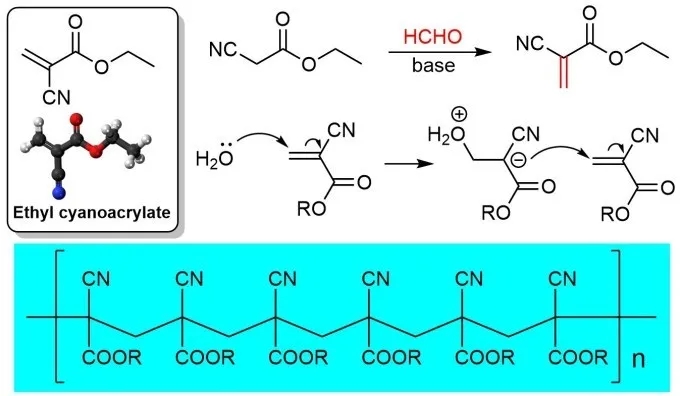 composition of super glue 502-ethyl cyanoacrylate https://en.m.wikipedia.org/wiki/Nitrile https://en.m.wikipedia.org/wiki/Ethyl_cyanoacetate
| author | mikewick77 |
|---|---|
| permlink | stxp3f |
| category | intercellular |
| json_metadata | {"app":"hiveblog/0.1","image":["https://images.hive.blog/DQmdfCUGCLG9QRCrLdFaymAtevBN7rNYWjMdLp2XNiwmrnA/20200514120416_63802.jpg"],"links":["https://en.m.wikipedia.org/wiki/Nitrile"]} |
| created | 2025-03-30 11:26:03 |
| last_update | 2025-03-31 19:01:33 |
| depth | 1 |
| children | 4 |
| last_payout | 2025-04-06 11:26:03 |
| cashout_time | 1969-12-31 23:59:59 |
| total_payout_value | 0.000 HBD |
| curator_payout_value | 0.000 HBD |
| pending_payout_value | 0.000 HBD |
| promoted | 0.000 HBD |
| body_length | 271 |
| author_reputation | 545,063,717,246 |
| root_title | "Intercellular Homeostasis" |
| beneficiaries | [] |
| max_accepted_payout | 1,000,000.000 HBD |
| percent_hbd | 10,000 |
| post_id | 141,775,326 |
| net_rshares | 0 |
Cycloaddition Amino Acid Pyrrole Furan Furfural Hydroxymethylfurfural (HMF) 5-Hydroxymethylfurfural (5-HMF) is one of the most promising molecules with huge synthetic potential. https://en.m.wikipedia.org/wiki/Nitrile https://en.m.wikipedia.org/wiki/Nisin https://en.m.wikipedia.org/wiki/Nitrone https://en.m.wikipedia.org/wiki/Nitronate https://en.m.wikipedia.org/wiki/N-Oxoammonium_salt
| author | mikewick77 |
|---|---|
| permlink | stzor6 |
| category | intercellular |
| json_metadata | {"app":"hiveblog/0.1","links":["https://en.m.wikipedia.org/wiki/Nitrile"]} |
| created | 2025-03-31 13:13:54 |
| last_update | 2025-03-31 19:01:15 |
| depth | 2 |
| children | 0 |
| last_payout | 2025-04-07 13:13:54 |
| cashout_time | 1969-12-31 23:59:59 |
| total_payout_value | 0.000 HBD |
| curator_payout_value | 0.000 HBD |
| pending_payout_value | 0.000 HBD |
| promoted | 0.000 HBD |
| body_length | 399 |
| author_reputation | 545,063,717,246 |
| root_title | "Intercellular Homeostasis" |
| beneficiaries | [] |
| max_accepted_payout | 1,000,000.000 HBD |
| percent_hbd | 10,000 |
| post_id | 141,796,860 |
| net_rshares | 0 |
Regeneration Pathway Warburg Effect (Oncology) https://en.m.wikipedia.org/wiki/Warburg_effect_(oncology) https://en.m.wikipedia.org/wiki/Leptin Fenbendazole acts as a moderate microtubule destabilizing agent and causes cancer cell death by modulating multiple cellular pathways https://pmc.ncbi.nlm.nih.gov/articles/PMC6085345/ The Antitumor Potentials of Benzimidazole Anthelmintics as Repurposing Drugs https://pmc.ncbi.nlm.nih.gov/articles/PMC7458798/ .. Fenbendazole and SV40: Some research suggests that fenbendazole may have an anti-cancer effect, potentially by inhibiting the growth or spread of cells infected with SV40. N-acetylcysteine (NAC) solutions, like Acetadote, typically have a pH range of 6.0 to 7.5. This range ensures the solution is neither too acidic nor too alkaline. Researchers discover intake of FDA-approved drug modulates disease progression in Alzheimer’s disease model https://medicine.iu.edu/news/2022/03/niacin-alzheimers-research Niacin, a B vitamin, has shown promise in modulating microglial response and potentially attenuating amyloid-induced pathology in models of Alzheimer's disease, particularly through the activation of the niacin receptor HCAR2. .. Serotonin-Producing Neuroendocrine Tumors (NETs): In patients with serotonin-producing NETs, tryptophan and niacin can be deficient, as the tumors can divert tryptophan metabolism towards serotonin production. Carcinoid Syndrome: When NETs, particularly those in the gastrointestinal tract, release hormones like serotonin, they can cause carcinoid syndrome. Carcinoid Heart Disease: High levels of serotonin can also contribute to carcinoid heart disease, a condition characterized by fibrosis (scarring) of the heart valves, particularly on the right side of the heart. 5-HT & 5-HIAA 5-HIAA (5-hydroxyindoleacetic acid) is the primary metabolite of serotonin (5-HT), a neurotransmitter and hormone. 5-Hydroxyindoleacetic acid (5-HIAA) is a waste product in the urine that measures the body's serotonin levels. It's used to diagnose and monitor carcinoid tumors, a type of neuroendocrine tumor. 5-HIAA levels can also indicate other conditions, such as celiac disease, cystic fibrosis, and autism spectrum disorder. 5-HIAA a biomarker for inborn errors of metabolism, diseases of malabsorption, and psychiatric conditions. An increase in brain 5-HT contents appears to have an important part in the therapeutic activity of Niacin. Neurochemical results show a vital role of Niacin by inhibiting MAOs and increasing 5-HT levels. Simultaneously, Niacin reduces redox status by decreasing oxidative stress marker and increasing antioxidant enzyme is also in favor of its protective effect for reducing anxiety and enhancing exploratory activity. In-silico studies also recommend that Niacin instigated increase in 5-HT levels probably due to binding of Niacin with MAOs.
| author | mikewick77 |
|---|---|
| permlink | su0qs5 |
| category | intercellular |
| json_metadata | {"app":"hiveblog/0.1","links":["https://en.m.wikipedia.org/wiki/Warburg_effect_"]} |
| created | 2025-04-01 02:55:18 |
| last_update | 2025-04-04 17:33:57 |
| depth | 2 |
| children | 0 |
| last_payout | 2025-04-08 02:55:18 |
| cashout_time | 1969-12-31 23:59:59 |
| total_payout_value | 0.000 HBD |
| curator_payout_value | 0.000 HBD |
| pending_payout_value | 0.000 HBD |
| promoted | 0.000 HBD |
| body_length | 2,891 |
| author_reputation | 545,063,717,246 |
| root_title | "Intercellular Homeostasis" |
| beneficiaries | [] |
| max_accepted_payout | 1,000,000.000 HBD |
| percent_hbd | 10,000 |
| post_id | 141,810,978 |
| net_rshares | 0 |
Adult Stem Cell Regeneration Nicotinamide Promotes Cell Survival and Differentiation as Kinase Inhibitor in Human Pluripotent Stem Cells https://pmc.ncbi.nlm.nih.gov/articles/PMC6294242/ Adult Stem Cell Regeneration: Adult stem cells are involved in tissue repair and regeneration throughout life. Niacin's ability to boost NAD+ and improve mitochondrial function may contribute to the rejuvenation and enhanced activity of these stem cells. Research also suggests that niacin can enhance the expansion of adult stem cells from various tissues, including pancreas, colon, bone marrow, and umbilical cord. Niacin Cures Systemic NAD+ Deficiency and Improves Muscle Performance in Adult-Onset Mitochondrial Myopathy https://www.cell.com/cell-metabolism/fulltext/S1550-4131(20)30190-X?_returnURL=https%3A%2F%2Flinkinghub.elsevier.com%2Fretrieve%2Fpii%2FS155041312030190X%3Fshowall%3Dtrue Royal Jelly Honey Amono Acid Methionine Hematopoietic Stem Cell Regeneration Royal jelly, a substance secreted by honeybees, contains methionine and other amino acids, and has shown potential in promoting stem cell function and regenerative processes, with some studies suggesting its ability to increase hematopoietic stem cell counts and enhance learning and memory. New Insights into the Biological and Pharmaceutical Properties of Royal Jelly https://pmc.ncbi.nlm.nih.gov/articles/PMC7014095/ Royal Jelly: Biological Action and Health Benefits https://pmc.ncbi.nlm.nih.gov/articles/PMC11172503/ Royal Jelly Increases Hematopoietic Stem Cells in Peripheral Blood https://pmc.ncbi.nlm.nih.gov/articles/PMC9859695/ .. Hydroxycarboxylic Acid Receptor 2 GPR109A HCA2 GPER AREG Ribose Nicotinamide Riboside Prostaglandin Short-Chain Fatty Acid (SCFA) Dietary Fiber Fermentation https://en.m.wikipedia.org/wiki/Hydroxycarboxylic_acid_receptor_2 https://en.m.wikipedia.org/wiki/GPER Niacin Insulin Sensitivity Resistance Sirtuin Adiponectin T2D Sulfur Insulin Deformation Hypothesis Niacin (Vitamin B3) https://examine.com/supplements/vitamin-b3/research/?srsltid=AfmBOorOjULBJ4uD0Tdoqh4FbsitOEFGlOVwh2e7MSqiZ6XpPwv3wnoe#PlOn4Jq-interactions-with-glucose-metabolism Niacin fine-tunes energy homeostasis through canonical GPR109A signaling https://www.biorxiv.org/content/10.1101/382416v1.full Niacin regulates glucose metabolism and osteogenic differentiation via the SIRT2-C/EBPβ-AREG signaling axis https://www.sciencedirect.com/science/article/pii/S0753332224013337 The Promise of Niacin in Neurology https://www.sciencedirect.com/science/article/pii/S1878747923019104 Unraveling the Sulfur Insulin Deformation Hypothesis: A Novel Therapeutic Avenue for Type 2 Diabetes https://www.qeios.com/read/UK9O6V .. Hypothalamus Brain Waves Alpha Theta Alpha waves (8-12 Hz): Associated with relaxed wakefulness, meditation, and daydreaming. Theta waves (4-8 Hz): Linked to deep relaxation, meditation, dreaming, and daydreaming. The hypothalamus is a key brain region involved in regulating homeostasis, including body temperature, hunger, thirst, and sleep-wake cycles. The hypothalamus's role in regulating sleep-wake cycles can influence the dominance of different brainwave frequencies (e.g., theta waves during sleep, beta waves during wakefulness). The hypothalamus can also influence brainwave activity through its connections with other brain regions, such as the limbic system and cortex. Theta waves are particularly prominent in the hippocampus, a brain region crucial for memory formation and spatial navigation. Theta oscillations in the hippocampus are thought to play a role in coordinating neuronal activity and facilitating memory consolidation.
| author | mikewick77 |
|---|---|
| permlink | sublt3 |
| category | intercellular |
| json_metadata | {"app":"hiveblog/0.1","links":["https://pmc.ncbi.nlm.nih.gov/articles/PMC6294242/"]} |
| created | 2025-04-06 23:41:27 |
| last_update | 2025-04-15 05:42:54 |
| depth | 2 |
| children | 0 |
| last_payout | 2025-04-13 23:41:27 |
| cashout_time | 1969-12-31 23:59:59 |
| total_payout_value | 0.000 HBD |
| curator_payout_value | 0.000 HBD |
| pending_payout_value | 0.000 HBD |
| promoted | 0.000 HBD |
| body_length | 3,701 |
| author_reputation | 545,063,717,246 |
| root_title | "Intercellular Homeostasis" |
| beneficiaries | [] |
| max_accepted_payout | 1,000,000.000 HBD |
| percent_hbd | 10,000 |
| post_id | 141,939,072 |
| net_rshares | 0 |
The presence of a methyl group, along with the naphthoquinone structure, is essential for the biological activity of vitamin K, particularly its role in blood clotting and bone metabolism. The "Sulfur Insulin Deformation Hypothesis" suggests that organic sulfur deficiency can lead to insulin deformation and impaired function in Type 2 Diabetes (T2D), rather than solely relying on the traditional concept of insulin resistance. This hypothesis proposes that proper disulfide bond formation within the insulin molecule is crucial for its functionality, and that a lack of organic sulfur can disrupt this process. Insulin is a protein hormone composed of two chains linked by disulfide bonds, which are formed by sulfur atoms. These bonds are essential for maintaining the proper three-dimensional structure of insulin, which is crucial for its activity. Niacin's Role: Long-term niacin treatment has been shown to cause whole-body insulin resistance. Adipose Tissue Adipocyte MicroRNAs Lipolysis PDE3B Homocysteine Methyl CH3 .. Unraveling the Sulfur Insulin Deformation Hypothesis: A Novel Therapeutic Avenue for Type 2 Diabetes https://www.qeios.com/read/UK9O6V Niacin https://examine.com/supplements/vitamin-b3/research/?srsltid=AfmBOorOjULBJ4uD0Tdoqh4FbsitOEFGlOVwh2e7MSqiZ6XpPwv3wnoe#PlOn4Jq-interactions-with-glucose-metabolism
| author | mikewick77 |
|---|---|
| permlink | surgfc |
| category | intercellular |
| json_metadata | {"app":"hiveblog/0.1","links":["https://www.qeios.com/read/UK9O6V"]} |
| created | 2025-04-15 13:06:48 |
| last_update | 2025-04-15 15:31:15 |
| depth | 2 |
| children | 0 |
| last_payout | 2025-04-22 13:06:48 |
| cashout_time | 1969-12-31 23:59:59 |
| total_payout_value | 0.000 HBD |
| curator_payout_value | 0.000 HBD |
| pending_payout_value | 0.000 HBD |
| promoted | 0.000 HBD |
| body_length | 1,349 |
| author_reputation | 545,063,717,246 |
| root_title | "Intercellular Homeostasis" |
| beneficiaries | [] |
| max_accepted_payout | 1,000,000.000 HBD |
| percent_hbd | 10,000 |
| post_id | 142,112,323 |
| net_rshares | 0 |
Nixtamalization Alkaline Blanching Nitrogen to Niacin Soaking corn kernels in an alkaline solution, like lime or wood ash, before cooking. This alkaline treatment releases niacin (vitamin B3) from the corn, making it bioavailable. Lime and ash are highly alkaline: the alkalinity helps the dissolution of hemicellulose, the major glue-like component of the maize cell walls, and loosens the hulls from the kernels and softens the maize. The tryptophan in corn proteins is made more available for human absorption, thus helping to prevent niacin deficiency. Tryptophan is the metabolic precursor of endogenous niacin (Vitamin B3). Nixtamalized corn has several benefits over unprocessed grain: It is more easily ground, its nutritional value is increased, flavor and aroma are improved, and mycotoxins are reduced by up to 97–100% (for aflatoxins). In the first step of nixtamalization, kernels of dried maize are cooked in an alkaline solution at or near the mixture's boiling point. Some of the corn oil is broken down into emulsifying agents (monoglycerides and diglycerides), while bonding of the maize proteins to each other is also facilitated. The divalent calcium in lime acts as a cross-linking agent for protein and polysaccharide acidic side chains. .. Nixtamalization: Definition: A traditional food processing technique for corn (maize) that involves cooking it in an alkaline solution. Impact on Nutrients: Nixtamalization can improve the bioavailability of some nutrients, including certain minerals and vitamin B3 Relevance to Homeostasis and Redox: The alkaline solution can enhance the solubility and bioavailability of certain metal ions, which can influence ion homeostasis and potentially impact redox-related enzyme activity. https://www.cimmyt.org/news/what-is-nixtamalization/ .. Nixtamalization convert Carbon, Nitrogen & Sulfur from Plant Biomass (weeds, tumbleweed, grass) into bioavailable Niacin & MSM pulp. all the green plants & even the dried up weeds, all of it is loaded with Nitrogen locked into complex compounds. needs a Alkaline Blanch, briefly immersed in boiling water. if the world goes upside down for a little while, this is both a simple food manufacturing process & medicine. out of yard weeds, a little fire & water & wood ash. .. Preparing the Alkaline Solution: Traditionally, a solution of water and lime (calcium hydroxide) was used. The lime (or wood ash) is typically dissolved in water and used to boil the corn. Cooking and Steeping: The corn kernels are boiled in the alkaline solution for a set amount of time, usually around an hour. The cooking time and soaking time are determined by the size of the corn kernels. After boiling, the corn is left to soak in the solution for several hours (8-12).
| author | mikewick77 |
|---|---|
| permlink | sukmv1 |
| category | intercellular |
| json_metadata | {"app":"hiveblog/0.1","links":["https://www.cimmyt.org/news/what-is-nixtamalization/"]} |
| created | 2025-04-11 20:42:36 |
| last_update | 2025-04-29 23:47:21 |
| depth | 1 |
| children | 6 |
| last_payout | 2025-04-18 20:42:36 |
| cashout_time | 1969-12-31 23:59:59 |
| total_payout_value | 0.000 HBD |
| curator_payout_value | 0.000 HBD |
| pending_payout_value | 0.000 HBD |
| promoted | 0.000 HBD |
| body_length | 2,789 |
| author_reputation | 545,063,717,246 |
| root_title | "Intercellular Homeostasis" |
| beneficiaries | [] |
| max_accepted_payout | 1,000,000.000 HBD |
| percent_hbd | 10,000 |
| post_id | 142,045,664 |
| net_rshares | 0 |
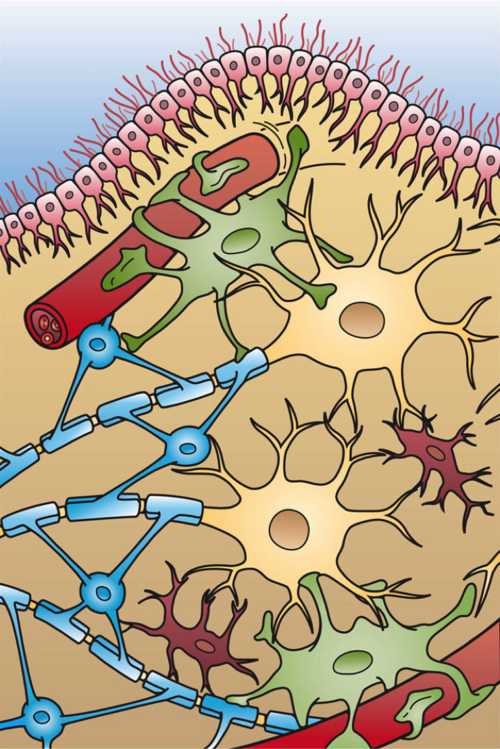 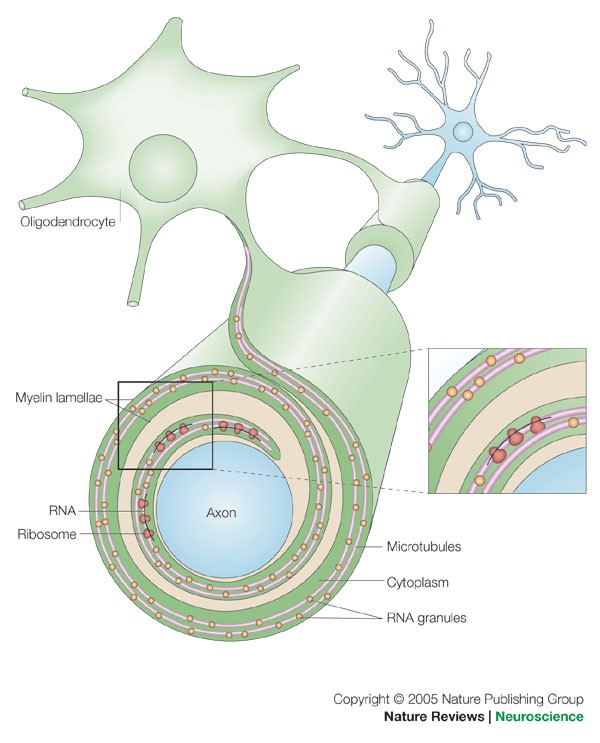 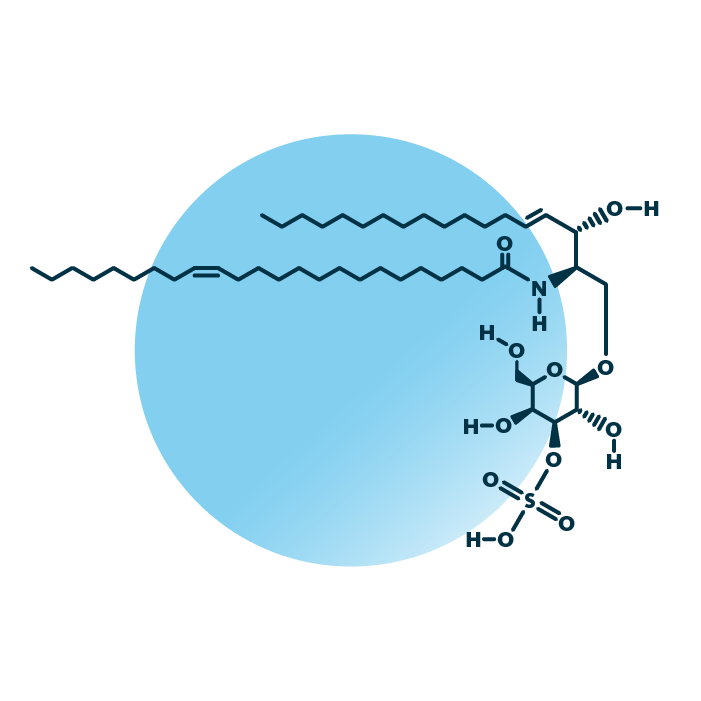 Sulfatide Ceramide Amyloid Precursor Protein (APP) Secretase Presenilin N-terminus Origin of Aβ: The Aβ peptide is cleaved from the amyloid precursor protein (APP) by enzymes called beta-secretase and gamma-secretase. Amyloid-beta (Aβ) Peptide: The core component of amyloid plaques is the Aβ peptide, a small protein (40-42 amino acids). Aggregation and Fibril Formation: Aβ peptides aggregate to form oligomers, then protofibrils, and finally, amyloid fibrils. These fibrils have a high β-sheet structure. β-Secretase (BACE1): BACE1 cleaves APP at the N-terminus of the Aβ peptide, initiating the amyloidogenic pathway. https://en.m.wikipedia.org/wiki/Amyloid-beta_precursor_protein https://en.m.wikipedia.org/wiki/Amyloid-beta_precursor_protein_secretase https://en.m.wikipedia.org/wiki/Presenilin .. Adipose Adipocyte Endoplasmic Reticulum Myalgic Encephalomyelitis Endothelin Myelin .. NMN: The NAD precursor at the intersection between axon degeneration and anti-ageing therapies NMN Nicotinic Acid Mononucleotide Wallerian Degeneration Toxic NMN Accumulation Axon Degeneration Programmed Axon Death SARM1 NMNAT2 Depletion Homocysteine Modulator Sirtuin AMPK p53 Hesperidin Glial Cells (Gliocytes) NMN: The NAD precursor at the intersection between axon degeneration and anti-ageing therapies https://www.sciencedirect.com/science/article/pii/S0168010223000044 Nerve Fiber Degeneration https://www.sciencedirect.com/topics/biochemistry-genetics-and-molecular-biology/nerve-fiber-degeneration Subcellular one carbon metabolism in cancer, aging and epigenetics https://www.frontiersin.org/journals/epigenetics-and-epigenomics/articles/10.3389/freae.2024.1451971/full .. Thionine Methyl CH3 Methionine MTHFS SAM-e Homocysteine SARM1 SARM1 activity is influenced by factors like homocysteine levels and S-adenosylmethionine (SAM). Increased homocysteine levels, often due to MTHFR mutations, can affect SARM1 activity and potentially lead to neurodegenerative processes.SAM, which is produced from methionine, is an important methyl donor that can influence SARM1 activity and nerve cell health. SARM1, homocysteine, and MTHFR are interconnected in a complex metabolic pathway that plays a role in various physiological processes, including nerve health and methylation reactions. MTHFR is an enzyme that regulates homocysteine levels, and mutations in the MTHFR gene can lead to elevated homocysteine, which in turn can affect SARM1 activity and downstream cellular processes. .. The most common side effects experienced by people who overdose on bromelain are nausea, vomiting, diarrhea, palpitation, indigestion, loss of appetite, headache, muscle pain, dizziness, drowsiness, and lethargy. What are the symptoms of b12 overload? (similar to overdose symptoms of: Magnesium, Bromelain, Nicotinamide Riboside) High doses of vitamin B-12, such as those used to treat a deficiency, might cause: Headache. Nausea and vomiting. Diarrhea. Fatigue or weakness. Tingling sensation in hands and feet.
| author | mikewick77 |
|---|---|
| permlink | suorx3 |
| category | intercellular |
| json_metadata | {"app":"hiveblog/0.1","image":["https://images.hive.blog/DQmX8UMjKHoEYqdNVRWzLW1dPWtRzbxwhfrnh68YQDV4hmz/500px-Glial_Cell_Types.png","https://images.hive.blog/DQmWna89jJTs996EL7jmaKwfqKpw59JUmgSAJwWu1oPQjaN/41583_2005_Article_BFnrn1743_Fig1_HTML.jpg","https://images.hive.blog/DQmUfpRZ47cSkYCmiXeCXDgYvJAxHG3LPhEYeJXPcEGVGy9/example_structure_of_sulfatide_42-2-2.png"],"links":["https://en.m.wikipedia.org/wiki/Amyloid-beta_precursor_protein"]} |
| created | 2025-04-14 02:22:15 |
| last_update | 2025-04-28 01:44:30 |
| depth | 2 |
| children | 0 |
| last_payout | 2025-04-21 02:22:15 |
| cashout_time | 1969-12-31 23:59:59 |
| total_payout_value | 0.000 HBD |
| curator_payout_value | 0.000 HBD |
| pending_payout_value | 0.000 HBD |
| promoted | 0.000 HBD |
| body_length | 3,522 |
| author_reputation | 545,063,717,246 |
| root_title | "Intercellular Homeostasis" |
| beneficiaries | [] |
| max_accepted_payout | 1,000,000.000 HBD |
| percent_hbd | 10,000 |
| post_id | 142,083,574 |
| net_rshares | 0 |
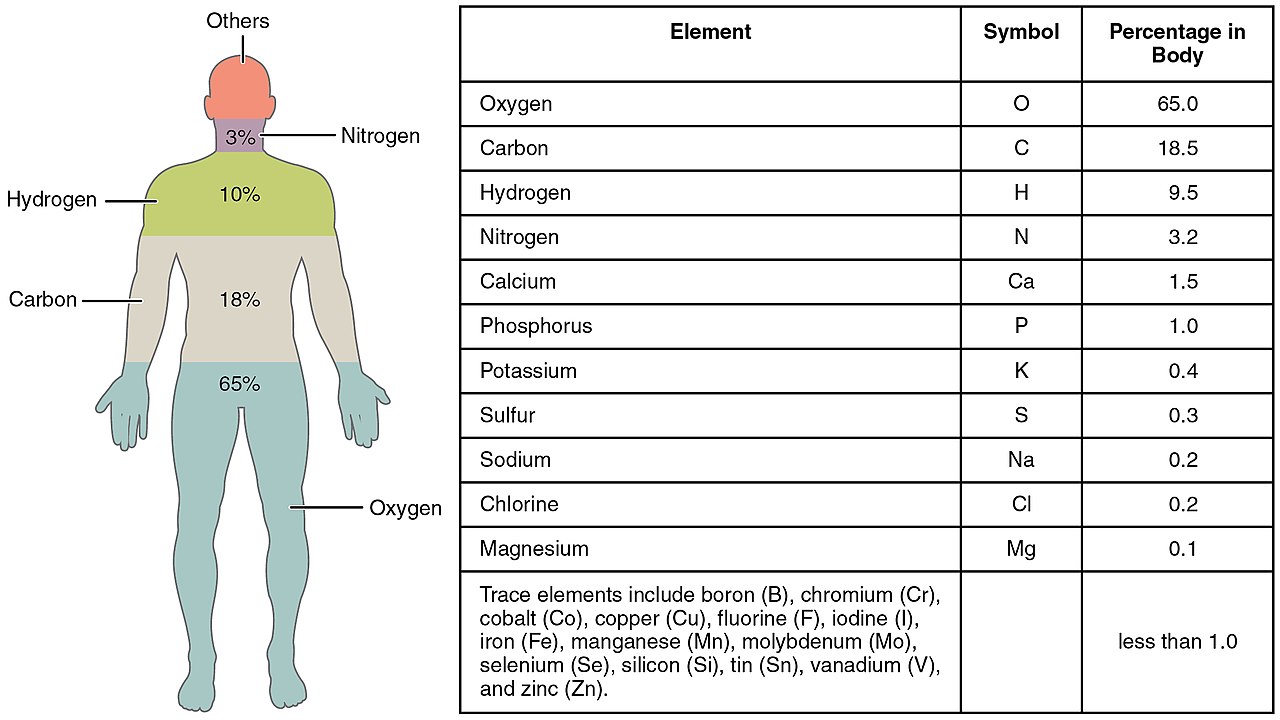 Biometals Metalloprotein Metalloenzyme Ion Homeostasis Glycosylation Metal Glycosylation Metalloglycobiology Congenital Disorders of Glycosylation (CDG) Biometal (biology) https://en.m.wikipedia.org/wiki/Biometal_(biology) Metalloglycobiology: The power of metals in regulating glycosylation https://www.sciencedirect.com/science/article/pii/S0304416523001101 Hensen's Cell Schwann Cell Sulfatide Sulfoglycosphingolipid Lipidprotein Sphingomyelin Glycosphingolipid Sulfatides are glycolipids found in serum lipoproteins, they are also a major lipid component of myelin, the lipid coating around neuronal axons. Sulfatides, also known as sulfated galactocerebrosides, are a class of sulfolipids with a sulfate group attached to a carbohydrate. They are not only found in the nervous system but also in serum lipoproteins. https://en.m.wikipedia.org/wiki/Hensen%27s_cell https://en.m.wikipedia.org/wiki/Schwann_cell https://en.m.wikipedia.org/wiki/Sulfatide https://en.m.wikipedia.org/wiki/Glycocalyx .. Indole Alkaloid Conolidine https://en.m.wikipedia.org/wiki/Indole_alkaloid .. Cortisol Pregnane Glucocorticoid Galactosylceramide Ceramide Adrenal Tryptophan Indole Rings Microtubule Glycocalyx https://en.m.wikipedia.org/wiki/Eosinophilia%E2%80%93myalgia_syndrome .. On the emergence of P-Loop NTPase and Rossmann enzymes from a Beta-Alpha-Beta ancestral fragment https://pmc.ncbi.nlm.nih.gov/articles/PMC7758060/ Microtubules play a crucial role in the formation and maintenance of myelin sheaths, particularly in oligodendrocytes, the cells responsible for myelin production in the central nervous system. These microtubules are essential for the extension of oligodendrocyte processes and the deposition of myelin. Specifically, Golgi outposts, specialized structures in oligodendrocytes, nucleate microtubules and are crucial for myelin sheath elongation. Microtubules are essential for maintaining the shape and structure of oligodendrocytes, which are responsible for wrapping axons in myelin. They act as "cellular highways" for transporting proteins and other materials necessary for myelin formation. Galactocerebroside (GalC), also known as galactosylceramide, is a type of cerebroside that is a major component of myelin in the nervous system. It's a glycolipid, meaning it's a lipid with a sugar molecule attached. GalC is synthesized from ceramide and UDP-galactose and is primarily found in neuronal cell membranes. The glycocalyx, a layer lining the luminal surface of endothelial cells in blood vessels, contains sulfatides as one of its components. Sulfatides are a type of glycolipid that contributes to the overall structure and function of the glycocalyx. Glycocalyx, sulfatide, ceramide, and myelin are all interconnected within the nervous system, with sulfatide and ceramide being key components of myelin and glycocalyx playing a role in the integrity of myelin. Sulfatide, a sulfated form of a galactosylceramide, is a major lipid component of myelin, which acts as an insulating sheath around nerve fibers. Ceramide is a lipid that serves as a building block for sulfatide and other myelin lipids. Glycocalyx, a layer of carbohydrates and proteins on cell surfaces, can interact with and influence myelin integrity. .. Niacin Microtubules Nicotinic acid, also known as niacin, can disrupt microtubules, which are part of the cytoskeleton, a network of protein filaments that helps maintain cell shape and supports intracellular transport. Specifically, high concentrations of nicotinic acid can lead to the disassembly of microtubules, potentially affecting processes that rely on this cytoskeletal structure. High concentrations of niacin can disassemble the microtubule cytoskeleton and degrade β-tubulin in cells. β-tubulin has a specific chemical structure, characterized by its ability to bind guanine nucleotides (GTP). Protofilaments associate laterally to form a hollow tube, with 13 protofilaments being the most common arrangement. β-tubulin, a subunit of microtubules, exhibits a complex chemical structure involving multiple secondary structural elements and crucial nitrogen-containing residues for its function. N-terminal domain: This region forms a Rossmann fold and binds the nucleotide (GTP/GDP). Some studies suggest that nicotinic acid's effects on microtubules may be related to changes in intracellular calcium levels. JPT2, or Jupiter Microtubule Associated Homolog 2, is an NAADP (nicotinic acid adenine dinucleotide phosphate) binding protein that is involved in NAADP-mediated Ca2+ release. NAADP is a signaling molecule that can trigger Ca2+ release from intracellular stores, and JPT2 is a protein that helps to facilitate this process.
| author | mikewick77 |
|---|---|
| permlink | sv6pd0 |
| category | intercellular |
| json_metadata | {"app":"hiveblog/0.1","image":["https://images.hive.blog/DQmcPuRTqG9rzp9x9j4r721SLrfU5LfAWPnVApQ7VXB8p1i/1280px-201_Elements_of_the_Human_Body-01.jpg"],"links":["https://en.m.wikipedia.org/wiki/Biometal_"]} |
| created | 2025-04-23 18:43:48 |
| last_update | 2025-04-29 00:54:39 |
| depth | 2 |
| children | 0 |
| last_payout | 2025-04-30 18:43:48 |
| cashout_time | 1969-12-31 23:59:59 |
| total_payout_value | 0.000 HBD |
| curator_payout_value | 0.000 HBD |
| pending_payout_value | 0.000 HBD |
| promoted | 0.000 HBD |
| body_length | 4,915 |
| author_reputation | 545,063,717,246 |
| root_title | "Intercellular Homeostasis" |
| beneficiaries | [] |
| max_accepted_payout | 1,000,000.000 HBD |
| percent_hbd | 10,000 |
| post_id | 142,277,988 |
| net_rshares | 0 |
T Cell Lymphocyte Cytotoxic T Cells Cytotoxic Proteins Perforin Granzymes Mannose https://en.m.wikipedia.org/wiki/Perforin-1 https://en.m.wikipedia.org/wiki/Granzyme_B .. Galactocerebroside (GalC) Glucocerebroside Glucocerebrosidase Glucocerebrosidase is an enzyme with glucosylceramidase activity that cleaves by hydrolysis the β-glycosidic linkage of the chemical glucocerebroside, an intermediate in glycolipid metabolism that is abundant in cell membranes (particularly skin cells). It is localized in the lysosome, where it remains associated with the lysosomal membrane. Domain I forms a three-stranded anti-parallel β-sheet. This domain contains two disulfide bridges that are necessary for correct folding. In Gaucher's disease, the enzyme glucocerebrosidase is nonfunctional and cannot break down glucocerebroside into glucose and ceramide in the lysosome. Affected macrophages, called Gaucher cells, have a distinct appearance similar to "wrinkled tissue paper" under light microscopy, because the substrates build-up within the lysosome. https://en.m.wikipedia.org/wiki/Cerebroside .. Sulfatide Lysosulfatide Metachromatic Leukodystrophy (MLD) Arylsulfatase A (ARSA) .. Coenzyme Q CoQ10 Ubiquinone Quinone Benzoquinone Electron Donor refers to a molecule or substance that donates electrons to another molecule, effectively reducing its oxidation state. Antioxidants act as electron donors, donating electrons to free radicals (a type of ROS) to neutralize them. Examples of electron donors include Triarylamines, Nitrogen & Carbon Ring (Benzene, Phenol). In cellular respiration, glucose acts as an electron donor, donating electrons to electron carriers like NADH. These electrons are then used to generate energy in the form of ATP. Opposite Roles of Co-enzyme Q10 and Formaldehyde in Neurodegenerative Diseases https://pmc.ncbi.nlm.nih.gov/articles/PMC10624093/ .. nate electrons to other substances, typically in redox reactions. In biological systems, glucose is an example of an electron donor, donating electrons to electron carriers like NADH and FADH2 during cellular respiration. Quinones (like ubiquinone or CoQ) are also electron donors, playing a key role in the electron transport chain. Quinones can be synthesized through various methods, including chemical oxidation of phenols, hydroquinones. key synthesis methods: 1. Chemical Oxidation: Phenols: Phenols can be oxidized to quinones using various oxidizing agents, including sodium dichromate and sulfuric acid. .. Oil Nitrogen Sulfur Oxygen Hydrogen Coenzyme A (CoA) Butyryl-CoA Glycine Glutamine Taurine Butyrate Sulfide Quinone Oxidoreductase (SQR) is an enzyme that plays a crucial role in sulfide homeostasis and metabolism in various organisms. It catalyzes the oxidation of sulfide (S2- or HS-) to zero-valent sulfur. Cofactor Binding: SQR utilizes a flavin adenine dinucleotide (FAD) cofactor, which is noncovalently bound to the enzyme during or after synthesis. Nitrogen is a fundamental element in amino acids, which are the building blocks of proteins, including SQR. Therefore, adequate nitrogen is necessary for the overall synthesis of SQR protein. SQR is a flavoprotein, meaning it requires FAD as a cofactor for its function. FAD is derived from riboflavin (vitamin B2). Riboflavin, through its conversion to FAD, acts as a critical cofactor for SQR, enabling the enzyme to perform its vital functions in sulfide metabolism. While riboflavin is required for the conversion of hydrogen sulfide to sulfite via SQOR, it also plays a role in managing sulfite levels through its involvement with other enzymes like glutathione reductase. Sulfide:quinone oxidoreductase (SQR) is a membrane-bound flavoprotein enzyme that plays a crucial role in sulfide metabolism. It catalyzes the oxidation of sulfide (H₂S) to elemental sulfur, a process involved in sulfide detoxification, energy generation by contributing electrons to electron transport chains, and sulfide homeostasis. Sulfate is the final oxidation product of sulfur metabolism. Riboflavin involvement in the conversion of sulfite to sulfate, riboflavin's role in optimizing the earlier steps of the sulfur cycle indirectly affects the overall balance of sulfur compounds. Flavoproteins have either FMN (flavin mononucleotide) or FAD (flavin adenine dinucleotide), both having Nitrogen. .. A Catalytic Trisulfide in Human Sulfide Quinone Oxidoreductase Catalyzes Coenzyme A Persulfide Synthesis and Inhibits Butyrate Oxidation https://www.sciencedirect.com/science/article/pii/S2451945619303150
| author | mikewick77 |
|---|---|
| permlink | svenbr |
| category | intercellular |
| json_metadata | {"app":"hiveblog/0.1","links":["https://en.m.wikipedia.org/wiki/Perforin-1"]} |
| created | 2025-04-28 01:40:36 |
| last_update | 2025-06-17 13:34:30 |
| depth | 2 |
| children | 0 |
| last_payout | 2025-05-05 01:40:36 |
| cashout_time | 1969-12-31 23:59:59 |
| total_payout_value | 0.000 HBD |
| curator_payout_value | 0.000 HBD |
| pending_payout_value | 0.000 HBD |
| promoted | 0.000 HBD |
| body_length | 4,601 |
| author_reputation | 545,063,717,246 |
| root_title | "Intercellular Homeostasis" |
| beneficiaries | [] |
| max_accepted_payout | 1,000,000.000 HBD |
| percent_hbd | 10,000 |
| post_id | 142,362,369 |
| net_rshares | 0 |
MCT Medium Chain Triglyceride Fractionated Oil Fractionation Deacidification Lipase Esterification C8 C10 The synthesis of MCTs involves the combination of MCFAs and glycerol, often with the help of catalysts, to create the desired triglyceride structure. This process can be achieved through esterification or acidolysis reactions. Fatty Acid Methyl Esters: MCTs are often produced from fatty acid methyl esters, which are extracted from sources like coconut or palm kernel oil. Catalysis: This reaction can be catalyzed by enzymes (like lipases) or chemical catalysts, such as acid catalysts or metal catalysts. Acidolysis: Alternatively, MCTs can be synthesized through acidolysis, where MCFAs are exchanged with fatty acids present in long-chain triglycerides. This process is often facilitated by a chemical catalyst like sulfuric acid. Temperature and Pressure: Esterification reactions can be conducted at various temperatures and pressures, ranging from 170°C/40 kPa to 140-160°C. .. Caprylic acid, also known as octanoic acid, is synthesized through the oxidation of its corresponding aldehyde, octanal. This process transforms the aldehyde group (CHO) into a carboxylic acid group (COOH). Oxidation: In the case of caprylic acid, the C8 aldehyde is octanal, which has the structural formula CH3(CH2)6CHO. Process: The oxidation reaction involves the addition of an oxygen atom to the aldehyde group, converting it into a carboxylic acid group. Result: This oxidation produces caprylic acid, CH3(CH2)6COOH. Oxidants: Various oxidizing agents can be used, including hydrogen peroxide, potassium permanganate, and other reagents. reducing agent (also known as a reductant, reducer, or electron donor) is a chemical species that "donates" an electron to an electron recipient (called the oxidizing agent. Examples of substances that are common reducing agents include hydrogen, carbon monoxide, the alkali metals, formic acid, oxalic acid, and sulfite compounds. Citric acid is known for its ability to reduce metal ions, like gold and silver, which is crucial for the formation of nanoparticles. citric acid and its salts are valuable tools in nanoparticle synthesis, acting as both reducing agents and stabilizers, influencing the size, shape, and stability of the resulting nanoparticles. .. Fractionated coconut oil and MCT (medium-chain triglyceride) oil are essentially the same thing; they are both derived from coconut oil and contain a high concentration of MCTs. The key difference is that MCT oil is a specific, concentrated version of MCTs, while fractionated coconut oil is a broader term that can refer to oils with varying MCT compositions. .. Le Chatelier's Principle: This principle helps understand how changes in temperature, like heating, can shift the equilibrium of reactions involving pH. Common Ion Effect: Adding a salt containing a common ion to a solution of a weak acid or base will suppress the dissociation of the weak acid or base, shifting the equilibrium and affecting the pH. This is a direct application of Le Châtelier's principle, where the addition of the common ion is the disturbance. How pH Changes Shift Equilibrium: Adding Acid Decreasing pH: Increases H+ concentration The equilibrium will shift to the left (towards reactants) to consume the excess H+ ions. Adding Base Increasing pH: Decreases H+ concentration (increases OH- concentration). The equilibrium will shift to the right (towards products) to produce more H+ ions and partially offset the reduction in H+. MCTs and DHT Potential DHT Blocking: Some research, primarily in test-tube and animal studies, suggests that MCTs, particularly lauric acid, may inhibit the enzyme 5-alpha reductase, which converts testosterone to DHT. DHT Synthesis: DHT was initially synthesized by hydrogenating testosterone. .. Why no pH for vegetable oil? Vegetable oil is primarily composed of lipids (fats) and does not contain water in a way that would allow for a meaningful pH measurement. Measuring Acidity in Oil: Instead of pH, the acidity of vegetable oil can be measured by its acid value (AV), which reflects the amount of free fatty acids present. This is often determined by a process called titration, where a solution of known acidity is added to the oil until the oil's acidity is neutralized. Importance of Acidity: The acidity of vegetable oil is an indicator of its quality, as it can increase with time and storage conditions due to the breakdown of triglycerides into free fatty acids. For example, virgin olive oils have a relatively low acidity, typically below 2%. .. Glycerol/Glycerin: This three-carbon alcohol molecule is the backbone structure of all triglycerides. Glycerin and glycerol are the same molecule (1,2,3-propanetriol), and they form the backbone of triglycerides. Triglycerides: These are lipids (fats) composed of glycerol bonded to three fatty acid chains. Medium-chain triglycerides (MCTs) are a specific type of triglyceride where the fatty acid chains are medium in length (6 to 12 carbon atoms).
| author | mikewick77 |
|---|---|
| permlink | svsw1i |
| category | intercellular |
| json_metadata | {"app":"hiveblog/0.1"} |
| created | 2025-05-05 18:15:18 |
| last_update | 2025-05-13 07:02:09 |
| depth | 2 |
| children | 0 |
| last_payout | 2025-05-12 18:15:18 |
| cashout_time | 1969-12-31 23:59:59 |
| total_payout_value | 0.000 HBD |
| curator_payout_value | 0.000 HBD |
| pending_payout_value | 0.000 HBD |
| promoted | 0.000 HBD |
| body_length | 5,105 |
| author_reputation | 545,063,717,246 |
| root_title | "Intercellular Homeostasis" |
| beneficiaries | [] |
| max_accepted_payout | 1,000,000.000 HBD |
| percent_hbd | 10,000 |
| post_id | 142,534,562 |
| net_rshares | 0 |
 OSF3 Niosomes Ketogenesis Ketone Bodies Acetate Citrate Mitochondria Acetoacetate ketones produced from omega-3 fatty acids may reduce cognitive deterioration in old age. Ketoacidosis is known to occur in untreated type I diabetes (see diabetic ketoacidosis) and in alcoholics after prolonged binge-drinking without intake of sufficient carbohydrates (see alcoholic ketoacidosis). .. Emulsify Emulsification Surfactant Fats Oil Water Salts Broth Emulsification in cooking refers to mixing oil and water-based liquids like broth, where the oil is dispersed into tiny droplets within the water, forming a stable mixture. Broth: In broth-based dishes, the fat released during cooking can emulsify with the water, creating a creamy or opaque texture. Salt's Role: While salt doesn't directly emulsify, it can influence the stability of an emulsion by affecting the interactions between the oil and water phases. .. Honey Olive Oil Lemon Squeeze 3-4 lemons and place the juice in a glass jar. Add the honey and the olive oil, and with a wooden spoon mix the ingredients until a smooth blend is obtained. Keep the remedy in the fridge with a lid on the jar. Pour the oil into a small saucepan and gently heat. Add the honey and slowly stir until the honey and oil are combined. Leave to cool, after which it will thicken. Give it a good whisk to transform it into a thick satiny syrup. Caramelization of glucose, a chemical process involving sugar breakdown under heat, can impact polyphenol synthesis. This interaction is complex, with studies showing both enhancement and reduction of polyphenol-related reactions. .. Olive Oil Olive Leaf Oleuropein Oleocanthal monounsaturated fatty acids MUFA triglyceride glycerol polyphenol phenol phenylethanoid phenethyl alcohol benzene secoiridoid glycoside hydroxytyrosol elenolic acid glucose glycolipid glucoside .. Phenolic Compounds in Honey and Their Relationship with Antioxidant Activity, Botanical Origin, and Color https://pmc.ncbi.nlm.nih.gov/articles/PMC8614671/ .. Peroxiredoxin, a family of enzymes, relies on a key cysteine residue within its active site for its catalytic activity. This cysteine, often referred to as the "peroxidatic cysteine," is crucial for reducing peroxides like hydrogen peroxide (H2O2). The active site cysteine undergoes oxidation by H2O2, forming a sulfenic acid, which is then recycled back to the thiol form, distinguishing the three enzyme classes. Neutralization of Trace Metals: During the refining of edible oils, citric acid can be added to neutralize trace metals that can catalyze oxidation reactions. How Citric Acid and Citrus Essential Oils Combat Lipid Oxidation: Citric Acid: Citric acid, found in many citrus fruits, is a natural antioxidant that can scavenge free radicals and inhibit lipid oxidation. It can also enhance the nutritional value of the oil. Antioxidants: Antioxidants are reducing agents that play a crucial role in preventing oxidation reactions, especially by neutralizing free radicals. In a redox reaction, antioxidants donate electrons to unstable free radicals, stabilizing them and preventing damage to other molecules. This process makes the antioxidant itself the reducing agent, as it is oxidized by donating electrons. .. Trihydroxy Benzoic Acid Alpha-Glucoside Diglucosyl Gallic Acid Syringic Acid Quercitannic Acid Tannin https://en.m.wikipedia.org/wiki/Syringic_acid .. Caramelized Glucose Glucose caramelization products (GCPs), can undergo polyphenol synthesis under specific conditions. Caramelization can lead to the formation of compounds that exhibit antioxidant activity, often similar to that of polyphenols. Caramelization products, especially those formed in the presence of amino compounds, can exhibit antioxidant activity, polyphenols and reductones as key components in these products. While true polyphenols are not necessarily formed directly during caramelization, the resulting compounds often have similar properties to polyphenols, such as radical scavenging activity and antioxidant capacity against lipid oxidation. Reductones are reducing agents (antioxidants). Some are fairly strong acids. Examples of reductones are glucic acid, reductic acid and ascorbic acid. Glucic acid is an acid produced by the action of acids on cane-sugar or of alkalis on glucose. https://en.m.wikipedia.org/wiki/Reductone https://en.m.wikipedia.org/wiki/Glycolic_acid https://en.m.wikipedia.org/wiki/Glucic_acid https://en.m.wikipedia.org/wiki/Phloroglucinol https://en.m.wikipedia.org/wiki/Salicylic_acid https://en.m.wikipedia.org/wiki/Ceramide .. N-Acetyl Cysteine and Catechin-Derived Polyphenols: A Path Toward Multi-Target Compounds Against Alzheimer's Disease https://journals.sagepub.com/doi/10.3233/JAD-200067?url_ver=Z39.88-2003&rfr_id=ori:rid:crossref.org&rfr_dat=cr_pub%20%200pubmed Results: We found that EPIC-PYR, CAT-PYR, and CAT-PhG inhibit human tau aggregation and significantly increase neuritogenesis in a dose-dependent manner. Interestingly, modification with a phloroglucinol group yielded the most potent molecule of those evaluated, suggesting that the phloroglucinol group may enhance neuroprotective activity of the catechin-derived compounds. Also, as observed with cathechins, NAC promotes neuritogenesis and inhibits tau self-aggregation, possibly through a different pathway. .. Potent Thrombolytic Effect of N-Acetylcysteine on Arterial Thrombi https://www.ahajournals.org/doi/10.1161/circulationaha.117.027290 Impact on Von Willebrand Factor (VWF): Research suggests NAC can affect VWF, a protein involved in platelet aggregation and blood clot formation. By reducing VWF's ability to bind platelets, NAC may help prevent clots. A Heterocycle is a cyclic compound (ring structure) where some of the atoms in the ring are not carbon. Combining NAC with polyphenols to form heterocycles can potentially enhance their individual benefits by creating new molecules with unique properties. Some studies suggest that glycolic acid can enhance the antioxidant activity of certain polyphenols, potentially improving their effectiveness when combined in skincare formulations. Vitamin E and melatonin have been shown to have a synergistic effect with glycolic acid, potentially improving their antioxidant activity and protection against liposome peroxidation. Salicylic acid is a colorless (or white), bitter-tasting solid, it is a precursor to and a metabolite of acetylsalicylic acid (aspirin). .. has to be broken up almost at the atomic level, the Reducing Agents do one thing, but its also the Benzene Rings of the Polyphenol that seem to act as atomistic fish hooks & Reducing Agents the bait to the radical misfolding. and somehow the Sulfur gets the fish hooks into the deep waters. .. Strong acids induce amyloid fibril formation of β2-microglobulin via an anion-binding mechanism https://pmc.ncbi.nlm.nih.gov/articles/PMC8564678/ anions in promoting fibril formation of amyloid protein .. Oxidative Strong Acids Anion Hydrochloric Acid Sulfuric Acid vs Antioxidant Cations Cation-π Polyphenol Cation-π interactions are noncovalent attractive forces between a positively charged entity (cation) and the π-electron cloud of an aromatic ring. In the context of cation-π interactions and chloride, the interaction between a cation (e.g., Na+, K+) and a chloride ion (Cl-) is driven by the attraction of the positive charge of the cation to the negative charge of the chloride ion. Cation-π interactions are a type of non-covalent interaction between a cation and a π system (a system of shared electrons, often found in aromatic molecules). Antioxidants often interact with metal ions (cations) in their mechanisms, for example, some antioxidants can bind to metal ions and prevent them from participating in free radical reactions. Cations are positively charged ions, such as Na+, K+, and Mg2+. Na+, K+, and Mg2+ salts are compounds containing sodium, potassium, and magnesium ions, respectively, paired with a counterion (like chloride, sulfate, etc.) to form a neutral compound. Cation-π interactions are a type of non-covalent interaction where a positively charged cation (like an alkali metal ion or an organic cation) interacts with the π-electron cloud of an aromatic ring. π-electron cloud: Aromatic rings, like benzene, have delocalized electrons that form a cloud above and below the ring, which can interact with other molecules. In biological systems: Cation-π interactions play a role in protein folding, channel blocking, and biomolecular condensates. Chloride ion (Cl-): A negatively charged ion, it's one of the main anions in body fluids and plays a role in maintaining electrolytic balance and nerve function. .. Cation Metals + Chloride Acids - Sodium Chloride (NaCl, common table salt). Potassium Chloride (KCl). Magnesium Chloride (MgCl2) .. Weak & Strong Acids vs Soft & Hard Acids .. Cation–π Interaction Origin of the effect https://en.m.wikipedia.org/wiki/Cation%E2%80%93%CF%80_interaction Benzene, the model π system, has no permanent dipole moment, as the contributions of the weakly polar carbon–hydrogen bonds cancel due to molecular symmetry. However, the electron-rich π system above and below the benzene ring hosts a partial negative charge. A counterbalancing positive charge is associated with the plane of the benzene atoms, resulting in an electric quadrupole (a pair of dipoles, aligned like a parallelogram so there is no net molecular dipole moment). The negatively charged region of the quadrupole can then interact favorably with positively charged species; a particularly strong effect is observed with cations of high charge density. .. Progressive fuzzy cation-π assembly of biological catecholamines https://www.science.org/doi/10.1126/sciadv.aat7457 Tannic acid- and N-acetylcysteine-chitosan-modified magnetic nanoparticles reduce hepatic oxidative stress in https://www.sciencedirect.com/science/article/pii/S0927776524000493
| author | mikewick77 |
|---|---|
| permlink | svygm8 |
| category | intercellular |
| json_metadata | {"app":"hiveblog/0.1","image":["https://images.hive.blog/DQmYFbKCs3VAKJGJuM3WrzPceEmRupcZLKXvUh9UhFubrn6/Schematic_2.jpg"],"links":["https://pmc.ncbi.nlm.nih.gov/articles/PMC8614671/"]} |
| created | 2025-05-08 18:27:45 |
| last_update | 2025-05-24 19:44:21 |
| depth | 2 |
| children | 0 |
| last_payout | 2025-05-15 18:27:45 |
| cashout_time | 1969-12-31 23:59:59 |
| total_payout_value | 0.000 HBD |
| curator_payout_value | 0.000 HBD |
| pending_payout_value | 0.000 HBD |
| promoted | 0.000 HBD |
| body_length | 10,188 |
| author_reputation | 545,063,717,246 |
| root_title | "Intercellular Homeostasis" |
| beneficiaries | [] |
| max_accepted_payout | 1,000,000.000 HBD |
| percent_hbd | 10,000 |
| post_id | 142,608,963 |
| net_rshares | 0 |
Brain Metabolism Folate / Cobalamin Methylfolate Methylcobalamin Acetylcysteine Cysteine Methyl Electrophilic Aromatic Substitution Alcohol Ethanol Acetaldehyde 8-OHdG MTHFR Urea Folate Methylfolate (5-MTHF) Tannic Acid N-Acetylcysteine Chitosan The body needs adequate amounts of folate, vitamin B6, and vitamin B12 to produce cysteine. Folate derived from the Latin word “folium,” which means leaf. Leafy vegetables are among the best dietary sources of folate. The active form of vitamin B9 is a type of folate known as 5-methyltetrahydrofolate (5-MTHF) Before entering your bloodstream, your digestive system converts folate to the biologically active form of vitamin B9 5-MTHF. Folate: This is the natural form of vitamin B9 found in foods like leafy greens and citrus fruits. Methylfolate: This is the active, biologically available form of folate that the body uses. It's also known as 5-methyltetrahydrofolate (5-MTHF) or L-methylfolate. Folic Acid: This is a synthetic form of folate, often found in supplements and fortified foods. .. Folate vs Folic Acid Methylcobalamin vs Cyanocobalamin https://www.healthline.com/nutrition/methylcobalamin-vs-cyanocobalamin .. Inductive Effect: The carbon-hydrogen bonds in a methyl group are slightly polarized, with the electrons being pulled towards the more electronegative carbon atom. This creates a partial negative charge on the carbon, which then pushes electron density towards the atom or group it's attached to. Hyperconjugation: In some cases, especially when there's an adjacent pi system (like in an aromatic ring), hyperconjugation can also contribute to the electron-donating effect. Hyperconjugation involves the interaction of the sigma bonds in the methyl group with the pi system, leading to a more stable and electron-rich environment. Electron-Donating Character: This electron-donating behavior can be observed in various reactions, including electrophilic aromatic substitution where methyl groups often direct incoming electrophiles to the para and ortho positions (the most stable positions due to the increased electron density). In the brain, glucose metabolism and cation transport are tightly linked and essential for neuronal function. Glucose, the brain's primary fuel, is transported across the blood-brain barrier and into cells via specific glucose transporters (GLUTs). Cation transport, particularly of sodium and potassium, is vital for maintaining membrane potential and action potentials in neurons. Glucose metabolism relies on a complex interplay of facilitated diffusion and active transport mechanisms, including the role of cations. Diseases like Alzheimer's and Huntington's are associated with abnormalities in glucose metabolism and cation transport, affecting neuronal function and leading to cognitive and behavioral deficits. .. Ethanol metabolism: The good, the bad, and the ugly https://www.sciencedirect.com/science/article/pii/S0306987720300797 .. Folate Precursors Biosynthesis The main precursors for folate biosynthesis are GTP, p-aminobenzoic acid (PABA), and glutamate. GTP (Guanosine Triphosphate): This nucleoside triphosphate provides the building blocks for the pterin portion of the folate molecule. PABA (Para-aminobenzoic acid): This molecule is crucial for the formation of the pteroyl component of folate. Glutamate: This amino acid is incorporated into the folate structure and is essential for its biological activity. .. Toxic Trans Fat Elaidic Acid Saturated CETP Cholesteryl Ester Transfer Protein Vitamins like B12, and supplements, like carnitine, can play a role in lipid metabolism and energy production, potentially impacting how the body processes fats, including trans fats. Vitamin B12 is a cofactor for mitochondrial enzymes involved in fatty acid metabolism. Carinatine plays a role in transporting long-chain fatty acids into mitochondria for energy production. .. Monoterpenes (Phenol) Polyphenol Volatility: Monoterpenes are generally volatile, while polyphenols are not. Examples: Monoterpenes: Limonene (citrus fruits), menthol, eucalyptol. Polyphenols: Flavonoids (found in fruits and vegetables), anthocyanins (responsible for red and purple colors in plants). Ascorbic acid (C6H8O6) has a different molecular structure compared to citric acid (C6H8O7). Astaxanthin A Xanthophyll Carotenoid found in marine organisms, with studies showing it can be 6,000 times more potent than vitamin C and 550 times more potent than vitamin E. High ORAC Value: Astaxanthin has a very high Oxygen Radical Absorbance Capacity (ORAC) value, indicating its strong antioxidant ability to fight free radicals. Carotenoids: Carotenoids are a group of naturally occurring pigments found in plants and animals, responsible for various colors, including yellow, orange, and red. Xanthophylls: Xanthophylls are a specific subgroup of carotenoids that contain oxygen in their chemical structure. They are often associated with yellow and orange pigments. Astaxanthin's Unique Characteristics: Astaxanthin is a keto-carotenoid with both hydroxyl and ketone functional groups. .. Nitrogen Balance https://en.m.wikipedia.org/wiki/Nitrogen_balance https://en.m.wikipedia.org/wiki/Oxygen_radical_absorbance_capacity https://en.m.wikipedia.org/wiki/List_of_antioxidants_in_food .. Footprints of a Singular 22-Nucleotide RNA Ring at the Origin of Life https://pmc.ncbi.nlm.nih.gov/articles/PMC7285048/ Scientists uncover a multibillion-year epic written into the chemistry of life https://phys.org/news/2024-05-scientists-uncover-multibillion-year-epic.html .. Acetylcysteinamide C5H10N2O2S C5H9NO3S Acetylcysteine Taurine Sulfoxide Sulfonyl Methane Dimethyl Methyl Methylene (Blue) Carotenoid (Red)
| author | mikewick77 |
|---|---|
| permlink | swva7n |
| category | intercellular |
| json_metadata | {"app":"hiveblog/0.1","links":["https://www.healthline.com/nutrition/methylcobalamin-vs-cyanocobalamin"]} |
| created | 2025-05-26 11:50:09 |
| last_update | 2025-06-08 21:06:42 |
| depth | 2 |
| children | 0 |
| last_payout | 2025-06-02 11:50:09 |
| cashout_time | 1969-12-31 23:59:59 |
| total_payout_value | 0.000 HBD |
| curator_payout_value | 0.000 HBD |
| pending_payout_value | 0.000 HBD |
| promoted | 0.000 HBD |
| body_length | 5,818 |
| author_reputation | 545,063,717,246 |
| root_title | "Intercellular Homeostasis" |
| beneficiaries | [] |
| max_accepted_payout | 1,000,000.000 HBD |
| percent_hbd | 10,000 |
| post_id | 142,972,450 |
| net_rshares | 0 |
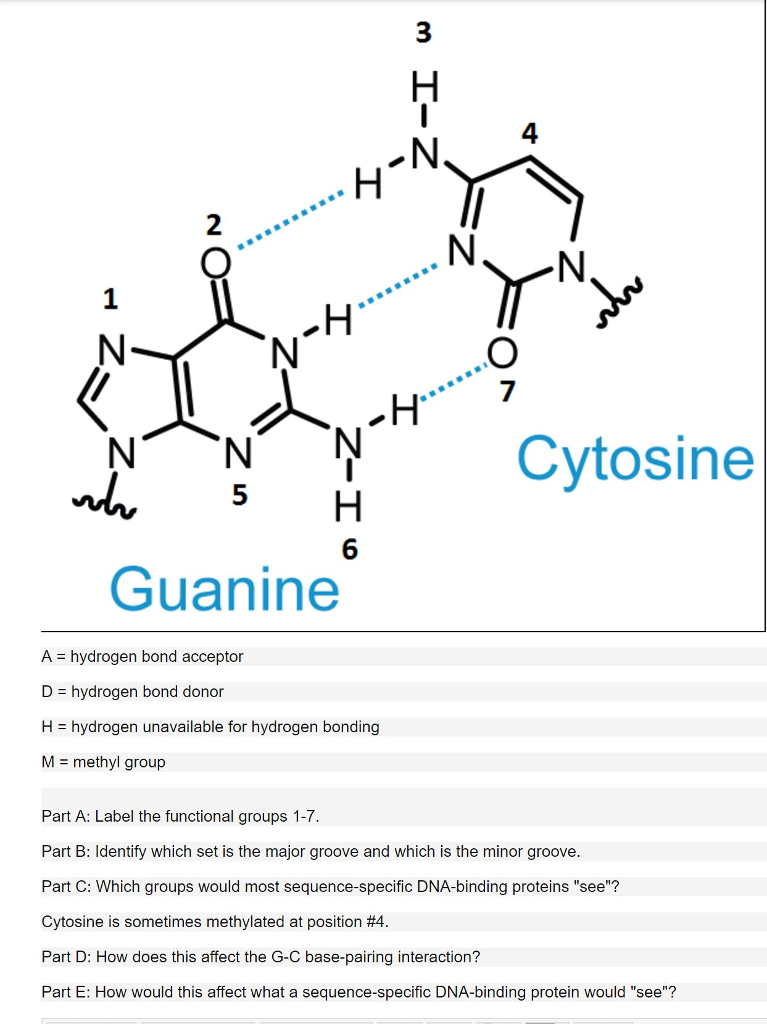  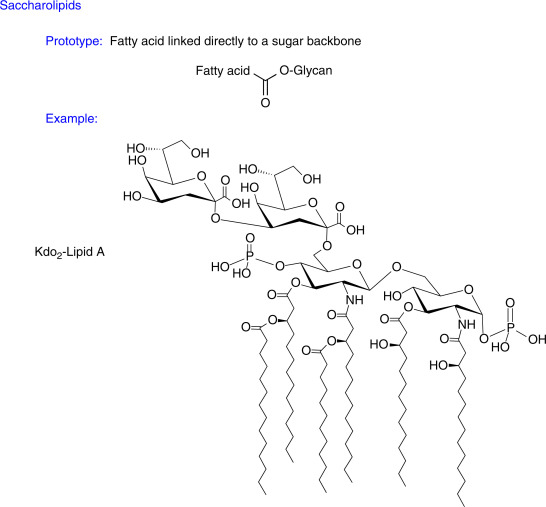 Electron-Donor Methyl-Donor Hydrogen-Donor Nitrogen-Doner DMSO (Sulfur) Monounsaturated Oil (Hydrogen) Niacin (Nitrogen) Antioxidant Reducing Agents Hydrogen Atom Transfer (HAT): Single Electron Transfer (SET) .. Oil [ DMSO ] [ Castor Oil ] Carbon Hydrogen Monounsaturated Oil Water [ Niacin ] [ Honey ] Carbon Nitrogen Amino Protein .. amylin islet amyloid polypeptide (IAPP) autophagy pancreas MUFA PUFA DMSO sulfur antioxidant solvent oxidation squalene triterpene triterpenoid oleanolic acid sulfur-based functional groups with unsaturated polymer chains. Thioesters (Sulfur) formed from coenzyme A, for fatty acid synthesis. Mono- and bicyclic squalene derivatives as potential proxies for anaerobic photosynthesis in lacustrine sulfur-rich sediments. The double bonds (unsaturated chains) in squalene provide the basis for its cyclization into various triterpenoid structures. Squalene: A Triterpene with Unsaturated Chains Synthesized from Acetyl-CoA Squalene is a naturally occurring, highly unsaturated hydrocarbon that belongs to the class of triterpenes. It is a precursor molecule for the biosynthesis of all animal and plant steroids, including cholesterol. Biosynthesis: Squalene is synthesized through the mevalonic acid (MVA) pathway or, in some prokaryotes, through the 2-C-methyl-D-erythritol 4-phosphate (MEP) pathway. In eukaryotes, the MVA pathway begins with the condensation of three acetyl-CoA molecules. Cholesterol synthesis, also known as cholesterologenesis, is a multistep enzymatic process that occurs in the liver's hepatic cells. It starts with acetyl-CoA and takes place in both the cytosol and endoplasmic reticulum (ER) of the hepatocytes. The ER is the primary site of synthesis. Lacustrine Lanosterol Cholesterol Carotenoid Hydroxyl & Ketone Functional Groups Cyclization: Two farnesyl pyrophosphate molecules combine to form squalene, which is then cyclized to form lanosterol. Conversion: Lanosterol is converted to cholesterol through a series of steps. HDL (High-Density Lipoprotein) Cholesterol: DMSO has been shown to increase levels of apolipoprotein A-I (apoA-I), a key protein component of HDL.This increase in apoA-I is associated with a corresponding increase in secreted HDL. Sulfur-containing amino acids (SAAs) are potent modulators of lipid metabolism. SAAs have been shown to increase HDL cholesterol levels. .. https://en.m.wikipedia.org/wiki/Oleanolic_acid https://en.m.wikipedia.org/wiki/Organosulfur_chemistry Terpenoid Synthesis https://www.sciencedirect.com/topics/chemistry/terpenoid-synthesis .. Methylene Blue (MB): Mechanism: MB acts as a cofactor for the enzyme methemoglobin reductase, which converts methemoglobin back into hemoglobin, allowing it to carry oxygen. Mainly used for methemoglobinemia, especially in cases of acetaminophen overdose. Effectiveness: NAC is generally considered the best treatment for acetaminophen overdose, and it can reduce methemoglobin levels. NAC is generally considered a safer alternative to MB for individuals with G6PD deficiency. Elaboration: Methemoglobin: When the iron in hemoglobin is oxidized, it becomes methemoglobin, which cannot carry oxygen. Studies have demonstrated that NAC can significantly reduce DMSO-induced intracellular and mitochondrial reactive oxygen species (ROS) generation. Solubility in DMSO vs. Other Solvents: Nicotinic acid is more soluble in DMSO than in water, ethanol, acetone, or diethyl ether. Highly Soluble: DMSO is a good solvent for niacin, offering a solubility that is higher than what would be expected based on ideal behavior. .. getting some good outcomes lately, testing the idea that Castor or Olive oil & DMSO not only make HDL (good) Cholesterol, but converts the bad Cholesterol into good, because of the Antioxidant activity of being an Electron/Hydrogen Donor. the reason for this is not clearly explained on the internet, but according to the definition of "Antioxidant", DMSO & Castor Oil. seems to appear to match the requirements, at the smallest atomic level, hydrogen is the main component of oil. hydrogen is a proton (electron), and HDL cholesterol is synthesized via coenzyme-A (sulfur). found evidence that DMSO & Castor (any oil) is capable of neutralize & reversing amyloidosis & prion misfolding, specifically because of the powerful antioxidant properties of this Hydrogen Sulfur combination. i noticed eye floaters after using Fenbendazole, killed parasites living in my eyes, the remains never dissolved. so the eye dosnt seem to generate the enzymes to break it down, this reminds me of amyloid plaque, in that its exceptionally tough. DMSO does a lot of different things by itself, but may require the Hydrogen from the oil to work on really tough proteins. the eye tests are interesting because eyes are natural microscopes, so immediate confirmation its does or does not break things up. DMSO & Castor may be acting as both an Electron & Hydrogen Donor, making it a very potent antioxidant plus, something else is going on. trying to get an answer, does DMSO & MSM bind toxic Reactive Nitrogen/Oxygen Species, and restructure them back into antioxidants & amino acids. ive drank a shot of DMSO at 50/50 raito in both water & oil. the water does not dilute the almost instant gut punch & bathroom gunpowder blowout. but with the oil mixed it goes everywhere in the body, almost instantly from head to toe. DMSO alone appears to strip the oil attributes of Hydrogen, dries everything out, with water its just for topical. i dont think DMSO alone is key, needs the oil too, otherwise it makes me feel flushed & i think pure DMSO stripes away the body oils, so add it along to make it more neutral to cells. DMSO Dimethyl sulfoxide, it has the "Methyl" part, but not the 3 Hydrogen Atoms to make "Methyl Doner" (CH3) in the oil, without it it may even accept Hydrogen, essentiality striping the cholesterol & fatty acids required for cellular homeostasis. too much DMSO & Oil seems to trigger Mass Cell Activation of Histamine &/or Reductive Stress, by the antioxidant activity of taking too much ROS & RNS, requiring Hydrogen Peroxide to neutralize the Sulfur. .. Antioxidative reductive stress, also known as reductive stress, is a condition where there's an excess of reducing equivalents, like NADH and glutathione, compared to oxidized equivalents, disrupting normal cell processes. Reductive stress, while seemingly the opposite of oxidative stress, is a state where the cellular environment is too "reduced," leading to imbalances in redox reactions and potentially causing various harmful effects. While oxidative stress is often associated with high levels of reactive oxygen species (ROS) like hydrogen peroxide, reductive stress can also lead to the production of ROS. Excessive antioxidant activity, prolonged antioxidant signaling, mitochondrial dysfunction, and overactivation of NRF2 pathways can all contribute to reductive stress. Reductive Stress (RS) https://en.m.wikipedia.org/wiki/Reductive_stress Antioxidative Stress https://en.m.wikipedia.org/wiki/Antioxidative_stress Reductive stress in cancer: coming out of the shadows https://www.sciencedirect.com/science/article/abs/pii/S2405803323002133 A dose-dependent effect of dimethyl sulfoxide on lipid content, cell viability and oxidative stress in 3T3-L1 adipocytes https://pmc.ncbi.nlm.nih.gov/articles/PMC6197677/ .. [Cold Shock protection] Hydrogen Sulfur Carbon Oxygen Nitrogen [Heat Shock protection] Oxidizing Agents: Citric Acid Hydrogen Peroxide Peroxy-Citric Acid
| author | mikewick77 |
|---|---|
| permlink | sx4vvu |
| category | intercellular |
| json_metadata | {"app":"hiveblog/0.1","image":["https://images.hive.blog/DQmWCswgEYCotQbS1yW4C6kMvanoCCTgxpQHHAP4nN3jTMi/media_21e_21e90b60-86c7-4af0-a6e7-a10a49e5cfc7_phphN2hEb.png","https://images.hive.blog/DQmWj1eUekegCsS5fXxSEv8HXHbcX9SnSSkYCwKRT2Ry4ye/images.jpeg","https://images.hive.blog/DQmT5q7YCz1muTESQ92iun9L9bNHu9in9qJhAw9VzjH3LHs/3-s2.0-B9780123944474100227-f10022-07-9780123944474.jpg"],"links":["https://en.m.wikipedia.org/wiki/Oleanolic_acid"]} |
| created | 2025-05-31 16:16:39 |
| last_update | 2025-06-13 16:16:03 |
| depth | 1 |
| children | 7 |
| last_payout | 2025-06-07 16:16:39 |
| cashout_time | 1969-12-31 23:59:59 |
| total_payout_value | 0.000 HBD |
| curator_payout_value | 0.000 HBD |
| pending_payout_value | 0.000 HBD |
| promoted | 0.000 HBD |
| body_length | 8,122 |
| author_reputation | 545,063,717,246 |
| root_title | "Intercellular Homeostasis" |
| beneficiaries | [] |
| max_accepted_payout | 1,000,000.000 HBD |
| percent_hbd | 10,000 |
| post_id | 143,082,713 |
| net_rshares | 0 |
 MSM 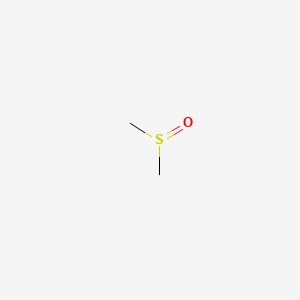 DMSO 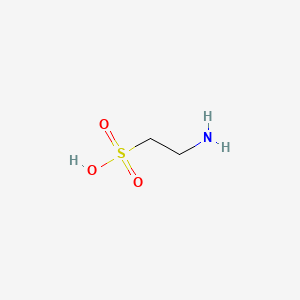 Taurine Hydrogen Bond Donors and Acceptors: Hydrogen Bond Donors: Molecules or groups that provide a polarized hydrogen atom bonded to a highly electronegative atom, typically nitrogen, oxygen, or fluorine. Hydrogen Bond Acceptors: Electronegative atoms with lone pairs of electrons that can interact with the hydrogen bond donor. Role: Crucial for the structure and function of biomolecules like proteins and DNA, as well as the properties of water. Methyl Donors and Acceptors: Methyl Donors: Compounds that can donate a methyl group (-CH3) to another compound, often in enzyme-catalyzed reactions called methylation. Examples: S-adenosyl-L-methionine (SAM), methanol, and certain forms of tetrahydrofolate. Role: Essential for biological processes like gene regulation, neurotransmitter synthesis, and detoxification. Antioxidants and Reducing Agents: Antioxidant Function: Antioxidants neutralize free radicals by donating electrons or hydrogen atoms, thus protecting cells from damage. Mechanisms: Antioxidants can act through various mechanisms, including: Hydrogen Atom Transfer (HAT): Directly donating a hydrogen atom to a free radical. Single Electron Transfer (SET): Donating an electron to a free radical. Antioxidants, often reducing agents, work through two main mechanisms: Hydrogen Atom Transfer (HAT) and Single Electron Transfer (SET). HAT involves the antioxidant donating a hydrogen atom to a free radical, while SET involves the antioxidant donating a single electron. These mechanisms neutralize free radicals, which are harmful to cells. Antioxidants may play a protective role against prion diseases by reducing oxidative stress, which can contribute to the misfolding of the prion protein. Oxidative stress is a hallmark of neurodegeneration, and in prion diseases, it is linked to the conversion of normal prion protein (PrPC) to the misfolded, infectious form (PrPSc). .. Antioxidants and Methemoglobin Reduction: Antioxidants like glutathione and NADH have been shown to reduce methemoglobin levels in vitro. These antioxidants can donate electrons to the ferric iron in methemoglobin, reducing it back to the ferrous state and allowing it to bind oxygen again. Methylene Blue and Other Treatments: Methylene blue is a commonly used treatment for methemoglobinemia, as it acts as an electron carrier to reduce methemoglobin back to hemoglobin. In addition to methylene blue, other treatments like ascorbic acid and riboflavin have also been used, along with N-acetylcysteine. Methylene blue's dual solubility makes it a versatile compound with applications in various fields, including medicine and biology, where it's used as a dye and therapeutic agent. This lipid and water-soluble nature is key to its ability to cross the blood-brain barrier. NAC lipophilicity (oil/fat solubility): NAC is described as a low lipophilic compound, limiting its ability to easily cross cell membranes. Some derivatives of NAC, like NACET (N-acetylcysteine ethyl ester) and NACA (N-acetylcysteine amide), have been synthesized to improve lipophilicity and cell permeability. Combining ethyl ester, glycerol, and amide suggests a molecule incorporating elements of these structures, likely with lipid-like characteristics. This combination could result in molecules that are soluble in lipids (lipid-soluble or lipophilic) due to the presence of fatty acid chains. Lipids are broadly defined as compounds that are insoluble in water but soluble in organic solvents, such as ether. Methylene Blue Thioninium Thionine Taurine Amine Amino Phenothiazine Chloride (salt) Acetate (Vinegar) Thionine, also known as Lauth's violet, is the salt of a heterocyclic compound. A variety of salts are known including the chloride and acetate. The "ine" ending indicates that the compound is an amine. Amines are organic compounds that contain carbon-nitrogen bonds. Amines are formed when one or more hydrogen atoms in ammonia are replaced by alkyl or aryl groups. The nitrogen atom in an amine possesses a lone pair of electrons. Amines can also exist as hetero cyclic compounds. Aniline (C6H5NH2) is the simplest aromatic amine, consisting of a benzene ring bonded to an amino (–NH2) group. The breakdown of amino acids releases amines, famously in the case of decaying fish which smell of trimethylamine. Many neurotransmitters are amines, including epinephrine, norepinephrine, dopamine, serotonin, and histamine. Protonated amino groups (–NH+3) are the most common positively charged moieties in proteins, specifically in the amino acid lysine. The anionic polymer DNA is typically bound to various amine-rich proteins. The terminal charged primary ammonium on lysine forms salt bridges with carboxylate groups of other amino acids in polypeptides, which is one of the primary influences on the three-dimensional structures of proteins. Taurine is synthesized from cysteine, a sulfur-containing amino acid. Cysteine is a building block of proteins and also plays a role in glutathione synthesis, an important antioxidant. While both are involved in sulfur metabolism and can be found in the body, taurine is not considered a proteinogenic amino acid and has unique physiological functions, including osmoregulation and antioxidant action. Role in nitrogen metabolism: Taurine is involved in various physiological processes, including nitrogen metabolism. Studies in animals have shown that supplementing with taurine can increase nitrogen retention and utilization efficiency. MSM is primarily a sulfur-containing compound and its relevance to nitrogen lies more in its ability to support the synthesis of other molecules that contain nitrogen, such as amino acids like taurine. .. Methylene Blue NAC DMSO Ethyl Ester Glycerol Amide Ether Tryptophan Serotonin Syndrome Water/Oil Soluble Amino Acids Niacin Nitrogen Overdose Symptoms .. Hydrogen Bonding with Fatty Acids: DMSO can form hydrogen bonds with fatty acids, particularly at the carboxylic acid group. No Protection Against Lipid Peroxidation in Some Cases: While DMSO can scavenge •OH, it may not always protect against lipid peroxidation in all systems. For instance, some studies suggest that DMSO might not decrease lipid hydroperoxide yield in concentrations where it scavenges •OH in competition with unsaturated fatty acids, possibly because the resulting methyl radicals (•CH3) can initiate lipid peroxidation if their abstraction of hydrogen from fatty acids is faster than other reactions. DMSO's Hydrogen Atom Transfer Potential: While DMSO is known as an aprotic solvent (generally not donating protons), density-functional theory (DFT) calculations suggest that DMSO can participate in hydrogen atom transfer from alkoxyl radicals via proton-coupled electron transfer. .. Glutamine synthesis involves the incorporation of nitrogen and carbon, with contributions from sugar metabolism. Sugar Metabolism: The process of glycolysis, which breaks down glucose, generates intermediates that can feed into glutamine synthesis. For example, glucose can contribute to the carbon skeleton of the precursors required. glutamine synthesis connects nitrogen and carbon metabolism, allowing for the efficient utilization of these elements for various cellular functions, including biosynthesis and energy production.
| author | mikewick77 |
|---|---|
| permlink | sx4zv8 |
| category | intercellular |
| json_metadata | {"app":"hiveblog/0.1","image":["https://images.hive.blog/DQmfP8RwfoCbDQk3dqWzgqXWCT4bQvpFcWVVpbGc6RUtQBx/imgsrv-50.png","https://images.hive.blog/DQmRjbXT1bL99PZ2bHEsJw2ayg344L3Tu1ZFQ6RLiiT3JxL/Screenshot_20250608-124300_Samsung%20Internet_1.jpg","https://images.hive.blog/DQmQedQWtYmHAvgmuMLQLiNqLyzhED8G8fWNEegGpwVnE2L/imgsrv-51.png"]} |
| created | 2025-05-31 17:42:45 |
| last_update | 2025-06-09 19:02:18 |
| depth | 2 |
| children | 0 |
| last_payout | 2025-06-07 17:42:45 |
| cashout_time | 1969-12-31 23:59:59 |
| total_payout_value | 0.000 HBD |
| curator_payout_value | 0.000 HBD |
| pending_payout_value | 0.000 HBD |
| promoted | 0.000 HBD |
| body_length | 7,769 |
| author_reputation | 545,063,717,246 |
| root_title | "Intercellular Homeostasis" |
| beneficiaries | [] |
| max_accepted_payout | 1,000,000.000 HBD |
| percent_hbd | 10,000 |
| post_id | 143,084,198 |
| net_rshares | 0 |
Hydrogen Bonds in Proteins: Role and Strength https://onlinelibrary.wiley.com/doi/10.1002/9780470015902.a0003011.pub2 In Protein Structure: Hydrogen bonds contribute to the folding and stability of protein secondary structures like alpha helices and beta sheets. .. Epinephrine In Anaphylaxis: In individuals with a severe bee sting allergy (anaphylaxis), the venom triggers a strong immune response, leading to the release of various mediators, including histamine. Histamine, in turn, can activate NO production. This increased NO level can contribute to symptoms like hypotension and bronchospasm (tightening of airways). Methylene Blue Treatment: Methylene blue is a drug that inhibits the effects of NO by acting as a guanylyl cyclase inhibitor. It has been explored as a potential treatment for anaphylactic hypotension that doesn't respond to other interventions.
| author | mikewick77 |
|---|---|
| permlink | sxi1v2 |
| category | intercellular |
| json_metadata | {"app":"hiveblog/0.1","links":["https://onlinelibrary.wiley.com/doi/10.1002/9780470015902.a0003011.pub2"]} |
| created | 2025-06-07 18:54:36 |
| last_update | 2025-06-08 10:29:57 |
| depth | 2 |
| children | 0 |
| last_payout | 2025-06-14 18:54:36 |
| cashout_time | 1969-12-31 23:59:59 |
| total_payout_value | 0.000 HBD |
| curator_payout_value | 0.000 HBD |
| pending_payout_value | 0.000 HBD |
| promoted | 0.000 HBD |
| body_length | 878 |
| author_reputation | 545,063,717,246 |
| root_title | "Intercellular Homeostasis" |
| beneficiaries | [] |
| max_accepted_payout | 1,000,000.000 HBD |
| percent_hbd | 10,000 |
| post_id | 143,227,533 |
| net_rshares | 0 |
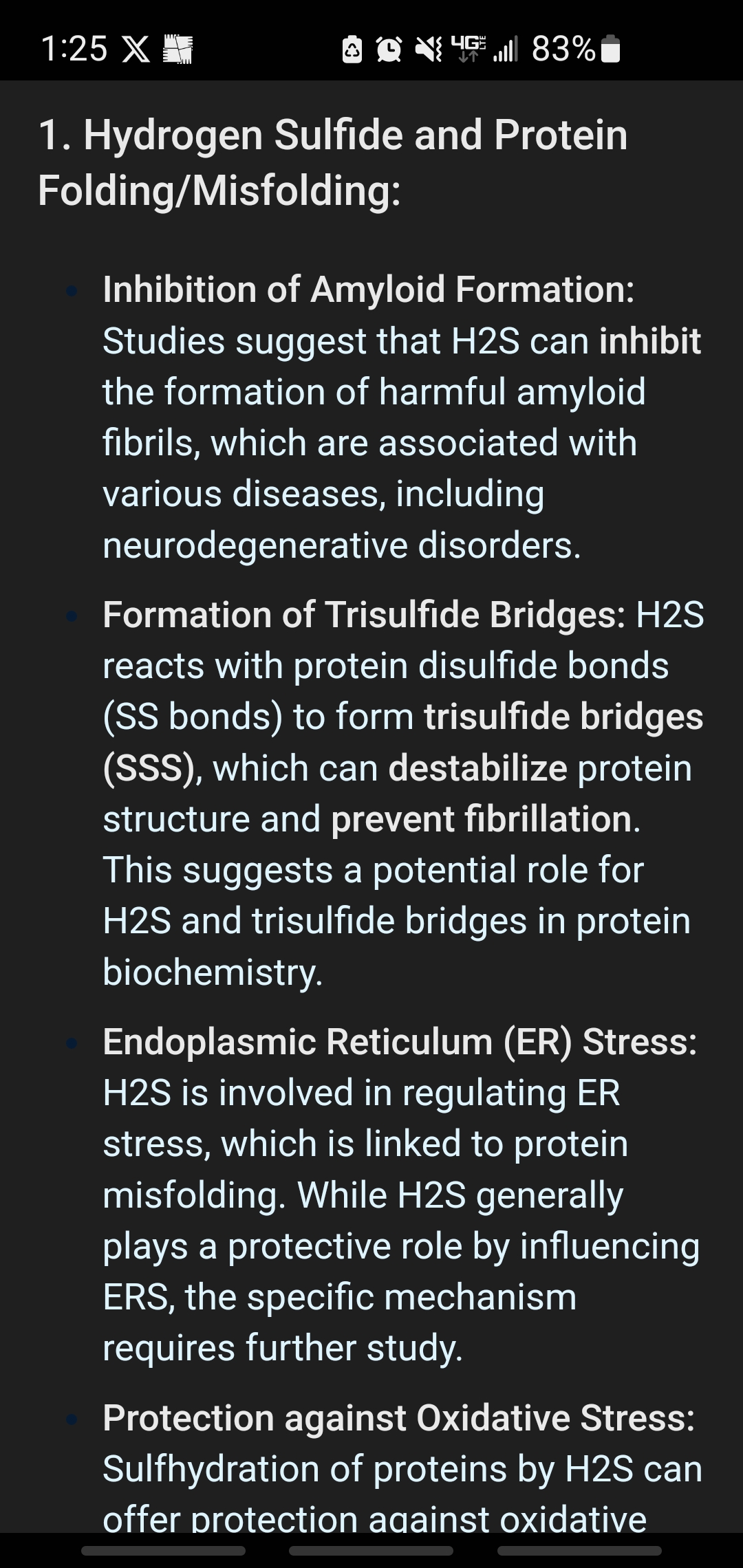 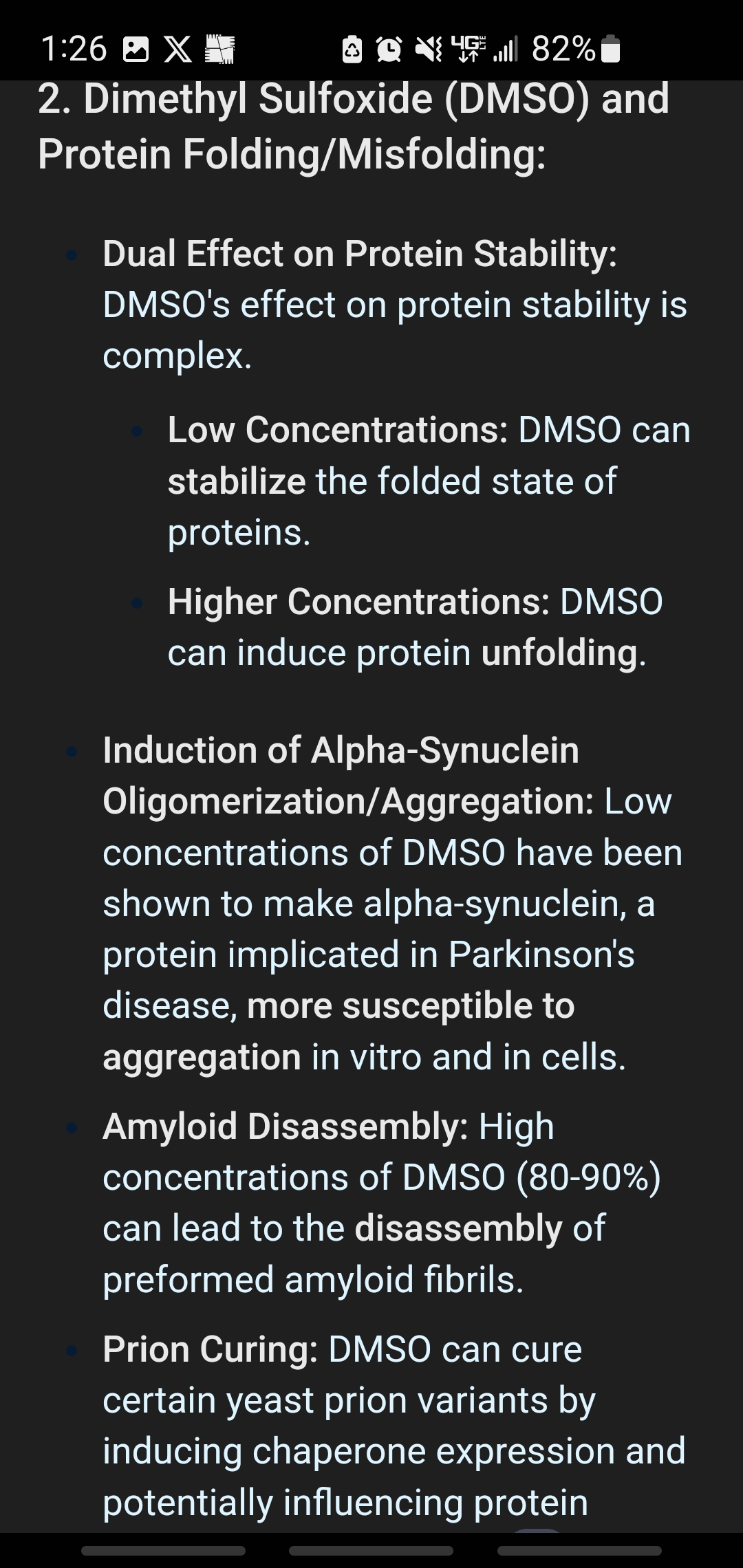 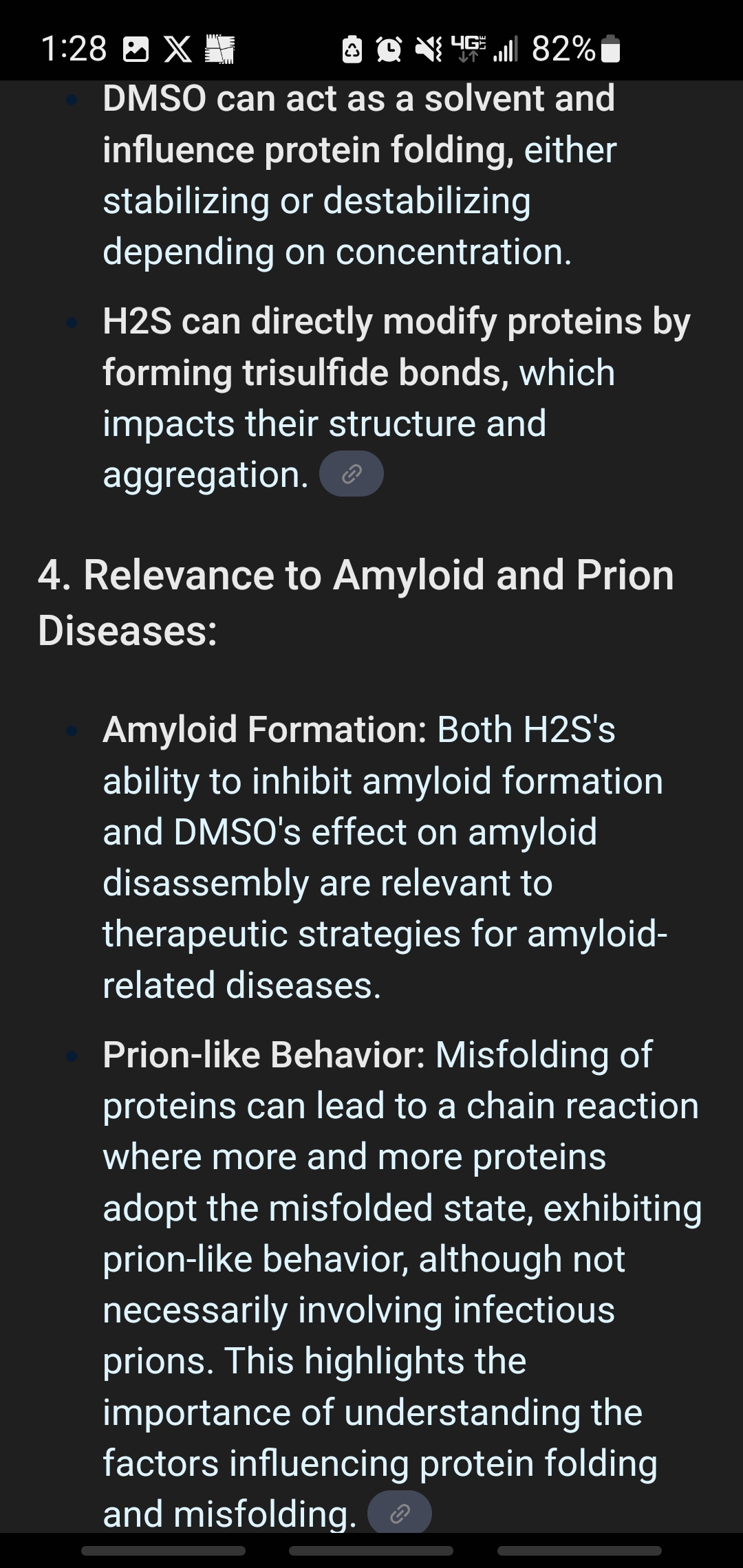 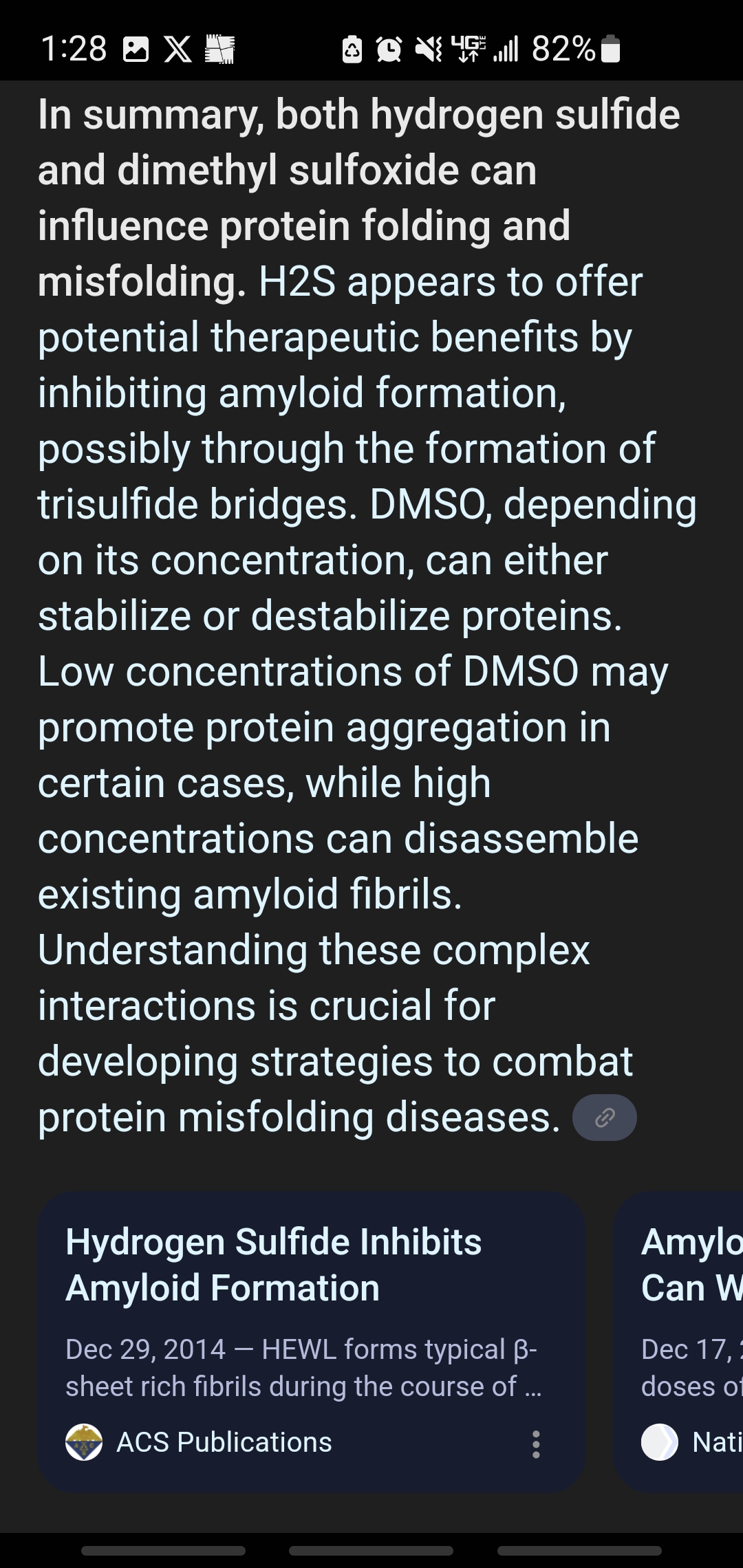 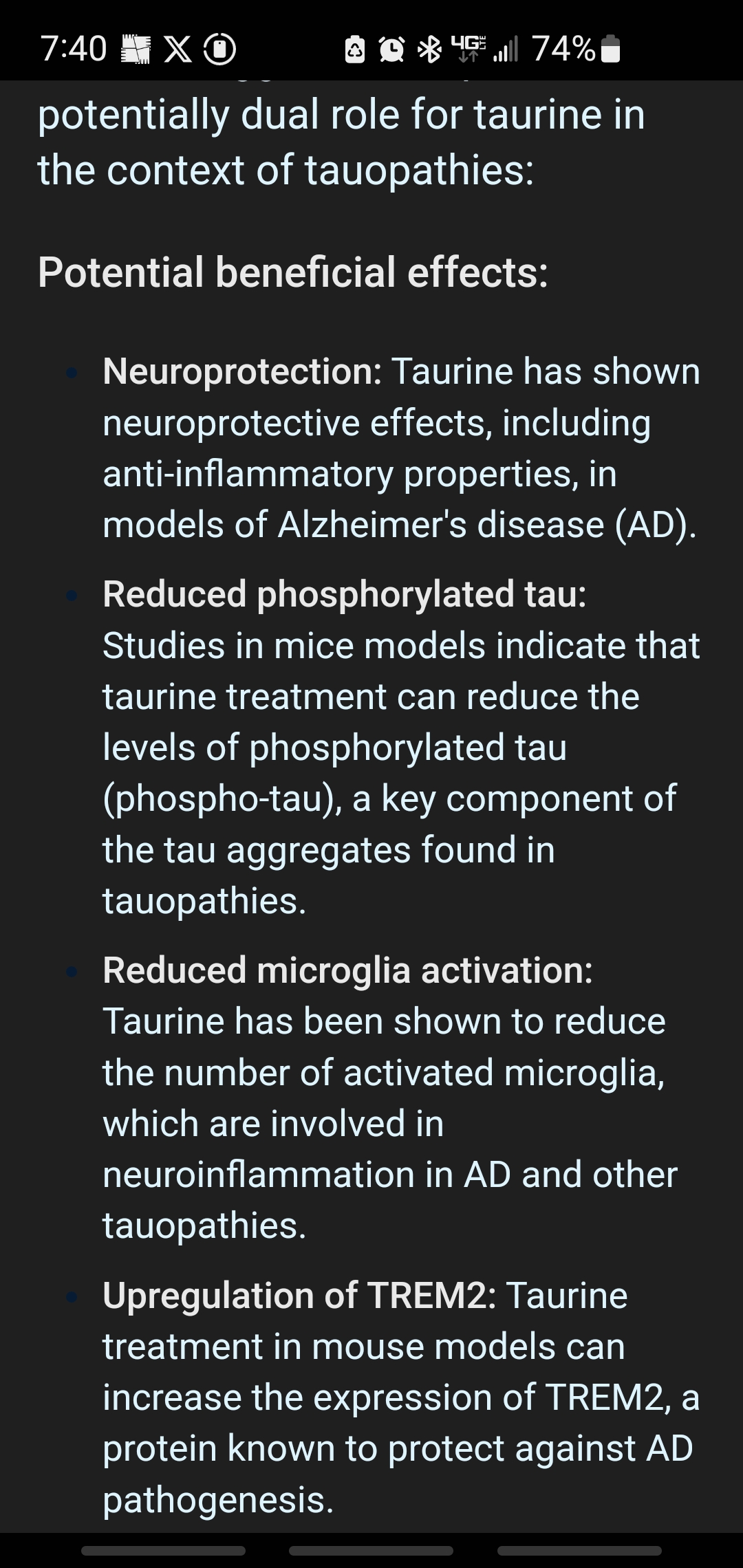  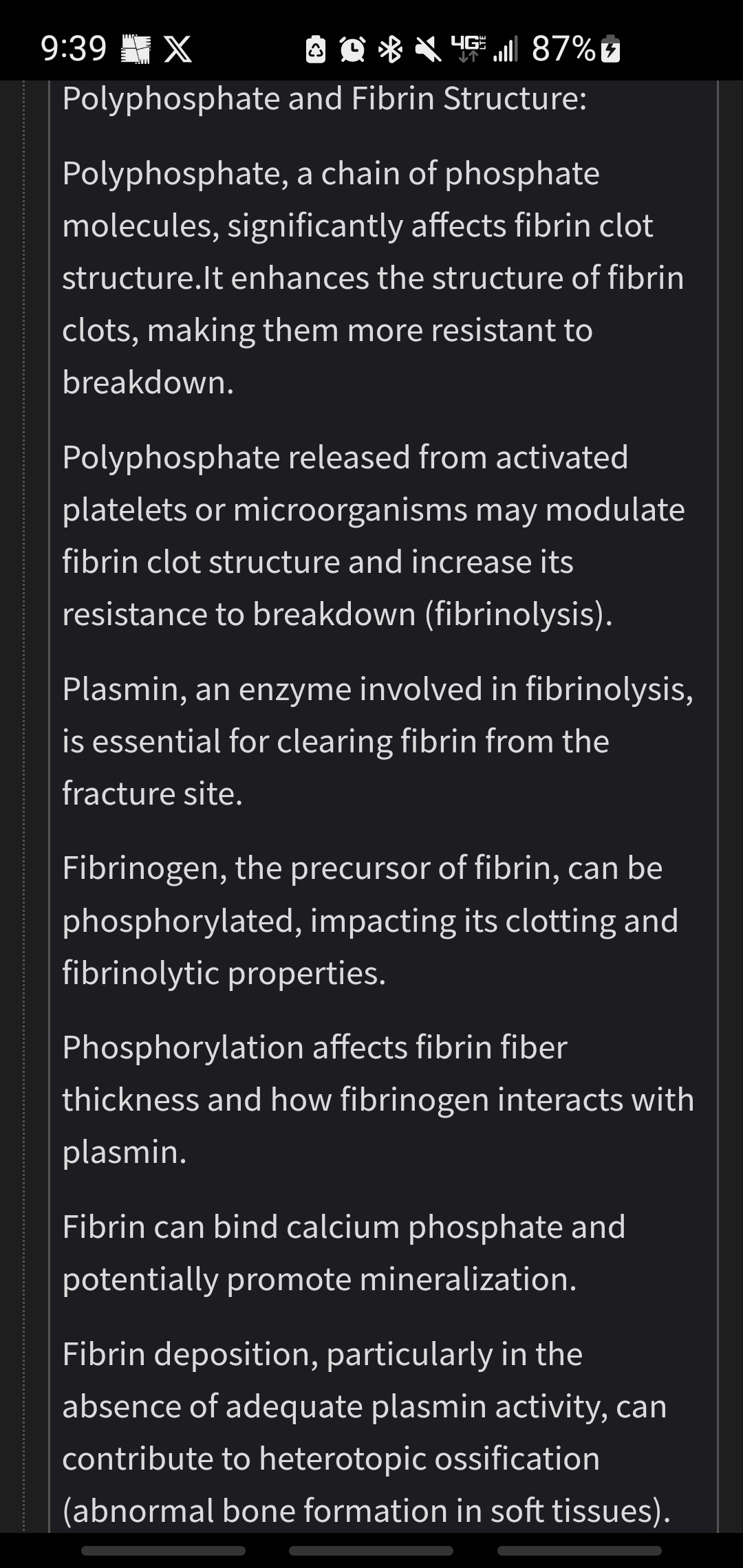 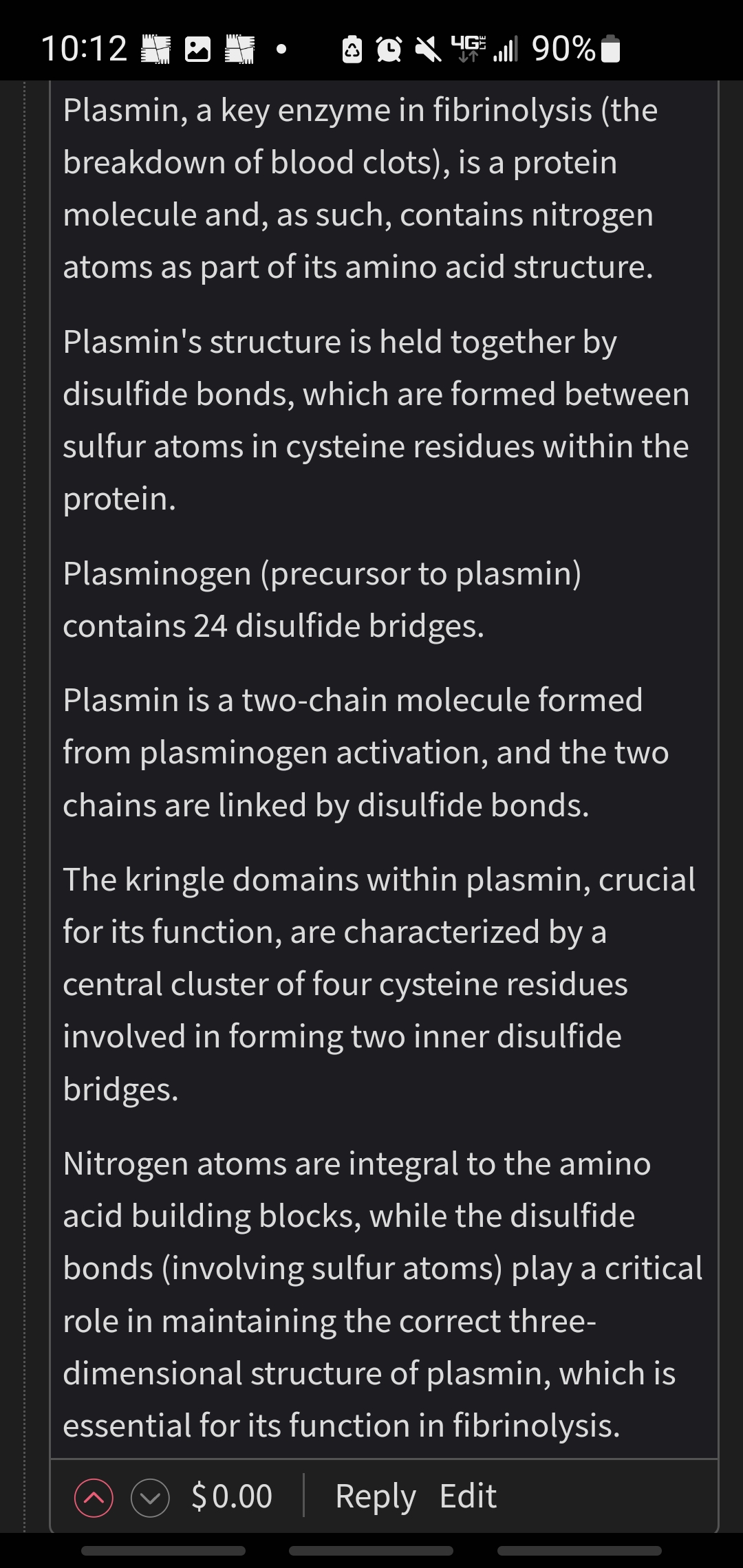
| author | mikewick77 |
|---|---|
| permlink | sxiade |
| category | intercellular |
| json_metadata | {"app":"hiveblog/0.1","image":["https://images.hive.blog/DQmUkMscP4rNxQpGZ2zbh1fJBPW8Utu6NNS5RocaxhfuGgA/Screenshot_20250607-132521_Samsung%20Internet.jpg","https://images.hive.blog/DQmVawBY5HhQ53WTazE5pqsxnoKR3ZCLHcDnrmCt5YFkoMK/Screenshot_20250607-132656_Samsung%20Internet.jpg","https://images.hive.blog/DQmVLx981MM1XNb6ab8cZQ7owLk8RP4gBUDhRLCjFGfuwzr/Screenshot_20250607-132814_Samsung%20Internet.jpg","https://images.hive.blog/DQmNvTBfvqKkvTjAHzYqAqSoihzqpaCmh3VXYL4eApnq1ti/Screenshot_20250607-132851_Samsung%20Internet.jpg","https://images.hive.blog/DQmdds1Knvkin1vTny41YMdMNSqnmimoEhiFAEnN5Y2u6dt/Screenshot_20250609-074100_Samsung%20Internet.jpg","https://images.hive.blog/DQmaVZ5W251x343g8BmGMcTMrHRuy9H3FVQLJqLZkQ65KdV/Screenshot_20250608-112522_Samsung%20Internet%20Beta.jpg","https://images.hive.blog/DQmREYDsT9GKEVPjXd4Gn9QFyFez65uhSPgYZ5dQW8ftkxc/Screenshot_20250618-093924_Samsung%20Internet%20Beta.jpg","https://images.hive.blog/DQmR2adHWzaoJAxKgMQ6v7G7AeGWdHeRe3UhjMg7Gp3wrWt/Screenshot_20250618-101214_Samsung%20Internet%20Beta.jpg"]} |
| created | 2025-06-07 21:58:27 |
| last_update | 2025-06-19 18:37:21 |
| depth | 2 |
| children | 0 |
| last_payout | 2025-06-14 21:58:27 |
| cashout_time | 1969-12-31 23:59:59 |
| total_payout_value | 0.000 HBD |
| curator_payout_value | 0.000 HBD |
| pending_payout_value | 0.000 HBD |
| promoted | 0.000 HBD |
| body_length | 1,446 |
| author_reputation | 545,063,717,246 |
| root_title | "Intercellular Homeostasis" |
| beneficiaries | [] |
| max_accepted_payout | 1,000,000.000 HBD |
| percent_hbd | 10,000 |
| post_id | 143,230,311 |
| net_rshares | 0 |
Bee Venom arachidonic acid Superoxide Dismutase arachidonic acid Superoxide Dismutase Sulphur Melittin: This is the main peptide in bee venom. It's known for causing pain and tissue destruction through its effects on cell membranes, leading to pore formation and the release of inflammatory substances. SOD (Superoxide Dismutase): This is an antioxidant enzyme found in bee venom, among other places. Its role is to help protect cells from damage caused by harmful molecules like superoxide radicals. SOD does this by converting superoxide into hydrogen peroxide. Phospholipase A2 (PLA2): This is an enzyme that hydrolyzes membrane phospholipids, releasing arachidonic acid, a precursor to inflammatory mediators. Melittin is known to stimulate the activity of PLA2, possibly through changes in membrane structure. Melittin is not an enzyme, and SOD (Superoxide Dismutase) melittin doesn't directly hydrolyze arachidonic acid, but it does interact with and enhance the activity of PLA2, which is the enzyme responsible for this hydrolysis. .. How Sulfur Works Against Fleas: Disrupts energy production: Sulfur interferes with the fleas' ability to produce energy when they come into contact with it or ingest it. MSM and Fleas: Potential mechanism: One theory is that increasing sulfur levels in the body by supplementing with MSM may help deter fleas. Sulfur is an essential component for healthy skin and coat, supporting the growth of collagen, which forms a protective layer. This process, in addition to MSM's anti-inflammatory properties, could contribute to a healthier skin environment that is less attractive to fleas. MSM might be effective in treating parasitic infections in animals and humans. MSM and Parasitic Infections: Some research suggests that MSM might be effective in treating parasitic infections in animals and humans. MSM and Flea Control: There is a patent regarding the use of sulfur in homeopathic agents and nutritional supplements for prophylaxis against infestations of ticks and fleas in humans and animals, potentially as an additive in animal food.Some sources suggest that feeding pets a sulfur supplement, like MSM, might help protect them from fleas and ticks. It's believed that fleas and ticks avoid hosts with sufficient sulfur levels in their blood. One product description for a pet supplement specifically mentions using MSM for flea protection.
| author | mikewick77 |
|---|---|
| permlink | sxjcvc |
| category | intercellular |
| json_metadata | {"app":"hiveblog/0.1"} |
| created | 2025-06-08 11:50:00 |
| last_update | 2025-06-08 12:47:27 |
| depth | 2 |
| children | 0 |
| last_payout | 2025-06-15 11:50:00 |
| cashout_time | 1969-12-31 23:59:59 |
| total_payout_value | 0.000 HBD |
| curator_payout_value | 0.000 HBD |
| pending_payout_value | 0.000 HBD |
| promoted | 0.000 HBD |
| body_length | 2,406 |
| author_reputation | 545,063,717,246 |
| root_title | "Intercellular Homeostasis" |
| beneficiaries | [] |
| max_accepted_payout | 1,000,000.000 HBD |
| percent_hbd | 10,000 |
| post_id | 143,238,560 |
| net_rshares | 0 |
Taurine Sulfoxide Sulfonyl Methane Dimethyl Methyl Methylene (Blue) Carotenoid (Red) Methylene Blue Thioninium Thionine Taurine Amine Amino Phenol Thiazine Phenothiazine A triglyceride is formed when three fatty acid molecules are attached to a glycerol molecule. Fatty acids are long hydrocarbon chains with a carboxylic acid group (COOH) at one end and a methyl group (CH3). .. Methylsulfonylmethane: Applications and Safety of a Novel Dietary Supplement https://pmc.ncbi.nlm.nih.gov/articles/PMC5372953/ MSM has long been thought of as a sulfur donor for sulfur containing compounds such as methionine, cysteine, homocysteine, taurine. .. Polyphosphate and Fibrin Structure: Polyphosphate, a chain of phosphate molecules, significantly affects fibrin clot structure.It enhances the structure of fibrin clots, making them more resistant to breakdown. Polyphosphate released from activated platelets or microorganisms may modulate fibrin clot structure and increase its resistance to breakdown (fibrinolysis). Plasmin, an enzyme involved in fibrinolysis, is essential for clearing fibrin from the fracture site. Fibrinogen, the precursor of fibrin, can be phosphorylated, impacting its clotting and fibrinolytic properties. Phosphorylation affects fibrin fiber thickness and how fibrinogen interacts with plasmin. Fibrin can bind calcium phosphate and potentially promote mineralization. Fibrin deposition, particularly in the absence of adequate plasmin activity, can contribute to heterotopic ossification (abnormal bone formation in soft tissues). Plasmin, a key enzyme in fibrinolysis (the breakdown of blood clots), is a protein molecule and, as such, contains nitrogen atoms as part of its amino acid structure. Plasmin's structure is held together by disulfide bonds, which are formed between sulfur atoms in cysteine residues within the protein. Plasminogen (precursor to plasmin) contains 24 disulfide bridges. Plasmin is a two-chain molecule formed from plasminogen activation, and the two chains are linked by disulfide bonds. The kringle domains within plasmin, crucial for its function, are characterized by a central cluster of four cysteine residues involved in forming two inner disulfide bridges. Nitrogen atoms are integral to the amino acid building blocks, while the disulfide bonds (involving sulfur atoms) play a critical role in maintaining the correct three-dimensional structure of plasmin, which is essential for its function in fibrinolysis.
| author | mikewick77 |
|---|---|
| permlink | sxk4o8 |
| category | intercellular |
| json_metadata | {"app":"hiveblog/0.1","links":["https://pmc.ncbi.nlm.nih.gov/articles/PMC5372953/"]} |
| created | 2025-06-08 21:50:30 |
| last_update | 2025-06-18 17:11:48 |
| depth | 2 |
| children | 0 |
| last_payout | 2025-06-15 21:50:30 |
| cashout_time | 1969-12-31 23:59:59 |
| total_payout_value | 0.000 HBD |
| curator_payout_value | 0.000 HBD |
| pending_payout_value | 0.000 HBD |
| promoted | 0.000 HBD |
| body_length | 2,493 |
| author_reputation | 545,063,717,246 |
| root_title | "Intercellular Homeostasis" |
| beneficiaries | [] |
| max_accepted_payout | 1,000,000.000 HBD |
| percent_hbd | 10,000 |
| post_id | 143,247,456 |
| net_rshares | 0 |
Metabolism of Sulfur-Containing Amino Acids: How the Body Copes with Excess Methionine, Cysteine, and Sulfide https://www.sciencedirect.com/science/article/pii/S0022316622024233 .. the DMSO & Castor are doing good things. made it too hot & drank it, so dont ever do that. it good for topical, and only (1) "ONE" drop for drinking, otherwise gunpowder butt. Sulfur needs to have a Nitrogen Donor to keep up with Redox & Metabolism, otherwise becomes imbalanced. too much Sulfur will be an issue, need to equal Nitrogen much more. meaning its not the DMSO that is a cure, but it allows the Oil into good cholesterol, into natrual Steroids. seems to convert excess Nitrogen for fuel, but too much Sulfur can slow down metabolism. more Nitrogen & less Sulfur 3 Nitrogen 1 Sulfur good source of Nitrogen Donor is Glycine Glutamine combined with MSM (Sulfur) Oil (Hydrogen) drinking it is dangerous, it will quickly upset your entire body. the only antidote is Citric & Peroxide. Citric Acid Hydrogen Peroxide Peroxy-Citric Acid Sulfur & Oil make natrual Cholesterol, but too much gums-up mitochondria to slow down. Antioxidant Reducing Agent vs Reductive Stress Antioxidative Stress .. Antioxidizing Agent [Cold Shock Protection] Hydrogen Sulfur Carbon Oxygen Nitrogen [Heat Shock Protection] Oxidizing Agents .. im more convinced, that while the Sulfur is of critical importance for triglyceride & carbohydrate metabolism, it needs a higher raito of Nitrogen to make it work correctly. so by adding a simple Nitrogen Donor amino acid like Glycine should help make the B1 work more efficiently. any Sulfur intake needs 3 times the Nitrogen, thats why people notice B1 helps for a few months thennstips working because the Nitrogen raito is too little. .. Taurine and Glycine: The Benefits of Combining These Two Amino Acids https://www.casi.org/taurine-and-glycine-benefits-combining-amino-acids Taurine and glycine are amino acids with roles in lipid metabolism. Taurine is known for its involvement in bile acid synthesis and its ability to lower plasma and liver triglyceride levels, potentially by influencing lipid absorption and breakdown. Glycine, also an amino acid, has been shown to reduce plasma and liver cholesterol and triglyceride concentrations. .. using a lot of the DMSO & Castor is its very powerful antioxidant & antiparasitic. but if taken too much turns the skin bright red, via Mast Cell Activation, the immune system goes red alert. the only way to reverse this is Citrus or Hydrogen Peroxide to donate an Oxygen molecule & Glycine or Betaine to donate an Nitrogen molecule. then the immune system calms down.
| author | mikewick77 |
|---|---|
| permlink | sxwceu |
| category | intercellular |
| json_metadata | {"app":"hiveblog/0.1","links":["https://www.sciencedirect.com/science/article/pii/S0022316622024233"]} |
| created | 2025-06-15 12:08:54 |
| last_update | 2025-06-27 00:49:45 |
| depth | 2 |
| children | 0 |
| last_payout | 2025-06-22 12:08:54 |
| cashout_time | 1969-12-31 23:59:59 |
| total_payout_value | 0.000 HBD |
| curator_payout_value | 0.000 HBD |
| pending_payout_value | 0.000 HBD |
| promoted | 0.000 HBD |
| body_length | 2,675 |
| author_reputation | 545,063,717,246 |
| root_title | "Intercellular Homeostasis" |
| beneficiaries | [] |
| max_accepted_payout | 1,000,000.000 HBD |
| percent_hbd | 10,000 |
| post_id | 143,368,724 |
| net_rshares | 0 |
Antioxidant Reducing Agents Reductive Stress Oxidizing Oxidative Stress Oxidizing Agents Reductive stress and oxidative stress are both forms of redox imbalance, but they represent opposite ends of the spectrum. Oxidative stress occurs when there is an excess of reactive oxygen species (ROS) and other oxidants, while reductive stress involves an excess of reducing agents like glutathione and NADPH. Both conditions can disrupt cellular function and contribute to various diseases. Thiol Antioxidants: Thiol antioxidants, like dithiothreitol (DTT), can modulate the methionine-homocysteine cycle and influence the hypoxia response pathway in the context of thiol stress. Interplay: Compensatory Mechanisms: Under oxidative stress, the body may attempt to counteract the damage by activating antioxidant pathways, such as the transsulfuration pathway, which consumes homocysteine to produce glutathione. Folate Deficiency: Folate deficiency can lead to elevated homocysteine levels and increased oxidative stress, highlighting the importance of adequate folate intake. Clinical Significance: Cardiovascular Disease: Elevated homocysteine levels (hyperhomocysteinemia) are an independent risk factor for cardiovascular disease, including stroke and myocardial infarction. Neurodegenerative Diseases: Hyperhomocysteinemia has been associated with an increased risk of neurodegenerative diseases like Alzheimer's and vascular dementia. Psychiatric Disorders: High homocysteine levels may also be linked to psychiatric disorders such as depression and schizophrenia. .. Dimethyl sulfoxide (DMSO), though commonly used as a solvent and cryoprotectant, can also influence oxidative and reductive stress. Low concentrations of DMSO can act as an antioxidant, reducing oxidative stress by scavenging reactive oxygen species (ROS).Higher concentrations of DMSO can induce oxidative stress, increasing ROS production and potentially leading to cellular damage. A dose-dependent effect of dimethyl sulfoxide on lipid content, cell viability and oxidative stress in 3T3-L1 adipocytes https://pmc.ncbi.nlm.nih.gov/articles/PMC6197677/
| author | mikewick77 |
|---|---|
| permlink | syhf2y |
| category | intercellular |
| json_metadata | {"app":"hiveblog/0.1","links":["https://pmc.ncbi.nlm.nih.gov/articles/PMC6197677/"]} |
| created | 2025-06-26 21:16:09 |
| last_update | 2025-06-27 16:11:09 |
| depth | 2 |
| children | 0 |
| last_payout | 2025-07-03 21:16:09 |
| cashout_time | 1969-12-31 23:59:59 |
| total_payout_value | 0.000 HBD |
| curator_payout_value | 0.000 HBD |
| pending_payout_value | 0.000 HBD |
| promoted | 0.000 HBD |
| body_length | 2,153 |
| author_reputation | 545,063,717,246 |
| root_title | "Intercellular Homeostasis" |
| beneficiaries | [] |
| max_accepted_payout | 1,000,000.000 HBD |
| percent_hbd | 10,000 |
| post_id | 143,592,900 |
| net_rshares | 0 |
Magnesium MG2+ NMDA GABA MAO-A Pathways Receptors Dopamine Tryptophan Hydroxylase Serotonin Melatonin Methyl Aspartate Glutamate Theanine CREB (cAMP response element-binding protein) Lipid Lipidprotein Hydrogen Ion https://en.m.wikipedia.org/wiki/Amyloid-beta_precursor_protein https://en.m.wikipedia.org/wiki/Somatic_recombination .. https://en.m.wikipedia.org/wiki/Chloride_shift https://en.m.wikipedia.org/wiki/Carbonic_anhydrase_4 .. Taurine from tumour niche drives glycolysis to promote leukaemogenesis https://www.nature.com/articles/s41586-025-09018-7 Magnesium Ion: A New Switch in Tumor Treatment https://pmc.ncbi.nlm.nih.gov/articles/PMC11351748/ Myth or Reality—Transdermal Magnesium? https://pmc.ncbi.nlm.nih.gov/articles/PMC5579607/ Candida And Magnesium Deficiency https://www.thecandidadiet.com/candida-magnesium-deficiency/ Magnesium ions and dementia https://www.sciencedirect.com/science/article/pii/S2324242624000019 The role of N-Methyl-D-Aspartate (NMDA) receptor-mediated neurotransmission in the pathophysiology and therapeutics of psychiatric syndromes https://www.sciencedirect.com/science/article/pii/S0924977X97000503 Magnesium enhances the chondrogenic differentiation of mesenchymal stem cells by inhibiting activated macrophage-induced inflammation https://pmc.ncbi.nlm.nih.gov/articles/PMC5821731/
| author | mikewick77 |
|---|---|
| permlink | syjaa2 |
| category | intercellular |
| json_metadata | {"app":"hiveblog/0.1","links":["https://en.m.wikipedia.org/wiki/Amyloid-beta_precursor_protein"]} |
| created | 2025-06-27 21:27:36 |
| last_update | 2025-07-22 05:02:45 |
| depth | 1 |
| children | 8 |
| last_payout | 2025-07-04 21:27:36 |
| cashout_time | 1969-12-31 23:59:59 |
| total_payout_value | 0.000 HBD |
| curator_payout_value | 0.000 HBD |
| pending_payout_value | 0.000 HBD |
| promoted | 0.000 HBD |
| body_length | 1,355 |
| author_reputation | 545,063,717,246 |
| root_title | "Intercellular Homeostasis" |
| beneficiaries | [] |
| max_accepted_payout | 1,000,000.000 HBD |
| percent_hbd | 10,000 |
| post_id | 143,613,704 |
| net_rshares | 0 |
Ropeworm Newly Discovered Rope Worm Infections: First Case Report in Gulf Cooperation Council Countries https://www.scirp.org/journal/paperinformation?paperid=113886 is this new uncategorized worm actually spike protein amyloidosis effecting gut microbe microbiome, makeing rope like blood clots?
| author | mikewick77 |
|---|---|
| permlink | sylt05 |
| category | intercellular |
| json_metadata | {"links":["https://www.scirp.org/journal/paperinformation?paperid=113886"],"app":"hiveblog/0.1"} |
| created | 2025-06-29 06:07:15 |
| last_update | 2025-06-29 06:07:15 |
| depth | 2 |
| children | 0 |
| last_payout | 2025-07-06 06:07:15 |
| cashout_time | 1969-12-31 23:59:59 |
| total_payout_value | 0.000 HBD |
| curator_payout_value | 0.000 HBD |
| pending_payout_value | 0.000 HBD |
| promoted | 0.000 HBD |
| body_length | 299 |
| author_reputation | 545,063,717,246 |
| root_title | "Intercellular Homeostasis" |
| beneficiaries | [] |
| max_accepted_payout | 1,000,000.000 HBD |
| percent_hbd | 10,000 |
| post_id | 143,636,569 |
| net_rshares | 0 |
taurine glycine gaba serotonin glutamate Maternal taurine as a modulator of Cl– homeostasis as well as of glycine/GABAA receptors for neocortical development https://pmc.ncbi.nlm.nih.gov/articles/PMC10435090/
| author | mikewick77 |
|---|---|
| permlink | syo7q7 |
| category | intercellular |
| json_metadata | {"links":["https://pmc.ncbi.nlm.nih.gov/articles/PMC10435090/"],"app":"hiveblog/0.1"} |
| created | 2025-06-30 13:20:30 |
| last_update | 2025-06-30 13:20:30 |
| depth | 2 |
| children | 0 |
| last_payout | 2025-07-07 13:20:30 |
| cashout_time | 1969-12-31 23:59:59 |
| total_payout_value | 0.000 HBD |
| curator_payout_value | 0.000 HBD |
| pending_payout_value | 0.000 HBD |
| promoted | 0.000 HBD |
| body_length | 210 |
| author_reputation | 545,063,717,246 |
| root_title | "Intercellular Homeostasis" |
| beneficiaries | [] |
| max_accepted_payout | 1,000,000.000 HBD |
| percent_hbd | 10,000 |
| post_id | 143,666,460 |
| net_rshares | 0 |
https://youtu.be/2NLfaGfaBII?feature=shared https://youtu.be/ohihlsM7iyA?feature=shared Alanine Glycine Glutamine Glutamate Excitotoxicity NMDA Overactivation BMAA B-Methylamino-L-Alanine Diaminobutyric Acid (DAB) Sulfate-Reducing Bacteria (SRB) Methyl Group (CH3) Methylation Oxidation Cyanobacteria Microalgae Plant Root Symbiont GABA DHEA Pregnenolone Butyrate Butter .. The Truth About Magnesium Glycinate and Breakouts https://sanahaus.co/blogs/sage/magnesium-glycinate-and-breakouts?srsltid=AfmBOoqGUw37LX-yNYnXbi5lkos0BhEabXELEMZaoaM5y5idOIxhIRJv https://en.m.wikipedia.org/wiki/Excitotoxicity https://en.m.wikipedia.org/wiki/NMDA_receptor_antagonist https://www.mdpi.com/2073-4409/9/3/698 .. Butyrate oxidation is the process where butyrate, a short-chain fatty acid, is metabolized by cells. .. Microbial BMAA and the Pathway for Parkinson’s Disease Neurodegeneration https://pmc.ncbi.nlm.nih.gov/articles/PMC7019015/ Non-Proteinogenic Amino Acid β-N-Methylamino-L-Alanine (BMAA): Bioactivity and Ecological Significance https://pmc.ncbi.nlm.nih.gov/articles/PMC9414260/ Oxidation of cyanobacterial neurotoxin beta-N-methylamino-L-alanine (BMAA) with chlorine, permanganate, ozone, hydrogen peroxide and hydroxyl radical https://www.sciencedirect.com/science/article/abs/pii/S0043135418304342 .. While BMAA itself is not a prion, it has been proposed that chronic exposure to BMAA might contribute to neurodegeneration by promoting protein misfolding and aggregation, a process resembling the prion-like mechanism observed in certain neurodegenerative diseases. BMAA can be degraded through various oxidation methods, but the effectiveness can be influenced by factors like pH .. Cyanobacteria Microalgae Plant Root Symbiont it was first discovered in Guam, from algae root symbiont that infects the berries? is this the origin Prion discoved New Guinea? match up the symptoms of BMAA with Long Covid, Malaria & HIV? because if they put this microalgae in a mycoplasma &/or gut bacteria as a symbiont, it would behave exactly like what we are seeing.
| author | mikewick77 |
|---|---|
| permlink | syqp72 |
| category | intercellular |
| json_metadata | {"app":"hiveblog/0.1","image":["https://img.youtube.com/vi/2NLfaGfaBII/0.jpg","https://img.youtube.com/vi/ohihlsM7iyA/0.jpg"],"links":["https://youtu.be/2NLfaGfaBII?feature=shared"]} |
| created | 2025-07-01 21:33:03 |
| last_update | 2025-07-04 21:54:54 |
| depth | 2 |
| children | 0 |
| last_payout | 2025-07-08 21:33:03 |
| cashout_time | 1969-12-31 23:59:59 |
| total_payout_value | 0.000 HBD |
| curator_payout_value | 0.000 HBD |
| pending_payout_value | 0.000 HBD |
| promoted | 0.000 HBD |
| body_length | 2,096 |
| author_reputation | 545,063,717,246 |
| root_title | "Intercellular Homeostasis" |
| beneficiaries | [] |
| max_accepted_payout | 1,000,000.000 HBD |
| percent_hbd | 10,000 |
| post_id | 143,700,383 |
| net_rshares | 0 |
Amino Sulfate Ammonium Sulfate Ammonium Lauryl Sulfate (ALS) Ammonium Sulfate Precipitation: Surfactant Protein Purification Stabilizes Protein Structure https://en.m.wikipedia.org/wiki/Chondroitin_sulfate Taurine Protein Precipitation Using Ammonium Sulfate https://pmc.ncbi.nlm.nih.gov/articles/PMC4817497/ Proteins are usually stored in ammonium sulfate because it inhibits bacterial growth. With the addition of ammonium sulfate, proteins unfolded by denaturants can be pushed into their native conformations. This can be seen with the folding of recombinant proteins. https://en.m.wikipedia.org/wiki/Ammonium_sulfate_precipitation .. Taurine, a nutrient found in the body, plays a significant role in lipid metabolism. It helps regulate blood lipid levels, potentially by affecting the synthesis and breakdown of fats and cholesterol. It can affect the expression and activity of key enzymes involved in both the synthesis and breakdown of these substances. Taurine can promote the formation of bile acids, which are important for fat digestion and absorption. Dietary taurine supplementation has been shown to reduce cholesterol and visceral fat. The molecular targets of taurine confer anti-hyperlipidemic effects https://www.sciencedirect.com/science/article/abs/pii/S0024320521005658
| author | mikewick77 |
|---|---|
| permlink | syzzhp |
| category | intercellular |
| json_metadata | {"app":"hiveblog/0.1","links":["https://en.m.wikipedia.org/wiki/Chondroitin_sulfate"]} |
| created | 2025-07-06 21:53:48 |
| last_update | 2025-07-08 13:34:48 |
| depth | 2 |
| children | 0 |
| last_payout | 2025-07-13 21:53:48 |
| cashout_time | 1969-12-31 23:59:59 |
| total_payout_value | 0.000 HBD |
| curator_payout_value | 0.000 HBD |
| pending_payout_value | 0.000 HBD |
| promoted | 0.000 HBD |
| body_length | 1,313 |
| author_reputation | 545,063,717,246 |
| root_title | "Intercellular Homeostasis" |
| beneficiaries | [] |
| max_accepted_payout | 1,000,000.000 HBD |
| percent_hbd | 10,000 |
| post_id | 143,803,387 |
| net_rshares | 0 |
Colestipol Hydrochloride Bile Acid Sequestrants Betaine / Thiamine HCL Hydrochloric Acid Cholic Acid Chenodeoxycholic Acid Copper Peptide (GHK-Cu) Methylene Blue Carbonic Acid Carbonic Anhydrase Chloride Hypochlorhydria Achlorhydria if your stomach acids are not strong enough causes many complex problems. GOOD Bile Taurine Butyrate Hydrochloride Stomach Acid BAD NMDA Overactivation BMAA B-Methylamino-L-Alanine Diaminobutyric Acid (DAB) .. Hydrochloric Acid (HCl) Produced by the stomach lining. Creates an acidic environment (low pH) in the stomach. Activates pepsin, an enzyme that breaks down proteins. Kills bacteria and pathogens that enter the body with food. Bile Produced by the liver and stored in the gallbladder. An alkaline fluid containing bile acids (also called bile salts), bilirubin, cholesterol, and other substances. Neutralizes acidic chyme from the stomach when released into the small intestine. Emulsifies fats, breaking them into smaller droplets to increase the surface area for lipase enzymes to act on them, facilitating digestion. Aids in the absorption of fat-soluble vitamins (A, D, E, K). Helps eliminate waste products from the body, including bilirubin. Has bactericidal activity against microorganisms. Hydrochloric acid (HCl) in the stomach is produced using chloride ions, which the body gets from dietary sources like table salt (sodium chloride). When ingested, sodium chloride dissociates into sodium and chloride ions. The stomach lining cells then use these ions to produce HCl. Chloride is an essential electrolyte, and it's a key component of hydrochloric acid (HCl) in the stomach. Table salt (sodium chloride) is a primary source of chloride for the body. When we consume salt, it breaks down into sodium and chloride ions. Stomach Acid Production: The parietal cells in the stomach lining use these chloride ions to produce HCl. These cells pump hydrogen ions (from carbonic acid) into the stomach, and chloride ions follow, creating HCl. Functions of HCl: Hydrochloric acid in the stomach is vital for protein digestion and helps protect the body against ingested pathogens. .. Hydrogen ions are formed from the dissociation of carbonic acid. Water is a very minor source of hydrogen ions in comparison to carbonic acid. Carbonic acid is formed from carbon dioxide and water by carbonic anhydrase. The bicarbonate ion (HCO3−) is exchanged for a chloride ion (Cl−) on the basal side of the cell and the bicarbonate diffuses into the venous blood, leading to an alkaline tide phenomenon. Potassium (K+) and chloride (Cl−) ions diffuse into the canaliculi. Hydrogen ions are pumped out of the cell into the canaliculi in exchange for potassium ions, via the H+/K+ ATPase. These receptors are increased in number on luminal side by fusion of tubulovesicles during activation of parietal cells and removed during deactivation. This receptor maintains a million fold difference in proton concentration. ATP is provided by the numerous mitochondria. .. Hydrogen Bonding in Peptide Structure: Intramolecular Hydrogen Bonds: Hydrogen bonds within a peptide chain (between the carbonyl oxygen of one amino acid and the amide hydrogen of another) are critical for defining the secondary structures of peptides. Hydrogen bonds contribute significantly to the overall stability of the peptide and its ability to fold into specific shapes. Peptides can use hydrogen bonds to bind to other molecules, including proteins, nucleic acids, and metal ions, affecting their biological activity. Peptides and hyaluronic acid are combined in skincare products to deliver both immediate and long-term hydration and skin-firming benefits.
| author | mikewick77 |
|---|---|
| permlink | sz61pp |
| category | intercellular |
| json_metadata | {"app":"hiveblog/0.1"} |
| created | 2025-07-10 04:27:24 |
| last_update | 2025-07-11 01:10:00 |
| depth | 2 |
| children | 0 |
| last_payout | 2025-07-17 04:27:24 |
| cashout_time | 1969-12-31 23:59:59 |
| total_payout_value | 0.000 HBD |
| curator_payout_value | 0.000 HBD |
| pending_payout_value | 0.000 HBD |
| promoted | 0.000 HBD |
| body_length | 3,724 |
| author_reputation | 545,063,717,246 |
| root_title | "Intercellular Homeostasis" |
| beneficiaries | [] |
| max_accepted_payout | 1,000,000.000 HBD |
| percent_hbd | 10,000 |
| post_id | 143,920,328 |
| net_rshares | 0 |
Prion-"like" BMAA ALS-PDC Microalgae Cyanobacteria Plant Root Symbiont Cycad Seeds Island of Guam Flying Foxes BMAA, microalgae, and plant root symbiosis BMAA can be produced by both free-living cyanobacteria and those living in symbiosis with plants.Some plant species, like cycads, form symbiotic relationships with cyanobacteria, specifically in their roots, which can produce BMAA.This symbiotic relationship allows for nitrogen fixation by the cyanobacteria, providing a benefit to the plant.However, the BMAA produced by these symbiotic cyanobacteria can be transferred to the plant and accumulate in its tissues, including the seeds.Research has shown that consuming these plant parts (e.g., cycad seeds) can lead to human exposure to BMAA.The presence of BMAA in the environment and its potential biomagnification through food webs is a growing concern for human health, particularly in relation to neurodegenerative diseases. Studies on the island of Guam linked the high incidence of the neurological disorder ALS-PDC to the consumption of cycad seeds and flying foxes, which consumed the seeds. BMAA was found in the cycad roots (produced by symbiotic cyanobacteria) and in the brains of ALS-PDC patients. Further research indicates that BMAA can also be produced by free-living cyanobacteria in aquatic environments and can be transferred through aquatic food webs.
| author | mikewick77 |
|---|---|
| permlink | sz98ue |
| category | intercellular |
| json_metadata | {"app":"hiveblog/0.1"} |
| created | 2025-07-11 21:54:15 |
| last_update | 2025-07-11 21:59:54 |
| depth | 2 |
| children | 0 |
| last_payout | 2025-07-18 21:54:15 |
| cashout_time | 1969-12-31 23:59:59 |
| total_payout_value | 0.000 HBD |
| curator_payout_value | 0.000 HBD |
| pending_payout_value | 0.000 HBD |
| promoted | 0.000 HBD |
| body_length | 1,383 |
| author_reputation | 545,063,717,246 |
| root_title | "Intercellular Homeostasis" |
| beneficiaries | [] |
| max_accepted_payout | 1,000,000.000 HBD |
| percent_hbd | 10,000 |
| post_id | 143,982,439 |
| net_rshares | 0 |
Synthesizing hydrochloric acid: Direct synthesis (industrial and laboratory) Chlorine and Hydrogen Combination:Chlorine gas (Cl2) and hydrogen gas (H2) are reacted in a controlled exothermic reaction, often referred to as an "HCl oven" or "HCl burner," to produce hydrogen chloride gas (HCl (g)).This resulting hydrogen chloride gas is then absorbed in deionized water, yielding high-purity hydrochloric acid, suitable for use in industries like food manufacturing.This reaction can be triggered by blue light.The primary raw materials are chlorine gas (from brine electrolysis) and hydrogen gas (from sources like steam reforming of natural gas or water electrolysis). Salt and sulfuric acid process (historical and laboratory) Heating Sodium Chloride with Sulfuric Acid: In this method, common salt (sodium chloride, NaCl) is heated with sulfuric acid (H2SO4) at elevated temperatures to produce hydrogen chloride gas. This method focuses on recovering hydrochloric acid from spent pickling liquor (used in steel cleaning). Hargreaves Process: This process involves heating a mixture of salt, sulfur dioxide, oxygen, and water at elevated temperatures (430-540°C). .. hydrogen ions in alcohol metabolism acetaldehyde detoxification electrolyzed hydrogen water Hydrogen atoms play a crucial role in alcohol metabolism. Alcohol dehydrogenase (ADH) enzymes in the liver convert alcohol to acetaldehyde by removing hydrogen atoms, which are then transferred to the coenzyme nicotinamide adenine dinucleotide (NAD+), forming NADH. The acetaldehyde is further metabolized to acetate by aldehyde dehydrogenase (ALDH) by also removing hydrogen atoms and transferring them to NAD+, producing more NADH. .. Hydrogen water tablets Molecular hydrogen (H2) 80 mg of Magnesium 8 PPM (parts per million) Molecular Hydrogen (H2) Malic, Tartaric, Adipic acid Hydrogen tablets, when dropped into water, dissolve and generate molecular hydrogen (H₂), which infuses the water with H₂ gas. This process involves a chemical reaction, often using magnesium as a base, which reacts with water to produce hydrogen gas and magnesium hydroxide. Hydrogen Generating Tablets: These tablets contain minerals that, when added to water, create a chemical reaction that releases H2 gas, infusing the water with hydrogen. Hydrogen generating tablets, often referred to as molecular hydrogen tablets, are a form of supplement designed to produce molecular hydrogen gas when dissolved in water. These tablets typically contain elemental magnesium which reacts with water to release hydrogen gas. The resulting hydrogen-rich water is then consumed to potentially reap the benefits associated with molecular hydrogen. Elemental Magnesium: This is the core ingredient responsible for the chemical reaction that generates molecular hydrogen.Malic Acid, Tartaric Acid, and Adipic Acid: These natural acids, found in various fruits and vegetables, facilitate the breakdown of magnesium and activate hydrogen production. Core ingredients Magnesium: This is often the primary ingredient in hydrogen water tablets. When magnesium reacts with water, it releases molecular hydrogen (H2) and forms magnesium hydroxide.Acids: Acids like malic, tartaric, and adipic acid are commonly included in the tablets. These organic acids contribute to:Accelerating the reaction: They help lower the pH of the water, which speeds up the dissolution of the tablet and the release of hydrogen gas.Enhancing absorption: Some formulations suggest these acids may improve the bioavailability of hydrogen at the cellular level. Process Dissolution and Reaction: When you drop a hydrogen tablet into a glass of water (ideally at room temperature), the acids and magnesium react to generate hydrogen gas.Hydrogen Infusion: The hydrogen gas produced then dissolves into the water, creating hydrogen-rich water. .. looking at the importance of stomach acids, and how they decrease with age, causing malnutrition issues. Betaine HCL (Hydrochloride) and looking at bringing Molecular Hydrogen (H2) levels up for overall health benefits, its Magnesium tablets with fruit acids mixed in water. H2 Molecular Hydrogen Tablets 80 mg of Magnesium 8 PPM (parts per million) Molecular Hydrogen (H2) Malic, Tartaric, Adipic acid. Magnesium makes Hydrogen from acid & water. suspect just taking Betaine HCL & Magnesium supplement with a big cup of water would manufacture the Molecular Hydrogen H2. .. Molecular hydrogen: a preventive and therapeutic medical gas for various diseases https://pmc.ncbi.nlm.nih.gov/articles/PMC5731988/ https://en.m.wikipedia.org/wiki/Magnesium_hydride https://en.m.wikipedia.org/wiki/Magnesium_monohydride .. Magnesium & Aether, something was pushing me to look in that direction. over the years i have been fiddling around with Magnesium, kind of looking for something significant. taking Magnesium supliments is ok dosnt seem to do anything. found the connection today, its difficult to explain, but apparently Magnesium & Water with an acidic environment, is the mineral that releases Molecular Hydrogen (H2) into Biological activity. Magnesium is the key to Hydrogen, and Hydrogen is the smallest molecule, otherwise known as a Proton. NAD+ATP meaning anti-ageing. .. index of hydrogen deficiency (IHD) saturation unsaturation index of hydrogen deficiency (IHD) https://www.masterorganicchemistry.com/2016/08/26/degrees-of-unsaturation-index-of-hydrogen-deficiency/
| author | mikewick77 |
|---|---|
| permlink | szabk1 |
| category | intercellular |
| json_metadata | {"app":"hiveblog/0.1","links":["https://pmc.ncbi.nlm.nih.gov/articles/PMC5731988/"]} |
| created | 2025-07-12 11:50:24 |
| last_update | 2025-07-14 04:47:33 |
| depth | 2 |
| children | 0 |
| last_payout | 2025-07-19 11:50:24 |
| cashout_time | 1969-12-31 23:59:59 |
| total_payout_value | 0.000 HBD |
| curator_payout_value | 0.000 HBD |
| pending_payout_value | 0.000 HBD |
| promoted | 0.000 HBD |
| body_length | 5,479 |
| author_reputation | 545,063,717,246 |
| root_title | "Intercellular Homeostasis" |
| beneficiaries | [] |
| max_accepted_payout | 1,000,000.000 HBD |
| percent_hbd | 10,000 |
| post_id | 143,996,491 |
| net_rshares | 0 |
The role of hydrogen bonds and magnesium in protein structure The three-dimensional structure of proteins, essential for their biological function, is stabilized by various interactions, including hydrogen bonds and the coordination of magnesium ions. Secondary Structure: In alpha-helices and beta-sheets, hydrogen bonds form between the backbone carbonyl oxygen and amide hydrogen atoms. These regularly arranged hydrogen bonds create the stable folding patterns observed in secondary structures. Tertiary and Quaternary Structure: In the overall three-dimensional shape of a single polypeptide chain (tertiary structure) and protein complexes formed by multiple chains (quaternary structure), hydrogen bonds also contribute to stability by forming between the side chains of amino acids and within the polypeptide backbone. Magnesium in protein structure Magnesium ions (Mg²), abundant in cells, are crucial for stabilizing protein structure and function, particularly in proteins that interact with nucleic acids. Role in Protein Structure and Function: Mg² ions play a role in maintaining the three-dimensional conformation of DNA and RNA and influence their interaction with proteins. They bind to various protein classes, including DNA/RNA polymerases, reverse transcriptases, and telomerases, regulating crucial cellular processes. Magnesium Binding Sites: Protein-binding sites for Mg² often involve multiple acidic residues and can be classified based on ligand arrangement, binding coordination, metal-binding specificity, and ligand types (like cofactors such as ATP). Examples include conserved motifs with multiple acidic residues, EF-hand binding motifs, and discontinuous binding sites formed by sequentially distant residues. Effect on Protein Folding: Mg² is essential for all RNA folding processes and energetic states, forming a rigid, octahedral structure with oxygen atoms that incorporate phosphate groups. Mg² binding reduces electrostatic repulsion between the negatively charged RNA backbone and facilitates folding into complex tertiary structures, Mg² binding can induce the folding transition of RNA, favoring the folded state. .. The Significance of Hydrogen Bonds In DNA: Hydrogen bonds are the fundamental forces that hold the two strands of the DNA double helix together, forming complementary base pairs (adenine with thymine, and guanine with cytosine). In Protein-DNA Interactions: Protein-DNA recognition relies heavily on specific hydrogen bonds formed between amino acid side chains and the edges of DNA bases within the major and minor grooves. This interplay allows proteins to recognize and bind to specific DNA sequences, regulating vital processes like gene expression and DNA repair. Magnesium's Role In DNA: Magnesium ions (Mg²) are essential for stabilizing the DNA double helix. They achieve this primarily by neutralizing the negative charges of the phosphate groups in the DNA backbone, thereby reducing electrostatic repulsion between the strands and promoting their stability. This shielding effect allows the hydrogen bonds between the base pairs to hold the DNA strands together more effectively. With Proteins: Mg² ions act as cofactors for a vast array of enzymes, especially kinases which are involved in phosphorylation processes such as glycolysis, cell signaling, and cell cycle regulation. They often participate in enzyme catalysis by correctly orienting a water molecule for the reaction or by establishing precise geometry between the enzyme and its substrate. Magnesium ions also form stable complexes with phosphate-containing molecules, notably ATP, which must be bound to Mg² to be biologically active. .. two positive hydrogen ions become hydrogen atoms: the reaction between magnesium (Mg) and water (H₂O) is: Mg + 2H₂O → Mg(OH)₂ + H₂. In this reaction, magnesium (a solid metal) reacts with water to produce magnesium hydroxide (also a solid) and hydrogen gas. The positive hydrogen ions (H⁺) from water are reduced to neutral hydrogen atoms, which then combine to form hydrogen molecules (H₂). In the reaction between magnesium ( Mg ) and water ( H2O ), magnesium displaces hydrogen from water, leading to the formation of magnesium hydroxide ( Mg(OH)2 ) and hydrogen gas ( H2 ). .. F0 F1 ATP Synthase F0F1 ATP synthase, found in cellular membranes, is a rotary molecular motor that plays a critical role in cellular energy production by synthesizing adenosine triphosphate (ATP). The F0F1 ATP synthase, found in cellular membranes, is a rotary molecular motor that plays a critical role in cellular energy production by synthesizing adenosine triphosphate (ATP) from adenosine diphosphate (ADP) and inorganic phosphate (Pi). This process is driven by the electrochemical potential difference across the membrane, primarily powered by a proton (H+) gradient (or in some species, a sodium (Na+) gradient) called the proton-motive force (PMF). Magnesium ions: Mg2+ ions play a critical role in ATP synthesis by facilitating the formation of the transition state during the reaction where ATP is synthesized from ADP and Pi. Magnesium also plays a role in buffering the proton concentration in the mitochondrial intermembrane space (IMS), potentially influencing the PMF available for ATP synthesis.
| author | mikewick77 |
|---|---|
| permlink | szejbj |
| category | intercellular |
| json_metadata | {"app":"hiveblog/0.1"} |
| created | 2025-07-14 18:28:30 |
| last_update | 2025-07-15 23:49:18 |
| depth | 2 |
| children | 0 |
| last_payout | 2025-07-21 18:28:30 |
| cashout_time | 1969-12-31 23:59:59 |
| total_payout_value | 0.000 HBD |
| curator_payout_value | 0.000 HBD |
| pending_payout_value | 0.000 HBD |
| promoted | 0.000 HBD |
| body_length | 5,307 |
| author_reputation | 545,063,717,246 |
| root_title | "Intercellular Homeostasis" |
| beneficiaries | [] |
| max_accepted_payout | 1,000,000.000 HBD |
| percent_hbd | 10,000 |
| post_id | 144,060,961 |
| net_rshares | 0 |
 Magnesium Taurinate 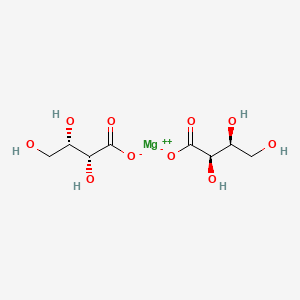 Magnesium Threonate  Magnesium Glycinate Taurinate Threonate https://pubchem.ncbi.nlm.nih.gov/compound/Magnesium-taurinate
| author | mikewick77 |
|---|---|
| permlink | szprrh |
| category | intercellular |
| json_metadata | {"app":"hiveblog/0.1","image":["https://images.hive.blog/DQmYRt8J45K1G9bD6NfHhfeiSdyeyGmaLrUmbktmk8HUJu2/imgsrv-52.png","https://images.hive.blog/DQmXfss2x8UgHhfppaD8YjfEa7LLR5YBvJyYiRVBmRiRXc8/imgsrv-53.png","https://images.hive.blog/DQmPU7xE1VEcmPyS3HhW9L95yN3BR3H4zwYUPPwVNjQUUzq/imgsrv-54.png"],"links":["https://pubchem.ncbi.nlm.nih.gov/compound/Magnesium-taurinate"]} |
| created | 2025-07-20 20:04:27 |
| last_update | 2025-07-21 00:22:33 |
| depth | 1 |
| children | 9 |
| last_payout | 2025-07-27 20:04:27 |
| cashout_time | 1969-12-31 23:59:59 |
| total_payout_value | 0.000 HBD |
| curator_payout_value | 0.000 HBD |
| pending_payout_value | 0.000 HBD |
| promoted | 0.000 HBD |
| body_length | 462 |
| author_reputation | 545,063,717,246 |
| root_title | "Intercellular Homeostasis" |
| beneficiaries | [] |
| max_accepted_payout | 1,000,000.000 HBD |
| percent_hbd | 10,000 |
| post_id | 144,251,380 |
| net_rshares | 0 |
Glyphosate is known to chelate or bind with magnesium ions and other divalent cations. Chelation: Glyphosate acts as a chelating agent, meaning it forms stable complexes with metal ions, including magnesium (Mg²⁺). Reduced Availability: When glyphosate binds to magnesium, it reduces the availability of these essential minerals to plants. This can impact plant growth and health because magnesium plays a crucial role in processes like photosynthesis. Impact on Herbicide Effectiveness: Hard water, which contains high concentrations of magnesium and calcium ions, can interfere with the effectiveness of glyphosate-based herbicides. The positively charged magnesium ions bind with the negatively charged glyphosate molecules, making the herbicide less readily absorbed by plants.
| author | mikewick77 |
|---|---|
| permlink | szrt72 |
| category | intercellular |
| json_metadata | {"app":"hiveblog/0.1"} |
| created | 2025-07-21 22:30:36 |
| last_update | 2025-07-21 22:32:48 |
| depth | 2 |
| children | 0 |
| last_payout | 2025-07-28 22:30:36 |
| cashout_time | 1969-12-31 23:59:59 |
| total_payout_value | 0.000 HBD |
| curator_payout_value | 0.000 HBD |
| pending_payout_value | 0.000 HBD |
| promoted | 0.000 HBD |
| body_length | 787 |
| author_reputation | 545,063,717,246 |
| root_title | "Intercellular Homeostasis" |
| beneficiaries | [] |
| max_accepted_payout | 1,000,000.000 HBD |
| percent_hbd | 10,000 |
| post_id | 144,284,134 |
| net_rshares | 0 |
Magnesium can promote the formation and enhance the survival of chondrocytes, the specialized cells responsible for producing healthy cartilage. Magnesium ions (Mg2+) play a beneficial role in cartilage health and repair. They promote chondrocyte viability, matrix synthesis, and the proliferation of bone marrow-derived stromal cells. Mg2+ can also enhance chondrogenesis by synovial mesenchymal stem cells. Magnesium plays a crucial role in maintaining hair health, particularly by impacting keratin production and follicle strength. Magnesium is essential for protein synthesis, including keratin, the main protein in hair. It also helps maintain healthy hair follicles by reducing calcium buildup on the scalp, which can clog follicles and hinder hair growth. Furthermore, magnesium aids in blood flow to the scalp, delivering vital nutrients to the hair follicles. Magnesium ions are associated with tubulin and play a crucial role in microtubule assembly and dynamics.
| author | mikewick77 |
|---|---|
| permlink | szrubn |
| category | intercellular |
| json_metadata | {"app":"hiveblog/0.1"} |
| created | 2025-07-21 22:54:57 |
| last_update | 2025-07-21 23:30:57 |
| depth | 2 |
| children | 0 |
| last_payout | 2025-07-28 22:54:57 |
| cashout_time | 1969-12-31 23:59:59 |
| total_payout_value | 0.000 HBD |
| curator_payout_value | 0.000 HBD |
| pending_payout_value | 0.000 HBD |
| promoted | 0.000 HBD |
| body_length | 981 |
| author_reputation | 545,063,717,246 |
| root_title | "Intercellular Homeostasis" |
| beneficiaries | [] |
| max_accepted_payout | 1,000,000.000 HBD |
| percent_hbd | 10,000 |
| post_id | 144,284,756 |
| net_rshares | 0 |
Self‐Cleaving Ribozymes: Twister Twister‐Sister Pistol Hatchet The Mg2+ ion (magnesium ion) is crucial for various biological functions, including those involving microtubules and ribozymes. .. Magnesium's vital role in mRNA ribozyme function Magnesium ions (𝑀𝑔2+) are essential for the proper functioning of many ribozymes, including those that interact with or process messenger RNA (mRNA). 𝑀𝑔2+ plays a crucial role: 1. RNA folding and stabilization 𝑀𝑔2+ is generally required for the formation of the complex, three-dimensional (tertiary) structures that ribozymes need to become catalytically active. These structures are stabilized by 𝑀𝑔2+ through interactions with the negatively charged phosphate groups in the RNA backbone. This effectively neutralizes repulsive forces that could prevent the RNA from folding correctly.In some ribozymes, such as the Tetrahymena group I intron, a core of 𝑀𝑔2+ ions is at the heart of the tertiary structure. These ions act as a scaffold around which the RNA folds. Optimal 𝑀𝑔2+ concentrations are critical for the ribozyme to fold efficiently and avoid kinetic traps, where misfolded structures can form. 2. Catalysis In addition to structural support, 𝑀𝑔2+ can directly participate in the catalytic mechanism of some ribozymes, assisting in the chemical reaction itself.For example, in the hammerhead ribozyme, 𝑀𝑔2+ ions stabilize the transition state during the cleavage reaction, potentially acting as a Lewis acid or by positioning critical residues for catalysis. The exact mechanism of 𝑀𝑔2+'s catalytic role can vary between different ribozymes. 3. Specific examples and interactions Hammerhead ribozyme: Research suggests that 𝑀𝑔2+ plays a dual role in stabilizing the ribozyme's structure and directly participating in catalysis. QM/MM simulations indicate that 𝑀𝑔2+ binding in the active site helps form the proper conformation for cleavage and stabilizes the transition state. GlmS ribozyme: Research suggests that a 𝑀𝑔2+ near the cleavage site might be detrimental, while another 𝑀𝑔2+ position can be catalytically favorable by stabilizing negative charge and affecting the pKa of a key guanine base. SAM/SAH riboswitch: 𝑀𝑔2+ ions are involved in the folding and conformational changes of this riboswitch, which binds S-adenosylmethionine (SAM) and S-adenosylhomocysteine (SAH). 𝑀𝑔2+ can mediate ligand binding and conformational changes that affect gene expression.Tetrahymena ribozyme: Research has explored the optimal 𝑀𝑔2+ concentrations for the folding kinetics of this group I intron, highlighting the importance of balancing stable folding with avoiding kinetic traps. In summary, magnesium ions are crucial cofactors for mRNA ribozymes, essential for their correct three-dimensional folding and often playing a direct role in the catalytic cleavage or modification of RNA molecules. The precise ways in which 𝑀𝑔2+ interacts with and influences ribozyme function are a key area of research in RNA biology. .. Magnesium & DNA 1. DNA Stability and Structure: Magnesium ions bind to DNA, reducing the negative charge density and stabilizing the double helix structure. This stabilization is crucial for maintaining genomic stability and proper DNA folding. Increased magnesium concentration increases the melting temperature of DNA, making it more stable. 2. Enzyme Cofactor: Magnesium is an essential cofactor for numerous enzymes involved in DNA processing & DNA polymerases. Involved in DNA replication and require magnesium for primer extension and nucleotide incorporation. DNA repair enzymes: Such as those involved in nucleotide excision repair, base excision repair, and mismatch repair. Other enzymes: Magnesium is involved in various other DNA-related reactions, including DNA cleavage and ligation. The two-metal-ion mechanism is a common way DNA polymerases utilize magnesium for catalysis.
| author | mikewick77 |
|---|---|
| permlink | szsysn |
| category | intercellular |
| json_metadata | {"app":"hiveblog/0.1"} |
| created | 2025-07-22 13:29:09 |
| last_update | 2025-07-22 18:15:33 |
| depth | 2 |
| children | 0 |
| last_payout | 2025-07-29 13:29:09 |
| cashout_time | 1969-12-31 23:59:59 |
| total_payout_value | 0.000 HBD |
| curator_payout_value | 0.000 HBD |
| pending_payout_value | 0.000 HBD |
| promoted | 0.000 HBD |
| body_length | 3,913 |
| author_reputation | 545,063,717,246 |
| root_title | "Intercellular Homeostasis" |
| beneficiaries | [] |
| max_accepted_payout | 1,000,000.000 HBD |
| percent_hbd | 10,000 |
| post_id | 144,299,108 |
| net_rshares | 0 |
Magnesium ions mediate ligand binding and conformational transition of the SAM/SAH riboswitch https://www.nature.com/articles/s42003-023-05175-5 .. SAM/SAH Riboswitch deactivation is likely responsible for the Homocysteine problems, where the metabolism gets locked up with a cascade of Inflammation. Magnesium facilitates the release and function of GABA in the brain. It acts as a cofactor for enzymes involved in GABA synthesis, ensuring that our calming neurotransmitter is produced in adequate amounts.
| author | mikewick77 |
|---|---|
| permlink | szt2mj |
| category | intercellular |
| json_metadata | {"links":["https://www.nature.com/articles/s42003-023-05175-5"],"app":"hiveblog/0.1"} |
| created | 2025-07-22 14:51:54 |
| last_update | 2025-07-31 15:00:54 |
| depth | 2 |
| children | 0 |
| last_payout | 2025-07-29 14:51:54 |
| cashout_time | 1969-12-31 23:59:59 |
| total_payout_value | 0.000 HBD |
| curator_payout_value | 0.000 HBD |
| pending_payout_value | 0.000 HBD |
| promoted | 0.000 HBD |
| body_length | 511 |
| author_reputation | 545,063,717,246 |
| root_title | "Intercellular Homeostasis" |
| beneficiaries | [] |
| max_accepted_payout | 1,000,000.000 HBD |
| percent_hbd | 10,000 |
| post_id | 144,302,315 |
| net_rshares | 0 |
health wise Magnesium is responsible for Hydrogen to release from water, both responsible for strengthing DNA & RNA from misfolding. Magnesium is important for telomere regeneration, protein & carbohydrate metabolism into protein & cartilage. Magnesium is responsible to keeping Potassium inside cells, and Calcium Sodium outside cell. getting Magnesium back into cells is difficult, cant be measured, depends upon its ionic state Mg2+. round-up pesticide in food directly binds Magnesium, thats how it kills plants & makes people deficient & chronic disease. Magnesium deficiency & Molecular Hydrogen deficiency go together, also low digestive acids from low Chloride, means not breaking down proteins into amino acids. lucky Magnesium Chloride is the cheapest in bulk, from sea water. it breaks up toxic sludge buildup, unlocks metabolic blocks like Homocysteine ect.. too much will trigger a Detox reaction, flushing & gut punch. Nitrogen / Sulfur combination meditations & supliments absolutely require Magnesium. NAC B1 Thiamine Taurine Methylene Blue Fenbendazole while they do fix metabolism malfunction & kill cancers, without Magnesium they cause more trouble, they Chelate it out. Magnesium Threonate is a derivative of Vitamin C, is said to be most Brain & Spine bioavailable. this is good for brain metabolism, homeostasis reversing neurological diseases & plaque build-up. Magnesium needs to be bound correctly to get deep into the body, otherwise gut punch. also Magnesium is responsible for Calcium retention in bones, otherwise the body will leach put into osteoporosis & cartovasular plaque diseases. Hydrogen & Magnesium are hand in hand teammates in health & solar dust Filaments between stars. the Nitrogen & Sulfur that requires Magnesium is specifically for cellular metabolism for making NAD & ATP. and for all of that to work correctly the stomach acids need to be low enough Ph, meaning Chloride to make Magnesium release Hydrogen from water. so Magnesium Chloride is good at that part, and they sell that as a table salt alternative, made with sea salt, just a little less Sodium. its a little Triad that work together. .. Magnesium Threonate tastes like salty sugar, so i tried the cheaper variety Magnesium Chloride powder & honey, and yep same reaction, head buzzey feeling. tested the Threonate underneath the tongue for a couple days, to get a really good idea what it feels like & doing, now i can match up taste & reactions. its doing exactly the same thing. everything i was testing for the last few years was ultimately for NAD ATP ect.. not realizing that Magnesium is the very first domino of reactions. .. Magnesium is the very first step in carbohydrate metabolism, whitch is the general hallmark for polymorphism & glyphosate problems. Magnesium Chloride with the Honey & Lemon kickstarts the reaction, and at the other times Psyllium & Charcoal create an positive environment for good bacteria to flourish. anything to do with NAD Precursors, Coenzyme-A, Nitrogen & Sulfur, all combinations require Magnesium, otherwise it stops working. something that keeps making me think, is why Fava beans always comes up regarding metabolism disfunction, what is the actual chemical doing that? is it similar to what Glyphosate is doing? seems Glyphosate may enhance the toxic effects of Nightshage. cant find a direct connection between the toxic properties, but they appear very similar. GMO properties of some "organic" vinegars must have GMO bacteria to compensate for the Glyphosate Herbicide to be capable of fermentation. CoA has to do with Sulfate like DMSO & MSM ect.. it requires Magnesium to metabolize correctly. when research papers say "essential‐for" it should be in giant bold letters or something. i may have underestimated Magnesium for far too long, mostly because its difficult for it to get into the cells. when i tasted Magnesium Threonate it was sweet as honey, not sour like Vitamin C. looking at Magnesium Glycinate, many people have unusual reactions, but with Bi-Glycinate it works fine, doubling the sugar to Magnesium Raito makes it absorb correctly. Magnesium & Chloride is "essential" for Carbohydrate & Fatty Acid (Hydrocarbon Chain) metabolism, and for Vitamin A B D metabolism, otherwise everything backs up into plaque. the very first step of carbohydrate metabolism & vitamin A being the very first vitamin, everything lockes up from the very beginning into a cascade of problems. when Magnesium Chloride & sea salt are mixed with Honey, it changes the molecular structure of the flavor into something that tastes really good, like my cells know what it likes. Vitamin A metabolism problems is like the very first domino that gets blocked up, causing trouble all along the way. CH3 Methylation is one Carbon with 3 Hydrogen, Magnesium in Water & stomach acid (Chloride) makes free Hydrogen H2 that becomes a Methyl Doner. regular Methyl Doners dont seem to actually do what its supposed to do. Magnesium holds tue metabolic key, but need to be the right kind. Magnesium Chloride checks all the right boxes, but still needs the Honey to become activated, otherwise it binds to everything else & never makes it into the brain & spine, just like Magnesium Threonate. every form of Magnesium chemistry chart spins in all directions, like a swivel for Amino Acids, like how Protein & DNA can fold correctly, or backwards incorrectly.
| author | mikewick77 |
|---|---|
| permlink | szyijj |
| category | intercellular |
| json_metadata | {"app":"hiveblog/0.1"} |
| created | 2025-07-25 13:23:42 |
| last_update | 2025-07-31 23:59:30 |
| depth | 2 |
| children | 0 |
| last_payout | 2025-08-01 13:23:42 |
| cashout_time | 1969-12-31 23:59:59 |
| total_payout_value | 0.000 HBD |
| curator_payout_value | 0.000 HBD |
| pending_payout_value | 0.000 HBD |
| promoted | 0.000 HBD |
| body_length | 5,443 |
| author_reputation | 545,063,717,246 |
| root_title | "Intercellular Homeostasis" |
| beneficiaries | [] |
| max_accepted_payout | 1,000,000.000 HBD |
| percent_hbd | 10,000 |
| post_id | 144,387,060 |
| net_rshares | 0 |
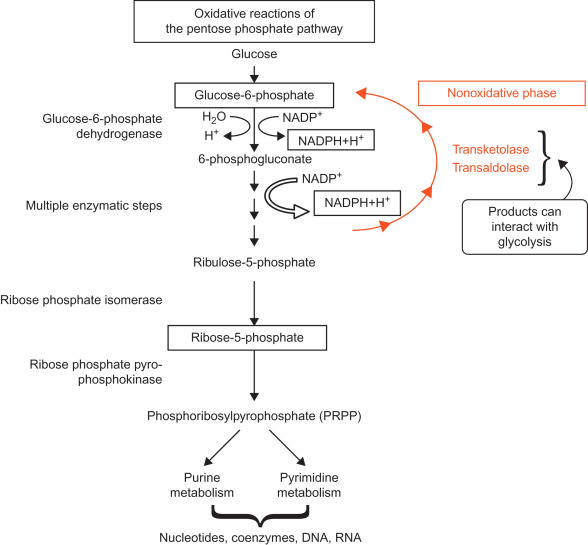 Glycolytic Pathway Ten enzyme-catalysed steps 1. Hexokinase: Glucose is phosphorylated to glucose-6-phosphate using ATP. Magnesium is a cofactor. 2. Phosphoglucose isomerase: Glucose-6-phosphate is isomerized to fructose-6-phosphate. 3. Phosphofructokinase: Fructose-6-phosphate is phosphorylated to fructose-1,6-bisphosphate using ATP. Magnesium is a cofactor. 4. Aldolase: Fructose-1,6-bisphosphate is cleaved into two 3-carbon molecules: dihydroxyacetone phosphate (DHAP) and glyceraldehyde-3-phosphate (GAP). 5. Triose phosphate isomerase: DHAP is converted to GAP. 6. Glyceraldehyde-3-phosphate dehydrogenase: GAP is oxidized and phosphorylated to 1,3-bisphosphoglycerate. NAD+ is reduced to NADH. 7. Phosphoglycerate kinase: 1,3-bisphosphoglycerate transfers a phosphate group to ADP, forming ATP and 3-phosphoglycerate. 8. Phosphoglycerate mutase: 3-phosphoglycerate is converted to 2-phosphoglycerate. 9. Enolase: 2-phosphoglycerate is converted to phosphoenolpyruvate. 10. Pyruvate kinase: Phosphoenolpyruvate transfers a phosphate group to ADP, forming ATP and pyruvate. Magnesium's Role: Magnesium ions play a crucial role in several steps of glycolysis, acting as a cofactor for enzymes like hexokinase and phosphofructokinase. They help stabilize negatively charged phosphate groups during these reactions and are essential for enzyme activity. Key points about the glycolytic pathway: Two phases: The first five steps are considered the energy investment phase, consuming ATP, while the last five steps are the energy payoff phase, producing ATP. Net yield: For each glucose molecule, glycolysis produces a net gain of two ATP and two NADH molecules. Regulation: The enzyme phosphofructokinase is a key regulatory point in glycolysis. Location: Glycolysis occurs in the cytoplasm of cells. .. Glycolysis Hexokinase (HK) Phosphofructokinase (PFK) Magnesium (Mg2+) MgATP2 Phosphoglycerate Kinase Pyruvate Kinase Hexokinase Function: Hexokinase is the first enzyme in glycolysis that phosphorylates glucose, converting it into glucose-6-phosphate. This is an irreversible step, effectively trapping glucose within the cell and committing it to the glycolytic pathway. Glucose-6-phosphatase dehydrogenase (G6PD) deficiency is the most common enzyme deficiency in humans .. Potential Triggers: Medications: Certain medications like antimalarials (primaquine), antibiotics (nitrofurantoin, dapsone, and sulfonamides), and aspirin can trigger G6PD deficiency symptoms. Infections: Infections like hepatitis A, hepatitis B, typhoid fever, and pneumonia can also exacerbate G6PD deficiency symptoms. Naphthalene: This chemical, found in mothballs, is also a known trigger. Fenugreek seeds Fava beans Emotional Stress: Stress can also be a contributing factor. .. https://en.m.wikipedia.org/wiki/Phosphofructokinase https://en.m.wikipedia.org/wiki/Glucose_6-phosphate https://microbiologyinfo.com/glycolysis-10-steps-explained-steps-by-steps-with-diagram/ .. Methylenetetrahydrofolate reductase and psychiatric diseases https://www.nature.com/articles/s41398-018-0276-6 Vicine, Divicine and Isouramil have been implicated as the toxic components of fava beans. https://en.m.wikipedia.org/wiki/Divicine https://en.m.wikipedia.org/wiki/Vicine https://en.m.wikipedia.org/wiki/Heinz_body .. Behavioral and Neurological Changes: Neuroinflammation, changes in neurotransmitter levels (influenced by gut microbiota), and the impact of toxins and metabolites on brain function can lead to a range of behavioral and neurological changes. Conditions linked to gut dysbiosis and BBB dysfunction include: Neurodevelopmental Disorders: Autism spectrum disorder (ASD) Neurodegenerative Diseases: Alzheimer's disease (AD), Parkinson's disease (PD), multiple sclerosis (MS), and amyotrophic lateral sclerosis (ALS) Psychiatric Disorders: Depression, anxiety, and schizophrenia Other conditions: Sepsis-associated encephalopathy and "brain fog" associated with viral infections like COVID-19.
| author | mikewick77 |
|---|---|
| permlink | t02qkb |
| category | intercellular |
| json_metadata | {"app":"hiveblog/0.1","image":["https://images.hive.blog/DQmbSp8ehtiuCGbLyhyoPffj7EXnUbNKJuXYoffidGVHUMh/3-s2.0-B9780123838643000065-f06-27-9780123838643.jpg"],"links":["https://en.m.wikipedia.org/wiki/Phosphofructokinase"]} |
| created | 2025-07-27 20:07:21 |
| last_update | 2025-07-30 21:54:03 |
| depth | 2 |
| children | 0 |
| last_payout | 2025-08-03 20:07:21 |
| cashout_time | 1969-12-31 23:59:59 |
| total_payout_value | 0.000 HBD |
| curator_payout_value | 0.000 HBD |
| pending_payout_value | 0.000 HBD |
| promoted | 0.000 HBD |
| body_length | 4,211 |
| author_reputation | 545,063,717,246 |
| root_title | "Intercellular Homeostasis" |
| beneficiaries | [] |
| max_accepted_payout | 1,000,000.000 HBD |
| percent_hbd | 10,000 |
| post_id | 144,454,453 |
| net_rshares | 0 |
CH3 Methyl Hydrogen Magnesium G6PD Homocysteine potential link between the MTHFR gene and glyphosate exposure, primarily due to the role of MTHFR in detoxification and the potential impact of glyphosate on methylation processes. Magnesium is a vital cofactor in the methylation cycle. Magnesium (Mg2+) is essential for carbohydrate metabolism, acting as a cofactor or activator for numerous enzymes involved in energy production and glucose regulation. It plays a crucial role in glycolysis, the citric acid cycle, and the pentose phosphate pathway, influencing insulin sensitivity and glucose homeostasis. Magnesium deficiency can impair these processes, leading to insulin resistance and potentially contributing to type 2 diabetes. Diabetes can exacerbate amyloid and neurovascular pathology in the brain. Amyloid deposits, including amylin, can accumulate in the brain. Research suggests that glyphosate, a widely used herbicide, may play a role in promoting neuroinflammation and the accumulation of amyloid-beta and tau proteins in the brain. Polymorphism in the context of carbohydrate metabolism refers to variations in DNA sequences (alleles) that affect how the body processes carbohydrates. Polymorphisms are essentially common genetic variations (occurring in more than 1% of the population) that can alter the function of enzymes involved in carbohydrate metabolism. Magnesium ions (Mg2+) play a crucial role in the structure and function of Coenzyme A (CoA) and its derivatives. Magnesium binding to CoA stabilizes its structure and affects its interactions with other molecules, influencing various cellular processes. Specifically, magnesium interacts with the phosphate groups and the adenosine ring of CoA. .. Magnesium (Mg2+) Deficiency, Not Well-Recognized Non-Infectious Pandemic: Origin and Consequence of Chronic Inflammatory and Oxidative Stress-Associated Diseases https://www.cellphysiolbiochem.com/Articles/000603/index.html Mg2+ is needed to feed the electron transport chain with nicotinamide adenine dinucleotide reduced (NADH) and flavine-adenine dinucleotide reduced (FADH2) due to acetyl coenzyme A (acetyl-CoA) requires Mg2+ to enter the tricarboxylic acid cycle. Also, Mg2+ is fundamental to signal transduction processes requiring kinases because almost all transphosphorylation reactions require Mg2+. .. A Magnesium Binding Site And The Anomeric Effect Regulate The Abiotic Redox Chemistry Of Nicotinamide Nucleotides https://chemistry-europe.onlinelibrary.wiley.com/doi/10.1002/chem.202400411 ‘Magnesium’-the master cation-as a drug—possibilities and evidences https://pmc.ncbi.nlm.nih.gov/articles/PMC8249833/
| author | mikewick77 |
|---|---|
| permlink | t041iw |
| category | intercellular |
| json_metadata | {"app":"hiveblog/0.1","links":["https://www.cellphysiolbiochem.com/Articles/000603/index.html"]} |
| created | 2025-07-28 13:01:42 |
| last_update | 2025-07-30 01:28:24 |
| depth | 2 |
| children | 1 |
| last_payout | 2025-08-04 13:01:42 |
| cashout_time | 1969-12-31 23:59:59 |
| total_payout_value | 0.000 HBD |
| curator_payout_value | 0.000 HBD |
| pending_payout_value | 0.000 HBD |
| promoted | 0.000 HBD |
| body_length | 2,671 |
| author_reputation | 545,063,717,246 |
| root_title | "Intercellular Homeostasis" |
| beneficiaries | [] |
| max_accepted_payout | 1,000,000.000 HBD |
| percent_hbd | 10,000 |
| post_id | 144,480,503 |
| net_rshares | 0 |
Castor (Hydrocarbon) Magnesium (Chloride) Glycine (Nitrogen) DMSO (Sulfur) Magnesium Acetyl Taurate Magnesium Threonate Magnesium Bisglycinate .. Harvesting Magnesium Sea Salt Evaporation Extraction
| author | mikewick77 |
|---|---|
| permlink | t0agri |
| category | intercellular |
| json_metadata | {"app":"hiveblog/0.1"} |
| created | 2025-08-01 00:16:27 |
| last_update | 2025-08-01 04:11:15 |
| depth | 3 |
| children | 0 |
| last_payout | 1969-12-31 23:59:59 |
| cashout_time | 2025-08-08 00:16:27 |
| total_payout_value | 0.000 HBD |
| curator_payout_value | 0.000 HBD |
| pending_payout_value | 0.000 HBD |
| promoted | 0.000 HBD |
| body_length | 206 |
| author_reputation | 545,063,717,246 |
| root_title | "Intercellular Homeostasis" |
| beneficiaries | [] |
| max_accepted_payout | 1,000,000.000 HBD |
| percent_hbd | 10,000 |
| post_id | 144,582,510 |
| net_rshares | 0 |
Relationship between magnesium ions (Mg²⁺), amyloid aggregation, and prion-like mechanisms Studies show a complex relationship where Mg²⁺ can modulate amyloid-β (Aβ) aggregation in various ways. Some studies report Mg²⁺ promoting the formation of shorter, fragmented amyloid proteins, while others suggest it decreases β-sheet content, leading to aggregation-resistant states. High intracellular Mg²⁺ can promote α-secretase-mediated cleavage of the amyloid precursor protein (APP), leading to clearance, while low levels increase Aβ secretion. Mg²⁺ can induce tau aggregation in vitro, but in AD models, it can also reduce tau hyperphosphorylation by increasing GSK-3β phosphorylation. Mg²⁺ may mediate interactions between intrinsically disordered nascent protein chains and ribosomes, potentially influencing folding and aggregation in the early stages of protein life. Mg²⁺ can also stabilize the secondary structure of some proteins and inhibit their aggregation, as shown in studies on bovine serum albumin. The strong binding affinity of noble metals for the thiol moiety of cysteine has been exploited in materials synthesis from amyloid systems. Magnesium ions (Mg²⁺) are crucial for RNA stability and folding, primarily by neutralizing the negative charges on the phosphate backbone of RNA, which allows for the formation of tertiary structures. Mg²⁺ binding stabilizes RNA by reducing electrostatic repulsion between phosphate groups, facilitating the compaction of RNA molecules and stabilizing their folded conformations.
| author | mikewick77 |
|---|---|
| permlink | t0bkgg |
| category | intercellular |
| json_metadata | {"app":"hiveblog/0.1"} |
| created | 2025-08-01 14:33:51 |
| last_update | 2025-08-01 19:57:06 |
| depth | 2 |
| children | 0 |
| last_payout | 1969-12-31 23:59:59 |
| cashout_time | 2025-08-08 14:33:51 |
| total_payout_value | 0.000 HBD |
| curator_payout_value | 0.000 HBD |
| pending_payout_value | 0.000 HBD |
| promoted | 0.000 HBD |
| body_length | 1,544 |
| author_reputation | 545,063,717,246 |
| root_title | "Intercellular Homeostasis" |
| beneficiaries | [] |
| max_accepted_payout | 1,000,000.000 HBD |
| percent_hbd | 10,000 |
| post_id | 144,593,828 |
| net_rshares | 0 |
 hiveblocks
hiveblocks